

The Cost of Travel in Australia: My 2024 Budget Breakdown
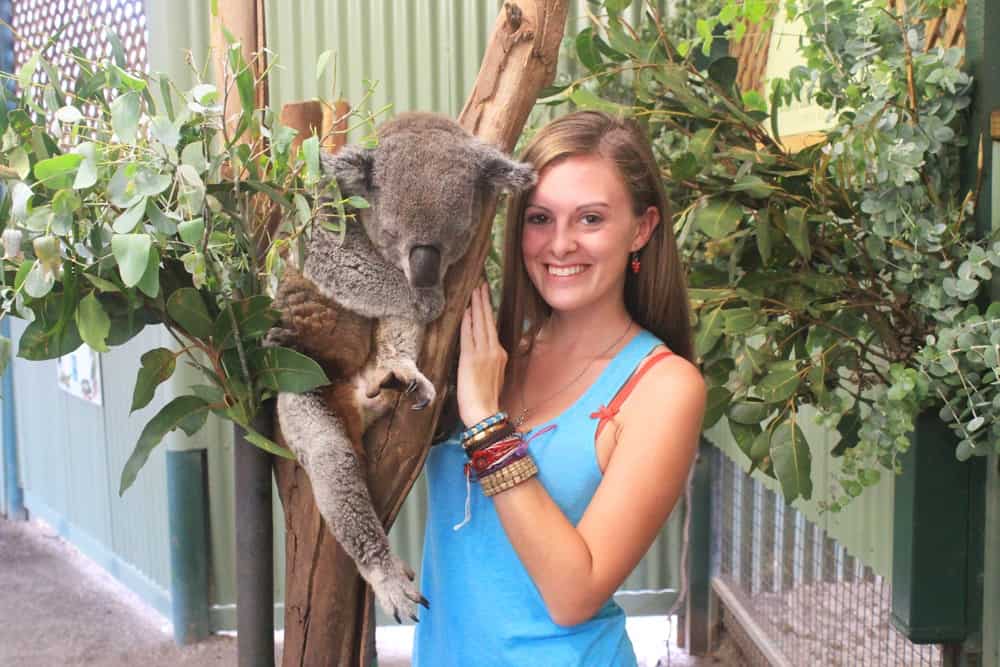
I’m so excited to be sharing how much it costs to travel in Australia. Not only is this country home for me (I moved to Melbourne in 2021!), but I’ve also spent a significant amount of time travelling across its beautiful landscapes.
There was the lengthy road trip from Brisbane to Melbourne, the two weeks I spent hiking in Tasmania, the week I dedicated to snorkelling the Great Barrier Reef, and even the five times I’ve tackled the Great Ocean Road (what can I say? I love it!).
My partner’s family live in Melbourne, and before moving here to join them, we used to spend a month in this vibrant country every year, for over a decade, celebrating Christmas Down Under and visiting as many hipster cafes as possible.
Needless to say, I’ve seen a hell of a lot of this country over the years and have visited on every budget imaginable: as a backpacker with absolutely no spare cash, as a solo traveller on a mid-range budget, and as part of couple on a romantic luxury vacation.
In other words, I’m perfectly placed to share exactly how much you can expect to spend on a trip to Australia! Whether you’ll be living the Working Holiday dream and driving a beaten-up campervan along the East Coast, taking that once-in-a-lifetime trip to Oz post-retirement, or simply desperate to make the most of your two-week vacation to Australia, I have you covered.
Today, I’m going to be sharing exactly how much you can expect to spend on a trip to Australia.
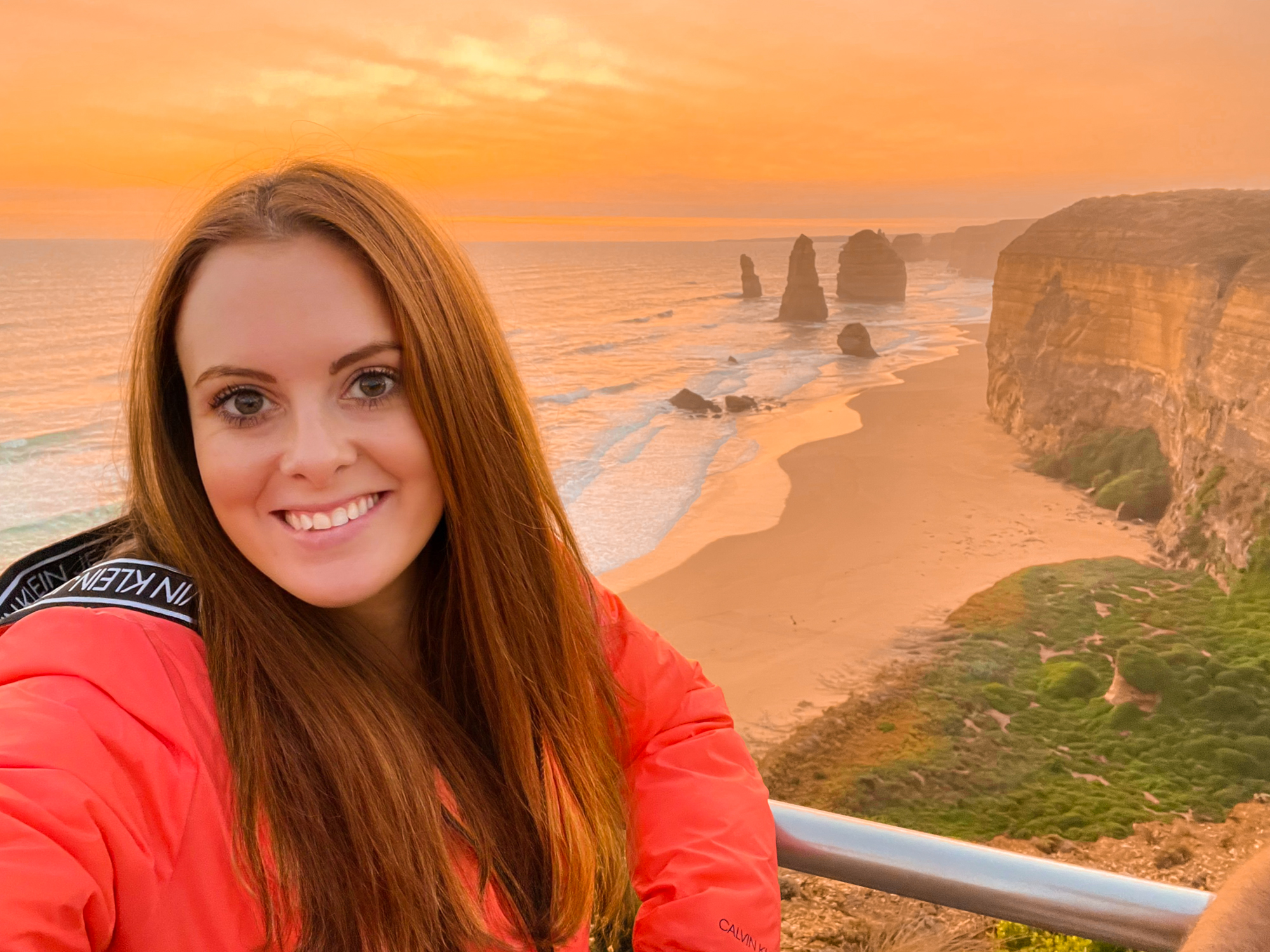
The Cost of Accommodation in Australia
You can visit Australia on any budget, from a $40 a night hostel in Cairns that’s highly-rated on Booking to the spectacular $500 a night Four Seasons Sydney , which offers up the best views of the Sydney Opera House in the city.
(Those prices are in AUD, by the way. 1 AUD is equal to 0.60 USD/EUR, or 0.53 GBP.)
But first things first; we have to get this out of the way. Yes, Australia is expensive. It’s incredibly expensive, in fact. And — like everywhere else in the world — prices have only skyrocketed as the pandemic has receded.
Despite this, there is still good value to be found. Because whether you’re travelling as a solo backpacker on a shoestring, as part of a couple on a mid-range budget, or as a family looking for a little luxury, value is the one thing you’re going to be looking for. That doesn’t necessarily mean cheap, of course, but it does mean staying in some incredible places.
So let’s take a look at accommodation. To start with, I’m going to cover the cheapest way to travel across the country.
If you’re on the tightest of tight budgets, there are several options that’ll land you with free accommodation while you’re in the country. Courchsurfing helps you to connect with locals by sleeping on spare sofas in their homes. It doesn’t cost a penny to do so and is a fantastic way to gain an insight into Australian daily life away from the tourists. There are over 300,000 hosts in Australia, so you shouldn’t find it too hard to connect with somebody likeminded.
Housesitting is a more upmarket way to avoid paying for accommodation, as it’s aimed at mid-range and luxury travellers. You’ll be looking after homes (and usually pets) while their owners are on holiday, and the houses can be extremely luxurious (I’ve had friends housesit a castle before!). This option works best if you don’t have fixed travel plans, as you’ll be agreeing to dates that the owners set. It’s always worth taking a look at the site, though, just in case somebody’s vacation dates happen to coincide with yours; there’s usually several hundred housesits to browse through in Australia at any one time.
Finally, when it comes to free accommodation, you could take a look at WorldPackers in Australia , where you’ll be able to volunteer for locals in exchange for food and board. There are some seriously cool options available on the site right now, from helping out at a local surf school to lending a hand at building an eco-sanctuary in the rainforest. Readers of this site get a $10 discount for WorldPackers with the promo code neverendingfootsteps .
If you’re not looking to travel for free, though and just want a clean and comfortable room to sleep in, there are plenty of great budget options, too.
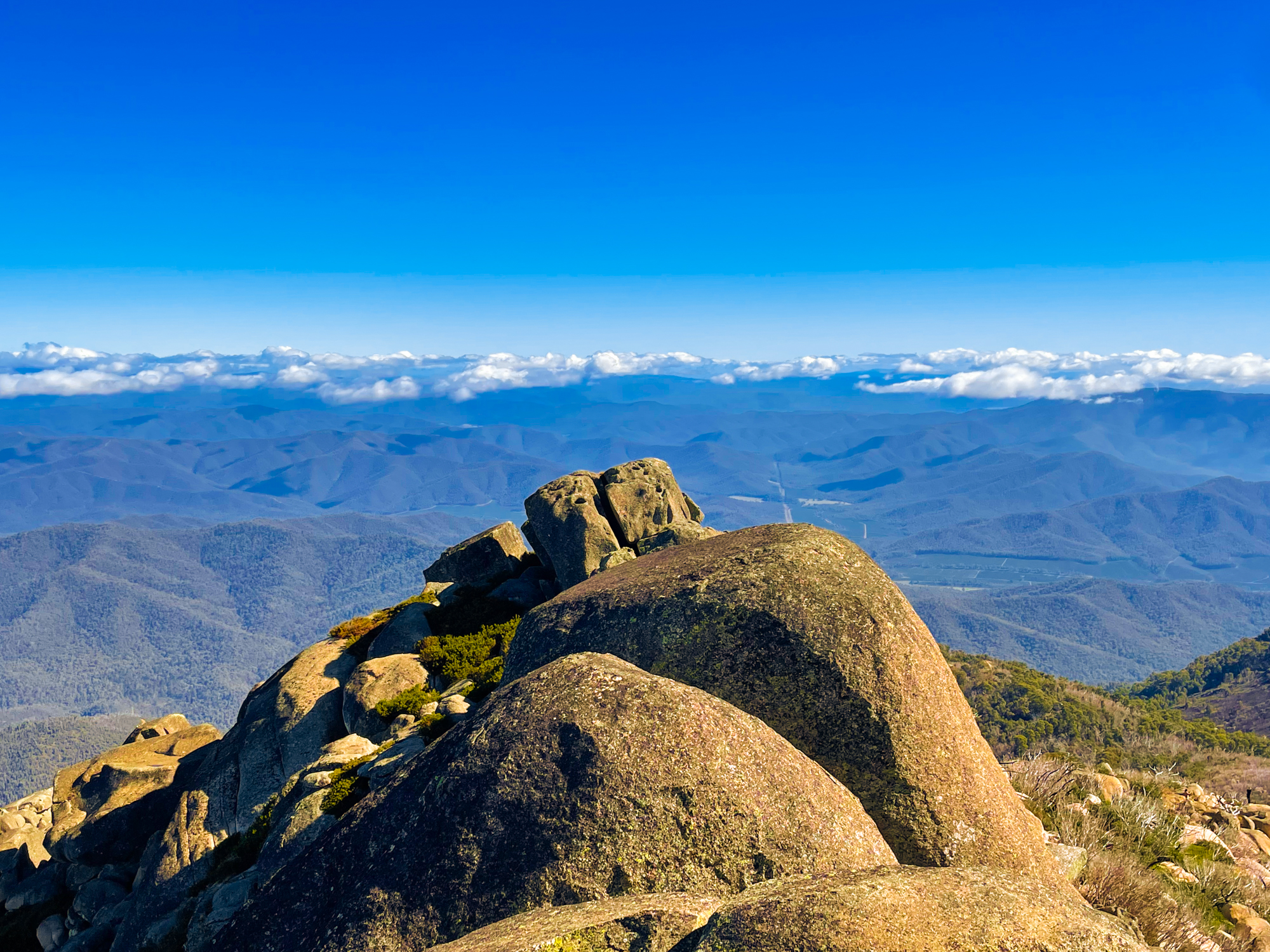
The Best Hostels in Australia
One of the most affordable ways to explore Australia is by staying in a hostel.
During my first visits to Australia, I was in my early twenties and living the backpacker dream; attempting to save as much money as possible. I was impressed by the quality of the hostels in Australia, as well as how many there were to choose from. This country is practically a mandatory stop on backpackers’ round-the-world trips, so there’s cheap accommodation aplenty in every tourist destination.
Here’s some of my favourite spots in the country:
- My favourite hostel in Sydney is easily the epic Sydney Harbour YHA — just wait until you see the views of the Sydney Opera House from the rooftop terrace! It’s in a perfect location for exploring the city, the staff are amazing, and breakfast is included. You’ll pay $70 per night for a dorm bed, or $200 a night for a private room with en-suite.
- In Melbourne , you can’t get better than the Space Hotel — I recommend my friends here whenever they come to visit! Here, dorm rooms are priced at just $65 a night and private rooms are $160 per night . In a town where most hostels are rated poorly, this well-reviewed spot is a no-brainer.
- You’ll likely be heading to Brisbane while you’re in Australia, and if so, I recommend Breeze Lodge , which has dorm rooms for $55 night . The staff here are wonderful and really helped me make the most of my time in town. The rooms were spotless, the vibes immaculate, and the beds comfortable. You can’t ask for more than that!
- The Gold Coast is home to the Surf Inn , which is one of my favourite spots in the country. Here, dorms are priced at $65 a night . No wonder it’s the best-rated budget accommodation in town. What I loved most about this place is its lovely swimming pool, the fantastic free breakfast, and its close proximity to the beach. Truly, this is one of the best value spots in all of Australia.
- I’m a massive fan of Perth . I chose to stay in Spinners Hostel during my most recent visit and came away so impressed with the rooms. Not only is it inexpensive at $50 a night for a dorm, but the beds are comfortable, the rooms modern and spacious, and the location incredible (I love the Northbridge neighbourhood so much!)
Overall, then, you can see that you can expect to spend around $60 a night for dorms in Australia, and around $160 a night for a private double room in a hostel. See what I mean about Australia being a little bit pricey?
Well, now it’s time to move on to the cost of hotels in Australia. Because what if you’re not a budget traveller and just want to stay in a lovely, well-reviewed hotel or guesthouse that’s good value for money and has all the things you need from a place to lay your head? I’ve got you!
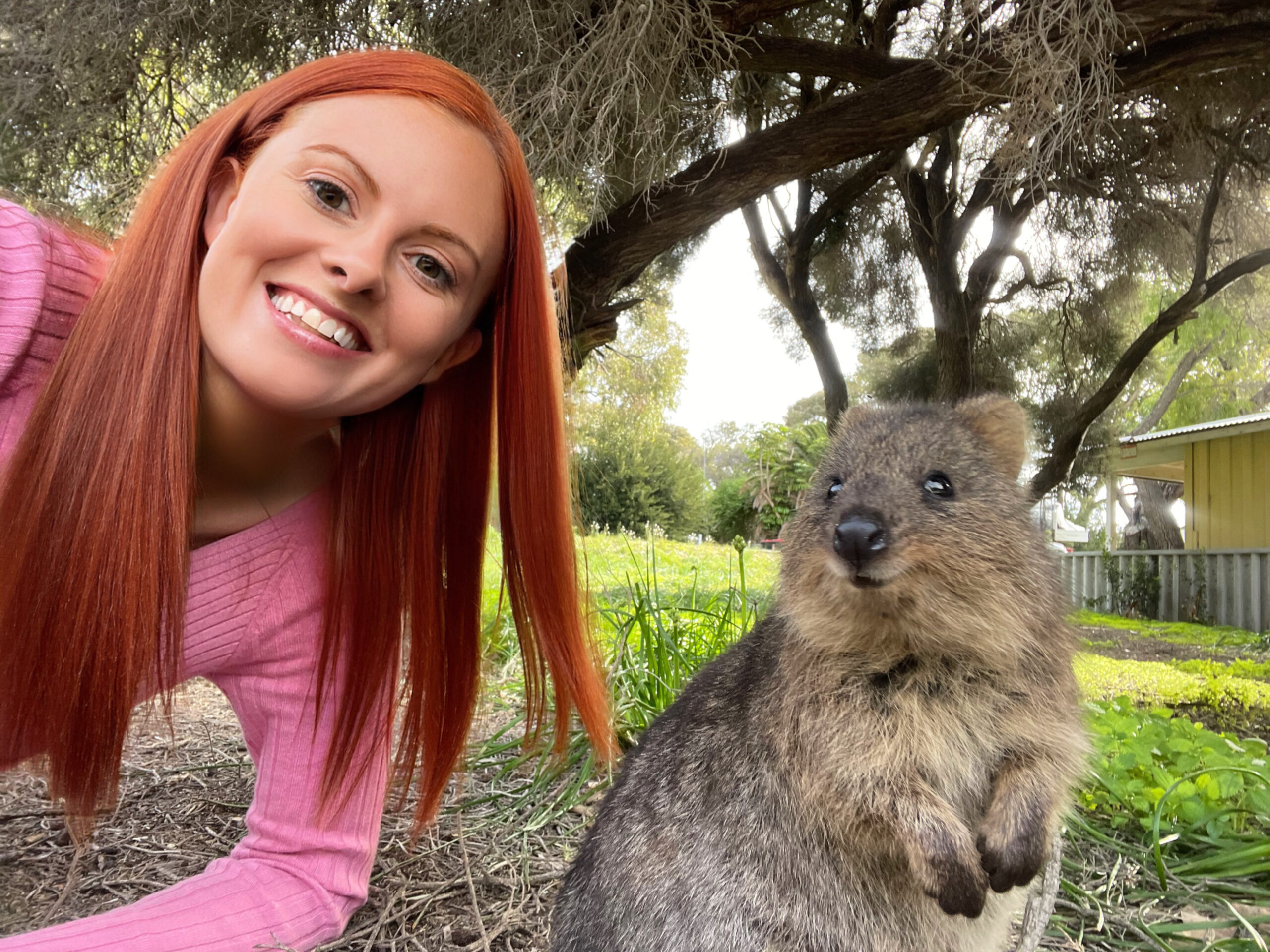
My 2024 Recommendations for Hotels in Australia
It’s time to start looking at hotels.
In this section of my budget breakdowns, I always like to share my personal recommendations for accommodation within a country. That way, you get to browse through my favourite properties in order to make your trip planning easier, while also gaining an insight into how much you can expect to spend. And trust me: I spend hours researching each and every hotel that I stay in; I know which places offer the best value in Australia.
My biggest tip? When you head to Booking.com to find a hotel, ignore the default results that are shown whenever you search for properties in a destination. That initial list is simply a rundown of all of the hotels that pay Booking the highest commission[!], some of which have some pretty poor write-ups. Instead, click the “sort by” dropdown menu above the search results and choose to sort the properties by “Top Reviewed”. That way, you’ll be able to see which hotels are actually the best option for you.
All that to say, as I’ve been roaming around Australia, I’ve been making a note of the best accommodation in every city, putting in the hard work so you don’t have to. Here’s where I recommend staying (these are predominantly mid-range budget options, in excellent locations with the best reviews). Again, all prices are in AUD:
Sydney: Medusa Hotel ( $230 per night ) — Located in one of my favourite Sydney neighbourhoods — the eclectic Darlinghurst — Medusa hotel is close to so many of the best restaurants and cafes in the city’s inner east. You’re a 30 minutes walk from the CBD (and many of the tourist attractions) so you’ll pay a little less for accommodation than you would if you were right in the heart of the city; an added bonus. On top of that, the property itself is super-quiet and peaceful, tastefully decorated, and with a lovely courtyard. I stay here every time I visit Sydney.
Melbourne: ZaGame’s House ( $260 a night ) — Fun fact! When the pandemic struck, I was in Melbourne as the city went into lockdown. Without a home, I spent nine months living out of hotels and Airbnb apartments, trying so many different Melburnian neighbourhoods on for size. In other words, I know this city, and I know the best places to stay. I love ZaGame’s House for its location — right in the heart of the incredible Carlton neighbourhood, where you’ll find the Queen Vic Market (my favourite food market in the world!) and still be within walking distance of the main attractions in town. You’ve got beautifully designed rooms, amazing staff, a well-equipped gym, and one of the most comfortable beds ever. This is one of my favourite places in Melbourne.
Brisbane: The Inchcolm by Ovolo ( $275 a night ) — Take a look at the photos of the Inchcolm and tell me you don’t want to immediately book a stay there! The decorations and artwork are gorgeous, and the rooms are clean, spacious, and so comfortable. For me, though, the main reason to stay at the Inchcolm is the phenomenal staff members! No matter whether you’re looking for travel advice or a cocktail recommendation in the bar, they’re only too happy to drop everything and help you out. Throw in free access to the Fitness First gym across the street and you’ve got yourself everything you need for your time in Brisbane!
Gold Coast: Meriton Suites Surfers Paradise ( $235 a night ) — To me, staying on the Gold Coast is synonymous with being in a high-rise hotel, gazing down on a stretch of pristine white sand that seems to go on forever. Well the Meriton Suites in Surfers Paradise offers exactly that and I couldn’t stop swooning over its views. You’re located just steps away from the beach, the rooms are clean and spacious, with fully-equipped kitchens, and you’ve got access to an indoor and outdoor pool, jacuzzi, sauna, gym… the list goes on. This place is an absolute gem!
Cairns: Travellers Oasis ( $130 a night ) — A cheaper option for Cairns, but when the accommodation is so great, staying here is a no-brainer. Travellers Oasis has the best outdoor area, with a jungle-esque garden area, access to a BBQ, and a refreshing swimming pool (100% needed in the sweltering humidity of Cairns!) Rooms are well-cleaned and comfortable, with air conditioning to help keep you cool. It offers up a relaxed vibe to travellers, thanks to the warm and welcoming owners. As an added bonus, it’s only a five-minute walk from all of the best restaurants in town.
Perth: Alex Hotel ( $230 a night ) — There’s no getting around it: Perth is one of the most expensive cities in Australia for tourists, but that doesn’t mean there aren’t bargains to be found. In particular, I’m a huge fan of Alex Hotel, in the city’s CBD. Not only is it only a 15-minute walk from my favourite restaurant in the city (Ramen Keisuke Tonkotsu King: if you’re a ramen fan, you have to go!), but the interior is beautifully decorated, the breakfasts are impressive, and the rooftop terrace offers up some great city views.
Hobart: The Lodge on Elizabeth Boutique Hotel ( $196 a night ) — The Lodge is a wonderful historic home (one of the oldest buildings in Hobart!) that’s located just a 10-minute walk into the centre of the city. What I loved about it was how homely it feels. It’s like coming back to a cosy home at the end of a long day of exploring — and there’s no better feeling than that! You can expect free parking, tons of travel advice from the owners, delicious breakfasts, and even free glasses of port in the communal lounge. Enjoy!
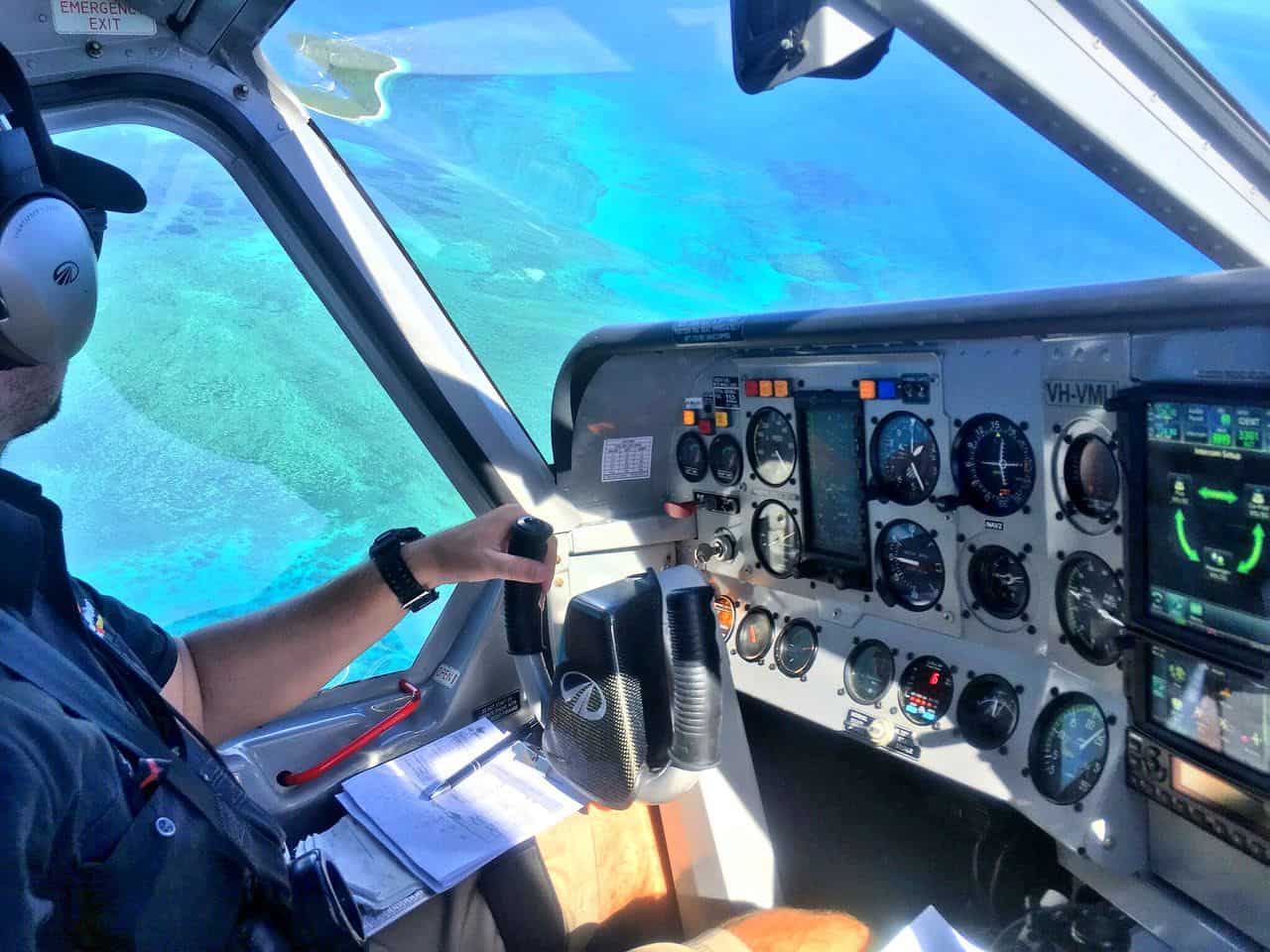
The Cost of Transportation in Australia
One thing to keep in mind is the sheer size of this country! It’s around the same size as the continental U.S., so if you wouldn’t expect to be able to see the entirety of the United States in two weeks, it’s unrealistic to hope to do the same in Australia.
With the vast majority of Australia’s attractions scattered along its coastline, driving distances can therefore be huge. My road trip from Brisbane to Melbourne involved driving well over 1,000 miles (1600 km), while Sydney and Perth are separated by a whopping 2,500 miles (4,000 km). To drive from Brisbane to Cairns, you’ll spend 19 hours behind the wheel and still be in Queensland.
Because of this, it’s often easier, definitely faster, and usually cheaper, to fly between Australian cities. Still, don’t expect flights to always be speedy: it takes a whopping five hours to fly from Sydney to Perth!
If you’re short on time, though, it’s well worth taking a look at the offerings from the local airlines, as flights within Australia can sometimes even cost less than taking a bus. As an example, I paid just A$40 for a Jetstar flight from Cairns to Melbourne, skipping the 31 hour[!] drive time. You’ll most likely be flying with Qantas, Jetstar, or Virgin Australia; Qantas has the nicest planes; Jetstar is usually cheapest. I recommend using the flight comparison tool, Skyscanner , to find the best deals.
One of my top tips for saving money in Australia is to check the prices of flights for smaller airports that are located on a city’s outskirts. For example, Avalon Airport is just 15 miles from Melbourne’s main airport of Tullamarine, but usually offers cheaper flights. It’s nearly always less expensive to fly into the Gold Coast instead of Brisbane; two cities that are less than 50 miles apart.
One final thing: last year, the budget airline Bonza launched in Australia, offering very cheap flights for a limited number of destinations in the country (they have neither SA or WA flights nor Sydney yet). The catch? The only way to see their prices of flights is to download the “Fly Bonza” app. Yeah, it’s kind of a pain in the ass. Still, if you’re looking for a bargain, it might be worth the added annoyance for you to take a quick look; their prices are often half what the major carriers are charging. (Melbourne to Alice Springs is $169 direct, for example, in comparison to Jetstar/Virgin’s $350 with a layover in Adelaide).
With all that being said, there’s nothing quite like overlanding across Australia, and this country is well set-up for a road-trip. I’ve road-tripped four times throughout the country, from the Great Ocean Road to the entire East Coast.
If you’re on a tight budget, the easiest way to see the country is to buy a campervan when you touch down in Australia — this is how backpackers have been exploring Australia for decades . Then, when you’ve finished your road trip, you simply sell your campervan to a brand new arrival in the country. It works out to be a lot cheaper than renting (as long as you don’t total the car!) as you’ll make most of your money back at the end of the trip. Some people even manage to sell their campervan for more than they paid for it, completely eliminating all transportation costs from their trip!
You can find campervans for sale on Gumtree and Facebook (try the groups Backpacker Campervans for Sale and Campervan Sales Australia ). In general, there’ll always be a cheap and cheerful option for 10,000 AUD (6,500 USD/EUR or £5,300) available. For something with lower mileage and a more comfortable set-up, you’ll be looking at around 25,000 AUD , although obviously the sky’s the limit! If you want a bougie, Instagrammable, #vanlife set-up, you’ll be looking at as much as 70,000 AUD for your camper.
If buying isn’t for you, then renting is still a great option, whether it’s a campervan to road trip around the country, or settling on an economy car to save money. Personally, I’ve always nearly always rented a car while road-tripping Australia, so that I could stay in hotels along the way.
Regardless of which method best suits you, car rental prices can range from $50 a day for an economy car, all the way up to $150 — I always book through RentalCars.com when hiring a car. For campervans, it’s best to go with Jucy or Travellers Autobarn — both companies have a range of vehicles, including brand new ones, that are competitively priced. You’ll expect to pay between $120 and $230 a day , depending on how high-end the vehicle is.
Public buses are a great way to get around the country — in my option, the best way if you’re on a tight budget — and they’re seriously cheap if you’re going to be traversing the entire country. Greyhound is your best bet here, as they cover most of Australia and at very reasonable rates. If you book far enough in advance, you can sometimes grab a ride for just $1 !
Take a look at Greyhound’s Whimit passes, too, if you plan on travelling predominantly by bus. These are easily the cheapest way to travel across Australia. The Whimit passes give you unlimited travel across Australia; you can undertake any bus route of any length at any time over any travel period. Prices are as follows:
$665 for 90 days of travel works out to just $7.39 per day , which is so much cheaper than renting your own car and paying for petrol!
I’ll briefly mention interstate trains here, as there are a few of them in Australia, but they make for a pretty expensive option. It’s usually way cheaper to take the bus or fly between stops than to take the train. For example, the famous Ghan train, which runs between Adelaide and Darwin, takes you across the heart of Australia over three days, living in luxury and gazing out at that iconic Outback scenery. This isn’t a trip for the budget travellers, however: a three-day trip on the Ghan comes in at a whopping $3000 . Per person . Yikes!
I do want to give a specific shout-out to the cost of trains within the state of Victoria, however! They’re incredibly affordable here. In fact, you’ll never pay more than $9.20 for any train ride, even if its a multi-hour journey, taking you from one side of the state to the other! It makes day-tripping cheap and feasible for those of you who don’t want to drive.
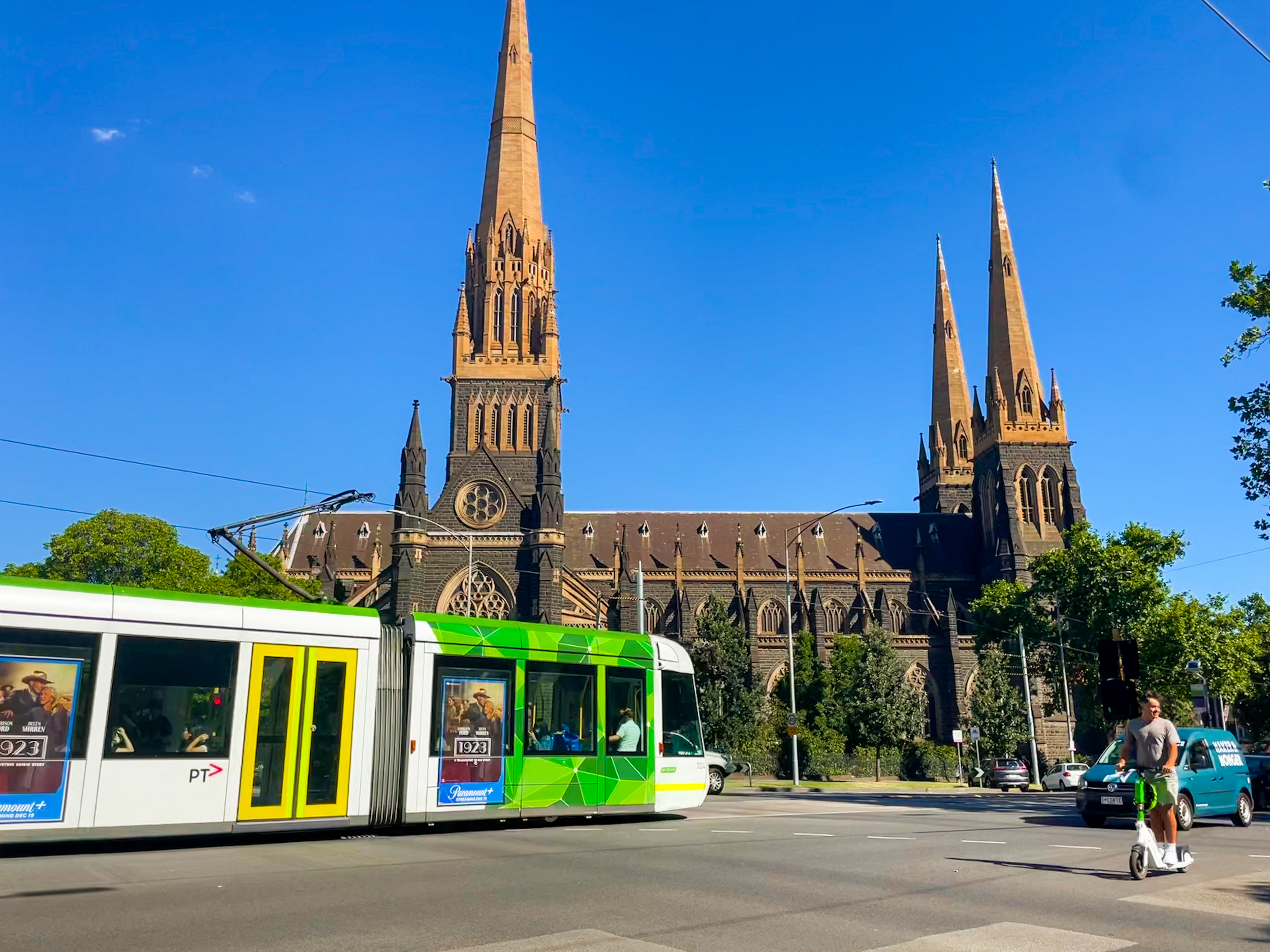
Within the cities themselves, you’ll find that public transport is reasonably priced. Unsurprisingly, Sydney and Melbourne have the best public transport accessibility in Australia, followed by Perth and Brisbane.
Buses, trains, and ferries operate in the vast majority of Australian cities, and you’ve also got trams in Melbourne and light railways in Sydney, Adelaide, Canberra, and the Gold Coast. There’s even a metro system in Sydney and Adelaide! We do also have Uber here in Australia, which makes getting around a breeze. I generally pay around $50 for a 30 minute drive.
Needless to say, there’s lots of ways to get around if you won’t have a car. To give some examples of prices:
In Sydney, you’ll pay (depending on time of day and distance travelled) $4-6 for a bus, $2-11 for a train, $7-10 for a ferry, or $4-5 for a light-rail journey.
In Melbourne, public transport fares start at $3.30 , and there’s a $10 cap on daily public transport fares, so you’ll never pay more than that per day, no matter how many trains, trams, or buses you take. There’s also a free tram zone in the heart of the city, where you won’t pay anything at all!
In Brisbane and the Gold Coast, transportation fares range between $3 and $22 , based on distance, although you’re unlikely to pay as much as $22 , as that’s the cost of travelling 170 km to Gympie (something a tourist is unlikely to do!).
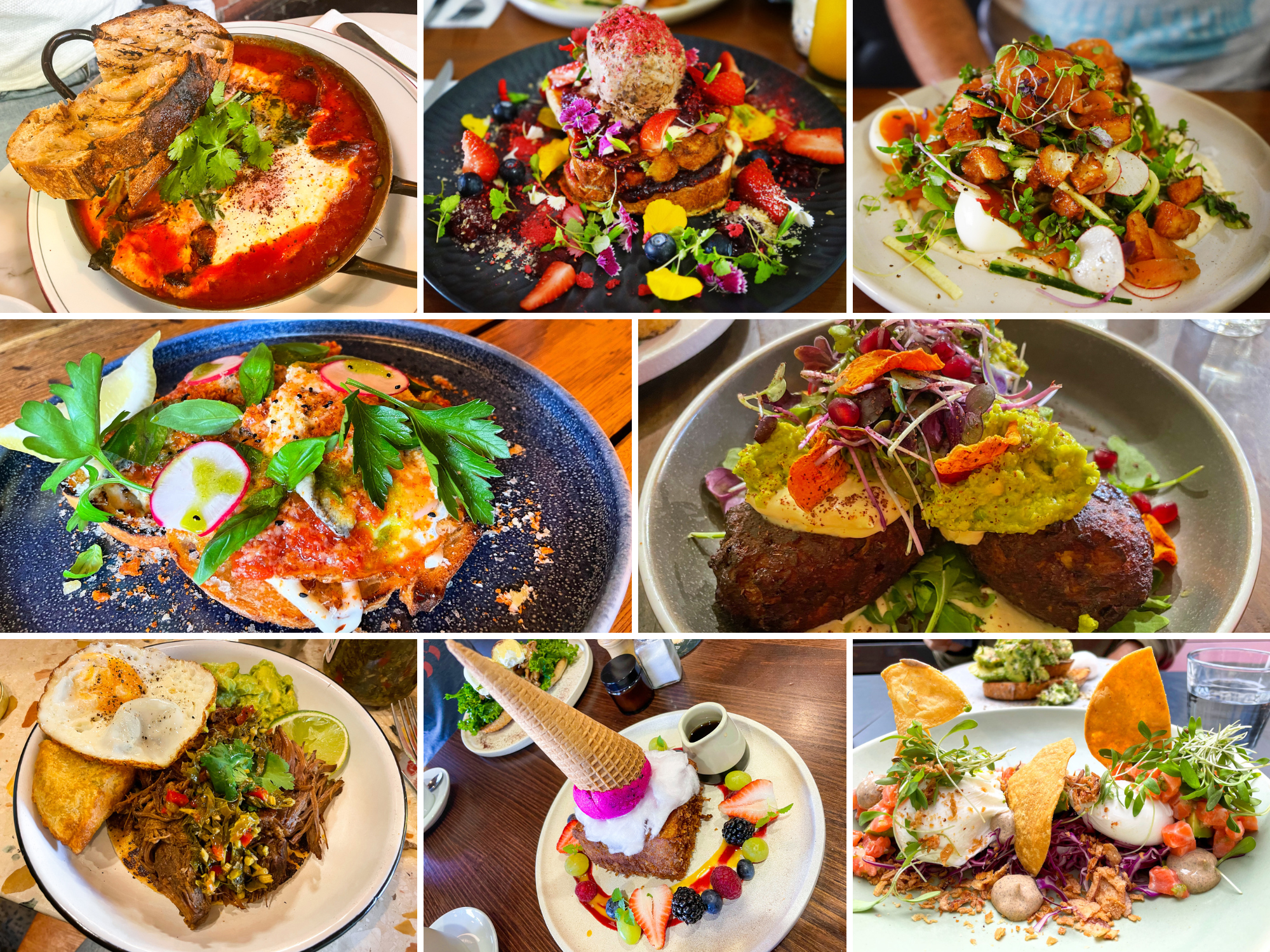
The Cost of Food in Australia
When you ask me about the food in Australia, there’s one thing that comes to mind: brunch.
Australian breakfasts are the absolute best in the entire world, with Melbourne offering up the tastiest versions . From Vegemite on toast to avocado on toast (called smashed avo), Australia is all about bringing new breakfast dishes to the world. But the brunches are on a whole different level, with a multitude of elaborate ingredients and flavours. If I was only able to eat out for one mealtime in Australia? It would definitely be for breakfast.
Like absolutely everything in Australia, food is relatively expensive — particularly eating out in restaurants. I can easily spend $20-30 on every single meal, so if you’re hitting up cafes and restaurants for all three meals, you can easily find yourself spending $100 a day just on food. The food is fantastic, though, so if you have the cash, it’s absolutely worth digging into Australia’s food scene.
“Throw a shrimp on the barbie!” This iconic line is what most visitors to Australia think of when it comes to food, but fun fact: I’ve never once seen — let alone eaten! — a shrimp on the barbecue! Still, BBQing is a huge deal in Australia, and it’s a great way to keep your costs down. Once of my favourite things about Australia is that many of the parks are home to free public barbecues! It makes for such a cheap meal: hit up the local supermarket for some meat, then head to the park to cook for yourself. You’ll nab yourself a meal for less than $10 and have a cultural experience while you’re at it!
Kangaroo? Absolutely! You can buy kangaroo meat from supermarkets (I like kangaroo sausages) and order kangaroo from many restaurants. It’s not a particularly exciting meat to eat, as it just tastes like a cross between beef and venison, but hey, if you eat meat and want to try something new, it’s definitely worth a sample. While you’re trying new meats, I recommend hitting up a fish and chip shop while you’re travelling Australia’s coastline: while you’re there, make sure to order flake: it’s shark!
While eating out in Australia can be expensive, it’s not too pricey to buy from supermarkets. If you’re backpacking or looking to save money, then, aim to have your breakfasts and lunches from the supermarkets: you’ll pay $1 for a 500g of pasta and $2 for some pasta sauce, for example, or $1 for a loaf of bread and $1 for some butter. Not very exciting or nutritious, no, but if you’re prioritising seeing as much as possible, you can see how it’s easy to keep costs low.
Australia is a drinking society, offering up booze from the infamous goon (boxed wine that’s $10 for 5 litres) to a high-end wine from the Adelaide wine region (easily $50). A beer in a restaurant can cost around $8, and a cocktail in a fancy bar can easily come in at $18. When it comes to alcoholic options, coffee comes in at $3-4, and even a can of soda works out to be $3!
The Cost of Activities and Entrance Fees in Australia
When it comes to travel in Australia, there are so many famous activities and attractions to add to your itinerary. The only downside of this, of course, is that — yet again! — they come at a price.
The greatest attraction in Australia is the magnificent Uluru: that gigantic red rock in the centre of the country. I highly recommend checking it out while you’re in Oz, but it’s important to keep in mind that its location can make for a lengthy and expensive trip. The first expense is getting there: if you have your own wheels, it’s well worth making the drive through the Outback, but if that sounds like an intimidating journey, you’ll be flying into Alice Springs instead. Flights are typically between $300 and $400 for a one-way ticket; $500 to $800 for a return ticket. On top of that, you’ve got the entrance fee ( $38 for three days), the cost of a tour (around $300 for day trip), and any special experiences ( $200 for a 25-minute helicopter ride ; $180 for a base walk, full day in the park, and sunset BBQ ).
Speaking of expensive experiences, I absolutely loved the time I spent out on the Great Barrier Reef. It was incredible! But the main thing to know is that if you want to see healthy, live coral, you need to jump on a liveaboard, which means you need to spend at least one night out on the water. This additional time allows you to travel away from the day-trippers, who spend their days observing dead, bleached coral. It is pricey, but this was one of the best experiences I’ve had in Australia (and I went in with low expectations!). We went with Reef Encounter (the best company in Cairns) and paid $1,600 for two nights on board. It was truly, truly incredible and I can’t recommend it highly enough.
I also took a scenic flight over the Great Barrier Reef with GLS Aviation and paid $300 for two people to take a 40-minute flight. I wrote about this experience in-depth on my site — it was amazing! And so valuable to be able to see the reef from above. It really helped to put its size into perspective for me.
And finally, don’t forget the entrance fee to Australia itself! Fun fact: I’ve managed to forget to apply for a visa for Australia twice over the past decade, and both times, it’s caused me an inordinate amount of stress and panic. Yes, as soon as you book your flights to Australia, you’re going to want to apply for an ETA (Electronic Travel Authority) in order to enter the country. Don’t forget! I use iVisa for my ETAs for Australia and pay $20 each time.
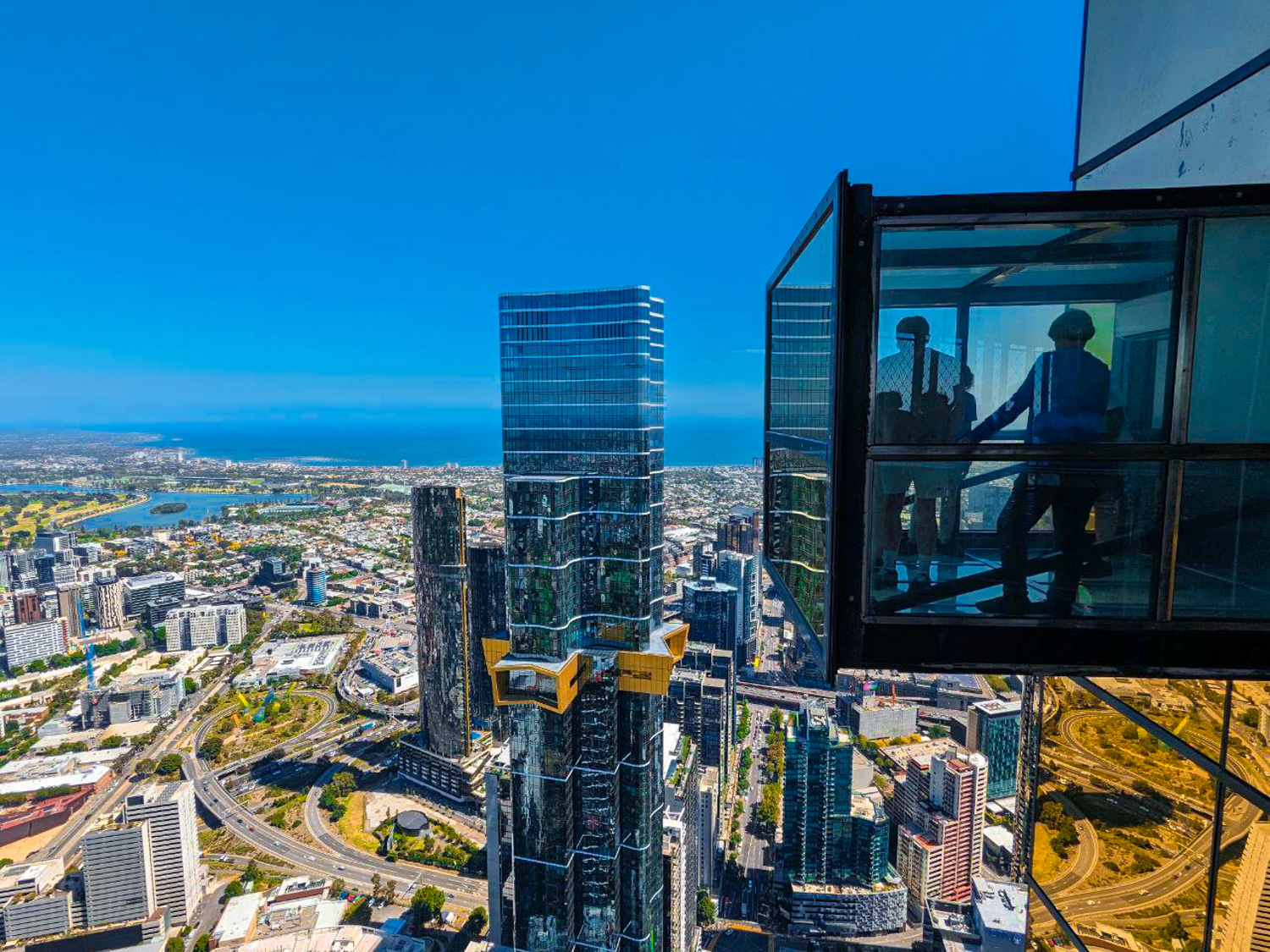
Don’t You Dare Forget About Travel Insurance!
Travel insurance : If you’ve read any other posts on Never Ending Footsteps, you’ll know that I’m a great believer in travelling with travel insurance. I’ve seen far too many Go Fund Me campaigns from destitute backpackers that are unexpectedly stranded in a foreign country after a scooter accident/being attacked/breaking a leg with no way of getting home or paying for their healthcare. In short, if you can’t afford travel insurance, you can’t afford to travel. These costs can quickly land you with a six-figure bill to pay at the end of it.
Travel insurance will cover you if your flight is cancelled and you need to book a new one, if your luggage gets lost and you need to replace your belongings, if you suddenly get struck down by appendicitis and have to be hospitalised, or discover a family member has died and you need to get home immediately. If you fall seriously ill, your insurance will cover the costs to fly you home to receive medical treatment.
I use SafetyWing as my travel insurance provider, and recommend them for trips to Australia. Firstly, they’re one of the few companies out there who will actually cover you if you contract COVID-19. On top of that, they provide worldwide coverage, don’t require you to have a return ticket, and even allow you to buy coverage after you’ve left home. If you’re on a long-term trip, you can pay monthly instead of up-front, and can cancel at any time. Finally, they’re way cheaper than the competition, and have a clear, easy-to-understand pricing structure, which is always appreciated.
With SafetyWing, you’ll pay $1.50 a day for travel insurance.
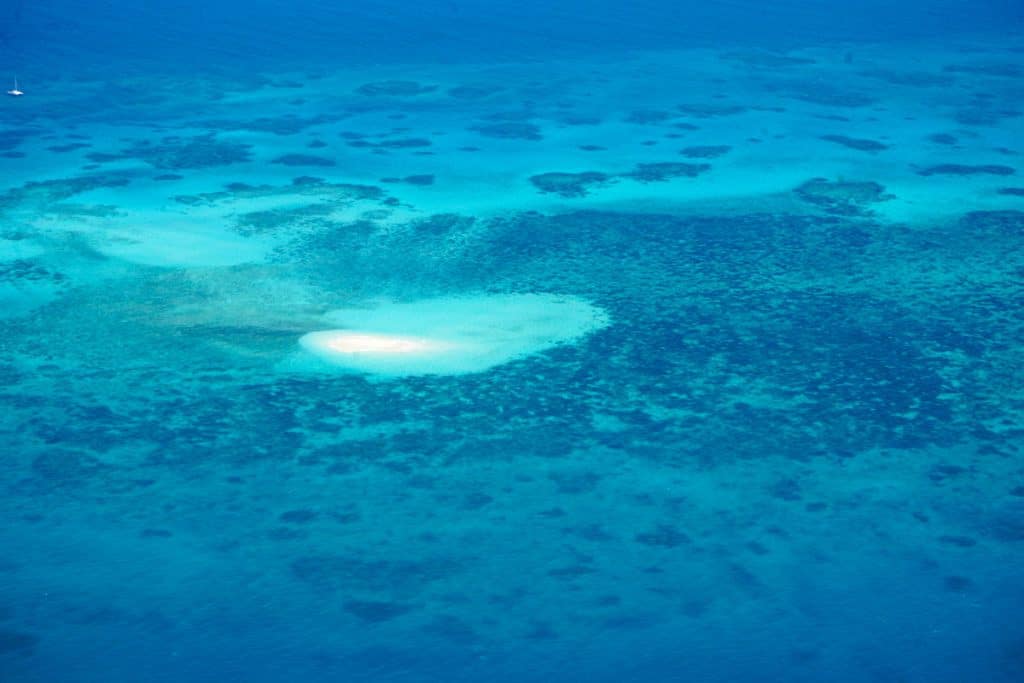
How Much Does it Cost to Travel in Australia?
With all of that being said, it’s time to tally up all of my travel expenses in Australia, in order to give you an idea of how much you can expect to spend while travelling in this wonderful country:
The cost of travel in Australia for backpackers
Accommodation: A$30 per day Transportation: A$20 per day Food: A$25 per day Activities: A$10 per day
Total cost of travel: $A85 per day (58 USD per day)
The cost of travel in Australia for couples on a mid-range budget
Accommodation: A$50 per day Transportation: A$30 per day Food: A$40 per day Activities: A$12 per day Total amount spent per day: A$132 per day
ARE YOU PLANNING A TRIP TO AUSTRALIA? HAVE ANY QUESTIONS? LET ME KNOW IN THE COMMENTS BELOW!
Related Articles on Australia 🇦🇺 30 Incredible Things to Do in Melbourne, Australia 🐠 Nerves and Nausea Over the Great Barrier Reef 🥑 Fitzroy is Home to the Best Brunches Ever 🦘 Tasmania Is Incredible And You Should Go There Now
Lauren Juliff
Lauren Juliff is a published author and travel expert who founded Never Ending Footsteps in 2011. She has spent over 12 years travelling the world, sharing in-depth advice from more than 100 countries across six continents. Lauren's travel advice has been featured in publications like the BBC, Wall Street Journal, USA Today, and Cosmopolitan, and her work is read by 200,000 readers each month. Her travel memoir can be found in bookstores across the planet.
Related Posts

The Cost of Travel in Mauritius: My Detailed Budget Breakdown

The Cost of Travel in Thailand: My Detailed Budget Breakdown
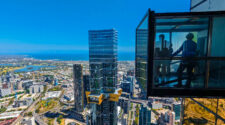
30 Incredible Things to Do in Melbourne, Australia (By a Local!)

The 9 Best Brunches in Fitzroy, Melbourne for 2024 (By a Local!)

2023: My Travels in Review

The Cost of Travel in South Korea: My 2024 Budget Breakdown
24 comments.
I’m not much of a hiker either but I do get that sudden burst of pride that I can take it all in my stride like there’s no stitch, no shortness of breath & definitely no sweat pouring into my eyes. The feeling of making it to the top is incredible, the feeling of sitting down & filling your mouth with cold water – even better :)
Agreed! I think I may now be a hiking convert — the feeling of pride afterwards was amazing!
Hiking in flip flops?! Are you crazy! Haha! I’m going to hike up Adams peak in Sri Lanka tomorrow night, soon I will have cobra calves like you!
Hahaha! I’d lived in flip flops for the past year so assumed I’d be fine. I probably should have bought some hiking boots….
Good luck with the hike! Cobra calves are sexy :)
good choice seeing the blue mountains. it really is underrated imo.
you heard the story about the first convicts in Australia? not knowing where they were, they thought China was on the other side of the blue mountains…
Thanks! And nope, I hadn’t heard that before — too funny!
I was horrified too when I realised just how big Australia is, but after a while it became second nature to spend a whole day travelling from one place to the next. The Blue Mountains is one of the places in Australia I really wish I had visited, it looks so, so beautiful.
Aren’t the distances crazy. If I drove for the amount of time I did in Australia I’d end up in the ocean!
The Blue Mountains was probably the highlight of my entire time in Australia so hopefully you’ll make it there one day! :)
Wow it looks amazing! Impressive doing it in flipflops as well. Although I would recommend buying something slightly more comfortable to wear for all the New Zealand hiking I’m sure you will be doing. I did the famous Tongariro Crossing in Converse. Something I do not recommend…took me three days for my feet to recover after that…
Yep, I bought a pair of excellent hiking shoes a few days after my time in Blue Mountains and love them!
I can’t imagine doing the Tongariro in Converses would have been particularly easy! :)
Wow stunning photos for such a stunning place! I’m ashamed to admit I’ve never heard of this place at all! However, I’m glad I saw your tweet, because now I can add this to my list of a biz-zillion things I want to do before I die.
It’s ok, Bryan… I didn’t know its name before I arrived :-) Glad you’ve added it to your list, it definitely deserves a place there!
Knew there was a reason the Blue Mountains were on my Aussie bucket list :D I’m not a hiker and already know I’m going to bitch and moan all the way up but looking at your photos, it’s definitely going to be worth it and I can’t wait :D
Yay! I’m so glad you’re going to be heading here — it’s been my favourite place in Australia! :-) And, really, if I made it in flip flops then you *definitely* can handle it!
I literally just got to Sydney this morning and was planning a trip to the Blue Mountains when I realized I hadn’t checked your blog in a while. Thankfully I did! Great tips and photos as always! My travel companions are also super excited since they share your enthusiasm for hour long sunset photo shoots haha
Awesome, I’m so glad it could help! You’ll love it there, it’s SO beautiful!
Those are such gorgeous photos! It really is such a dramatic landscape. I did the same hike as you last year and loved it! I took that tram back up, the steepest one in the world I think it is. So sure I was going to slip out! Really great blog :)
Thanks, Veronica!
I didn’t get a chance to take the tram but it looked pretty daunting… I would have probably spent the entire journey hyperventilating!
Haha, I’m enjoying reading about your progress towards becoming “A Hiker.” Looks like a gorgeous hike for sure!
Though, I hate to tell you this… but I feel like Dave might be onto your nose-breathing secret after reading this post… ;)
Wait until you hear about the stuff I get up to in New Zealand! I go a bit crazy and almost break myself :)
*Cue Mouth Drop* These photos are stunning! This is intense. Everytime I come on here now it’s featuring some sort of awesome bike trip (or a gnarly fall) or an amazing hike. I love it!
Awww, thanks Ryan, glad you like the photos!
Haha, I’ve done a few hikes in flip flops too! Sometimes not the best choice, but I just love them so much it makes it hard to put on real shoes :) Good choice on picking the Blue Mountains! They look stunning!
I know! After about a year in Southeast Asia, I threw out all of my other shoes and lived in flip flops… I love them so much!
Meet Lauren Juliff
Cost of a Trip to Australia & the Cheapest Time to Visit Australia
The average price of a 7-day trip to Australia is $1,955 for a solo traveler, $3,357 for a couple, and $1,725 for a family of 4 . Australia hotels range from $55 to $238 per night with an average of $92, while most vacation rentals will cost $180 to $510 per night for the entire home. Average worldwide flight costs to Australia (from all airports) are between $1,112 and $2,134 per person for economy flights and $3,492 to $6,701 for first class. Depending on activities, we recommend budgeting $42 to $86 per person per day for transportation and enjoying local restaurants.
See below for average , budget , and luxury trip costs. You can also look up flight costs from your airport for more tailored flight pricing.
The Cheapest Times to Visit Australia
On average, these will be the cheapest dates to fly to Australia and stay in a Australia hotel:
- January 29th to March 25th
- April 9th to May 6th
- July 30th to December 2nd (except the week of October 8th)
The absolute cheapest time to take a vacation in Australia is usually late August to early September .
Average Australia Trip Costs
Average solo traveler.
The average cost for one person to visit Australia for a week is $1,329-$3,211 ($190-$459 per day)
Food, Travel, and Sightseeing : $42 to $86 per day for one person’s daily expenses
Flights : $621 to $1,817 for economy
Lodging : $69 to $87 per night for one 2 or 3-star hotel room
or $108 to $132 per night for a 1-bed vacation rental
Average Couple’s Trip
The average cost for a couple to visit Australia for a week is $2,244-$5,629 ($321-$804 per day)
Food, Travel, and Sightseeing : $84 to $172 per day for two people’s daily expenses
Flights : $1,242 to $3,633 for economy
Average Family Vacation
The average cost for 4 people to visit Australia for a week is $4,483-$10,863 ($640-$1,552 per day)
Food, Travel, and Sightseeing : $168 to $345 per day for four people’s daily expenses
Flights : $2,485 to $7,266 for economy
Lodging : $137 to $175 per night for two 2 or 3-star hotel rooms
or $162 to $197 per night for a 2-bed vacation rental
Traveling Cheap to Australia
How cheap can you make a vacation to Australia? The cheapest trip to Australia is about $150 per person per day for travelers willing to take standby flights, deal with inconvenience, and otherwise limit travel expenses. About 1% of rentals are available in the $0 to $100 range for an entire place, and vacation rentals can be booked for as low as $20 per night. These inexpensive rentals must be booked as early as possible and may not be in the most desirable areas. 1-star hotels are more likely to be available, with rooms starting at around $47.
Even cheaper trips are possible depending on where you live and whether you can drive. Check the cheapest times to fly for more saving ideas.
Budget Solo Traveler
The lowest cost for one person to visit Australia for a week is $1,050-$2,975 ($150-$425 per day)
Food, Travel, and Sightseeing : $21 to $42 per day for one person’s daily expenses
Lodging : $47 to $55 per night for one 1-star hotel room
or $114 to $144 per night for a 1-bed vacation rental
Budget Couple’s Trip
The lowest cost for a couple to visit Australia for a week is $1,818-$5,085 ($260-$726 per day)
Food, Travel, and Sightseeing : $42 to $84 per day for two people’s daily expenses
Budget Family Vacation
The lowest cost for 4 people to visit Australia for a week is $3,631-$9,738 ($519-$1,391 per day)
Food, Travel, and Sightseeing : $84 to $168 per day for four people’s daily expenses
Lodging : $93 to $110 per night for two 1-star hotel rooms
or $171 to $216 per night for a 2-bed vacation rental
Overall it is very possible to travel to Australia cheaply.
The Cost of a Luxury Australia Trip
There is no true ceiling on the cost of a luxury trip, so our estimates are based on what most people do in Australia.
Luxury Solo Traveler
The high-end price for one person to visit Australia for a week is $2,837-$11,702 ($405-$1,672 per day)
Food, Travel, and Sightseeing : $84 to $173 per day for one person’s daily expenses
Flights : $1,553 to $4,539 for first class
Lodging : $116 to $238 per night for one 4 or 5-star hotel room
or $496 to $992 per night for a preferred vacation rental
Luxury Couple’s Trip
The high-end price for a couple to visit Australia for a week is $4,978-$17,452 ($711-$2,493 per day)
Food, Travel, and Sightseeing : $168 to $346 per day for two people’s daily expenses
Flights : $3,106 to $9,078 for first class
Luxury Family Vacation
The high-end price for 4 people to visit Australia for a week is $9,963-$31,927 ($1,423-$4,561 per day)
Food, Travel, and Sightseeing : $336 to $692 per day for four people’s daily expenses
Flights : $6,213 to $18,155 for first class
Lodging : $233 to $476 per night for two 4 or 5-star hotel rooms
or $744 to $1,488 per night for a preferred vacation rental
Australia Hotel Prices
The cost of staying in Australia is slightly lower than the average city. On average hotels are less expensive than vacation rentals. Luxury vacation rentals are more expensive in Australia due to very high property costs. The graphs below show how much cost can vary depending on the type of experience you’re looking for.
Australia Lodging Cost by Star Status
The average price for the class of hotel is on the (y) axis. The hotel class (out of 5 stars) is on the (x) axis.
Prices are based on Australia hotel averages and may not reflect current prices. In some cases, we extrapolate prices to estimate costs, and hotels with your desired star rating may not be available.
Vacation Rental Prices
The percent of vacation rentals in the price range is on the left (y) axis. Price range is on the bottom (x) axis.
There are a healthy amount of vacation rentals serving all budgets in Australia.
Flight Costs to Australia
Averaging flights around the world, prices go from a high of $2,134 average in late December to a low of $1,112 in late August to early September. Median flight price is $1,403. These prices are based on millions of flights. For Australia our data includes thousands of originating airports, and hundreds of airlines. The area has more variance in price compared with other locations.
Average Flight Cost by Season
Average flight cost by day of week.
The cheapest day to fly in is typically Tuesday, and the cheapest day to fly back is usually Tuesday. Click here to see data for the cost of flights from your airport. In Australia, the difference between the cheapest and the most expensive week is about $1,022, so you can easily save about 92% simply by using our free flight guides and booking in advance.
Daily Expenses Budget
Daily vacation expenses vary more based on what you’re interested in doing. A fine dining restaurant with drinks around Australia can easily cost $315 per person or more, while a standard nice meal might be about $21 per person. Private tours can cost $630 per day, but self-guided tours to see the outdoor sights can be free. Costs vary wildly, so recommendations are made based on the cost of living and averages we see for this type of vacation.
Other Australia Guides
Travel costs nearby.
- New South Wales Outback, NW, AU
- Murray-Darling Basin, Australia
- Mungo, NW, AU
- Broken Hill, NW, AU
- Buronga, NW, AU
- Wentworth, NW, AU
- Euston, NW, AU
- Gol Gol, NW, AU
Travel Costs in Popular Places
- Moscow, Russia
- Kuta, Indonesia
- Houston, TX, US
Nomadic Matt's Travel Site
Travel Better, Cheaper, Longer
How Much Does a Trip to Australia Cost?
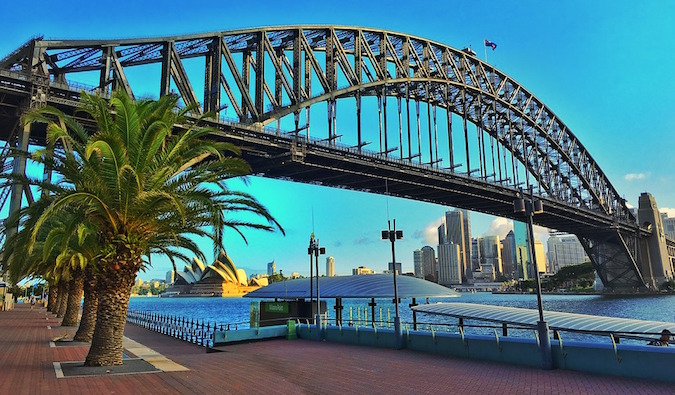
Everyone has sticker shock when they land in Australia . They see how much things cost and their jaw drops. Heck, even Australians get sticker shock — and they live there! Time and time again, travelers blow through their budget quickly here because no one ever expects the country to cost as much as it does.
When I first traveled to Australia a few years ago, I grossly underestimated how much I needed. It cost me double what I thought because of a strong Australian dollar and poor planning.
This time around I was better prepared, but I still overspent because I wasn’t prepared for such dramatic inflation.
On my most recent trip to Australia, I spent $3,400 USD in 33 days. That total includes all my day-to-day expenses, flights, transport, tours, and anything I bought. Averaging roughly $100 USD a day, it would have been a lot more had I not been able to stay with friends and get discounted tours. I ate a lot at expensive restaurants, flew a few places, and spent a lot of money using the Internet on my phone. If it wasn’t for my friends and the discounts I got, I would have spent about $150 USD per day — if not more!
Here’s a breakdown of where my money went, typical costs, and how you can save money while you’re here:
Table of Contents
Typical Costs in Australia
How much is a vacation to australia, how to save money in australia.
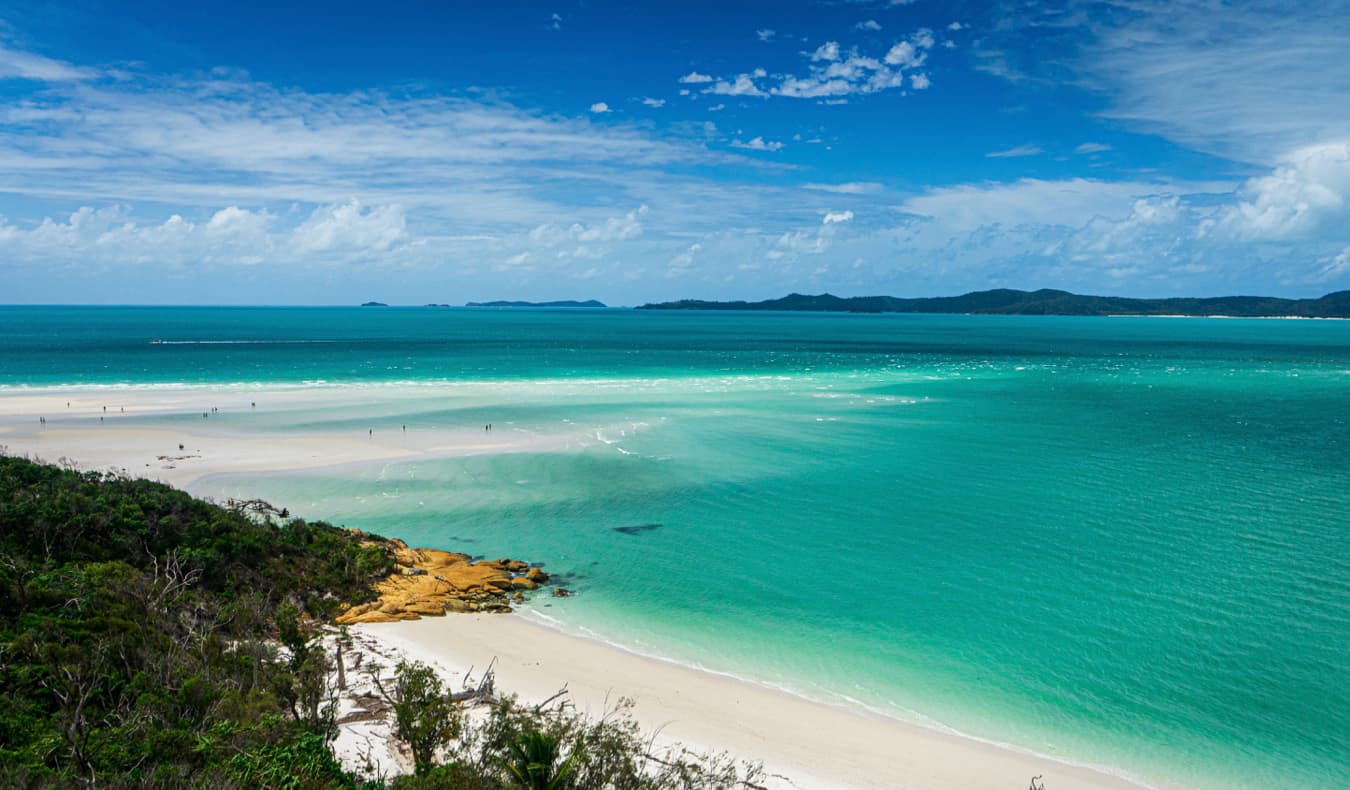
- Hostels: Hostels cost 25-30 AUD in smaller cities and 25-70 AUD per night in places like Sydney or Melbourne . As always, the smaller the dorm, the higher the cost. Private rooms are 80–150 AUD per night.
- Food : Your average meal in Australia will run you about 20 AUD. A fancy meal at a more upscale restaurant costs closer to 60 AUD. Even McDonald’s is expensive—a value meal is about 13 AUD.
- Alcohol : For a country that loves to drink, they make it very costly to do so. Beers cost around 10 AUD. Happy hours and backpacker bars tend to have cheap drinks, usually for around 50% off. But booze adds up fast here!
- Tours: A typical multi-day tour costs around 400-750 AUD. Most day trips can be found for 60-450 AUD.
- Transportation: You can find cheap transportation in Australia if you look. Greyhound offers several discount passes ranging from 15-365 days. Expect to pay 349 AUD for the 15-day pass, 439 AUD for the 30-day pass, and 499 AUD for the 60-day pass.
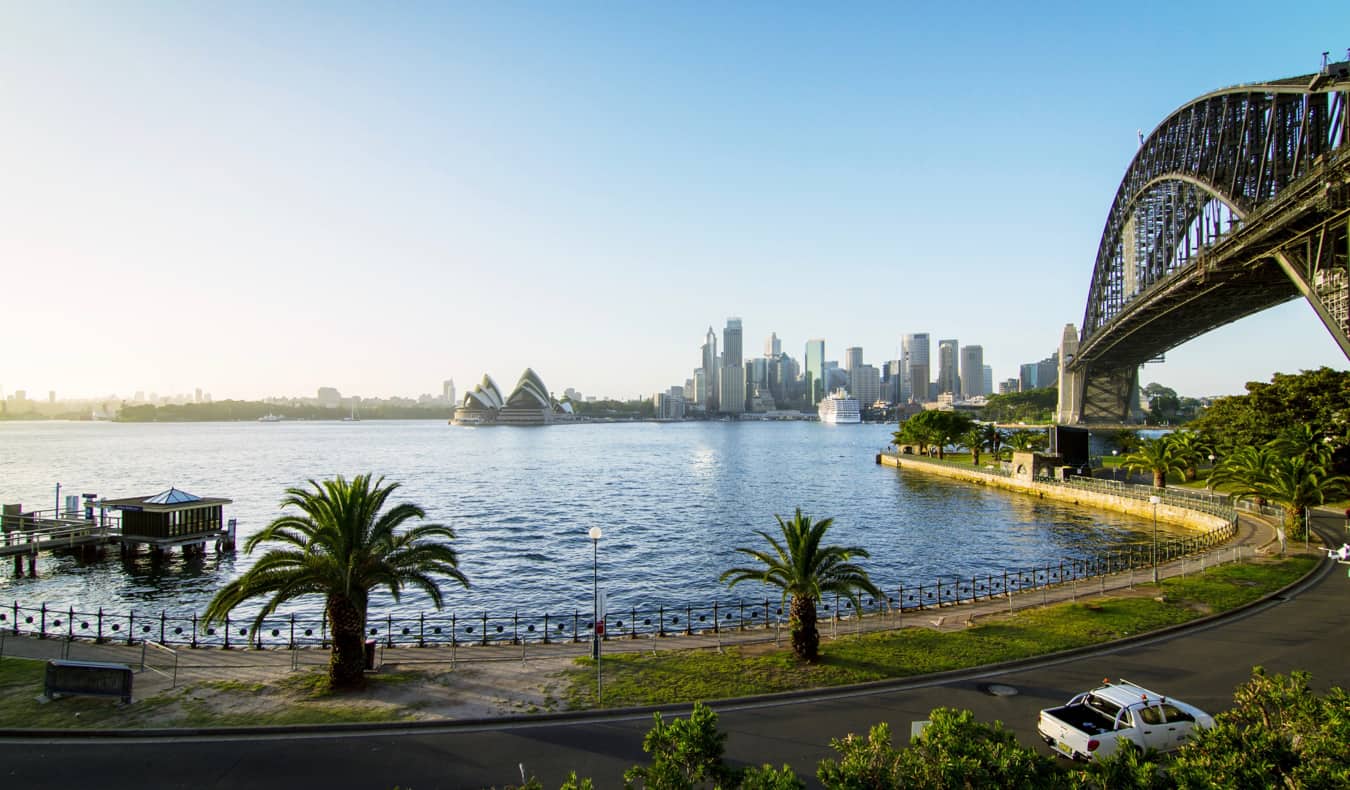
If you’re a backpacker, I’d budget between 70-80 AUD per day. This is a suggested budget assuming you’re staying in a hostel dorm, cooking most of your meals, limiting your drinking, using public transportation to get around, and sticking to mostly free activities like hiking, free walking tours, and hitting the beach.
If you’re going to do a lot of adventure activities, drink a lot, or move around a lot, I’d add at least another 20 AUD per day to your average.
If you Couchsurf or camp, hitchhike, and cut out drinking altogether, you can lower this by 20-30 AUD per day.
If you are staying in private hostel rooms or Airbnbs, drinking a lot, and eating out often, expect to spend closer to 200 AUD per day, with your average spending going up from there. If, in addition to that, you’re taking a lot of group tours and fly between destinations, expect to spend closer 250-400 AUD per day.
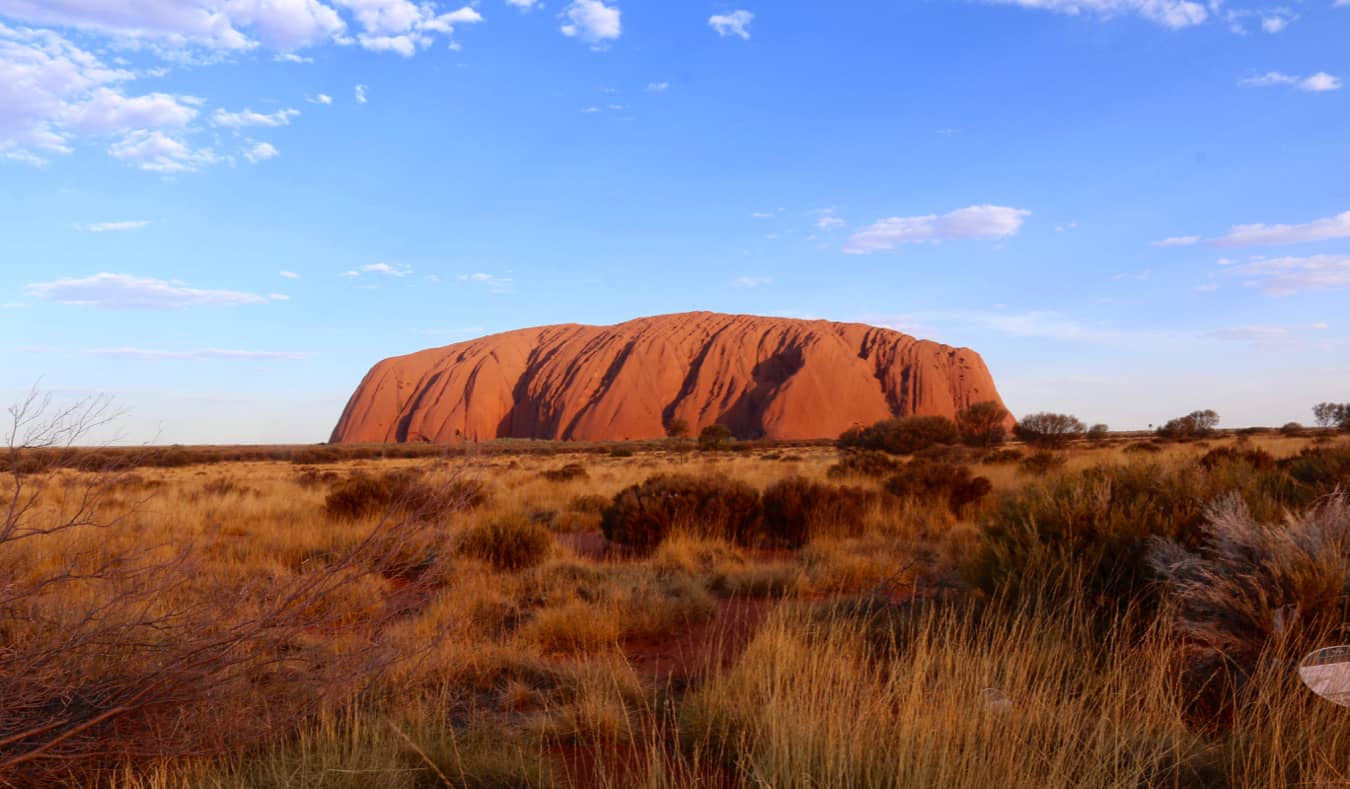
Cook – Cooking your meals can save you a lot of money. Hostels, Airbnbs, and even some guesthouses have kitchens where you can cook. Also, look for hotels with free breakfast so you can score a free meal. It may not be glamorous, but you’ll save fortune.
Drink less – Alcohol causes all good budgets to die. If you want to save money, drink less. Or drink goon (boxed wine). Goon is the perennial favorite of travelers. It gives you a killer hangover but also the most bang for your buck.
Stay with a local – Couchsurf with locals to save on accommodation. Every night out of the hostel is more money for activities. This is also a great way to meet locals and get involved with the local culture.
Get a phone plan – If you want data during your trip, get a plan from Optus or Boost. They have some of the best coverage and plans around the country.
Work for your room – Many hostels offer travelers the opportunity to work for their accommodation . In exchange for a few hours a day of cleaning, you get a free bed to sleep in. Commitments vary but most hostels ask that you stay for at least a week. Ask at the front desk if this is something you want to try.
Car share – Australia is a big country that can be expensive to get around. If you are traveling with friends, it’s smart to buy a used car or campervan (or rent a new one from one of the many rental companies in the country) and split the costs of gas. You can also hitch a ride with other travelers using sites like Gumtree, Jayride, or a hostel message board.
If you just want to rent a car and share the cost with friends, use Discover Cars to find the best deals.
WWOOF it – WWOOFing is a program that allows you to work on organic farms in exchange for free room and board. Everyone I’ve met who stays in the country long term does it for at least one month. It’s a great way to reduce your expenses and connect with a local family.
Book tours as a package – This country has a lot of exciting activities and tours that eat into any budget. Booking activities together through a hostel or tour agency can get you a discount and save you hundreds of dollars.
Camp – Camping is very affordable here, with basic tent plots costing as little as 7 AUD per night. If you have gear, this can save you a ton.
Bring a reusable water bottle – The tap water in Australia is safe to drink so bring a reusable water bottle with you to save money and lower your plastic use. LifeStraw makes a bottle with a built-in filter to ensure your water is always clean and safe.
The best way to save money in Australia is to mix and match how you spend. You need to counter the high costs of one activity with the lost costs of another. That’s why I always say it’s important to research costs beforehand and know what you want to spend money on. Once you do that, you can create a budget that is better tailored to your needs.
The general numbers above are just that – general. Your mileage will vary (and can be better) once you know what you want to do in the country.
However, we all know budgets, no matter how well we plan, get broken.
So, to cover all your costs and have a little extra , I’d budget 100 AUD per day. You never know what might happen. Maybe you’ll have a big night out or maybe you’ll break your camera. It’s always better to leave a country with extra money than overspend.
Australia may not be a cheap country to visit but, with the right planning, it doesn’t have to break the bank either!
Book Your Trip to Australia: Logistical Tips and Tricks
Book Your Flight Use Skyscanner to find a cheap flight. They are my favorite search engine because they search websites and airlines around the globe so you always know no stone is left unturned.
Book Your Accommodation You can book your hostel with Hostelworld as they have the biggest inventory and best deals. If you want to stay somewhere other than a hostel, use Booking.com as they consistently return the cheapest rates for guesthouses and cheap hotels. My favorite places to stay are:
- Nomads St. Kilda (Melbourne)
- Wake Up! (Sydney)
- Bunk Brisbane (Brisbane)
If you’re looking for more places to stay, here are my favorite hostels in Australia!
Don’t Forget Travel Insurance Travel insurance will protect you against illness, injury, theft, and cancellations. It’s comprehensive protection in case anything goes wrong. I never go on a trip without it as I’ve had to use it many times in the past. My favorite companies that offer the best service and value are:
- Safety Wing (for everyone below 70)
- Insure My Trip (for those over 70)
- Medjet (for additional repatriation coverage)
Looking for the Best Companies to Save Money With? Check out my resource page for the best companies to use when you travel. I list all the ones I use to save money when I’m on the road. They will save you money when you travel too.
Want More Information on Australia? Be sure to visit our robust destination guide on Australia for even more planning tips!
Got a comment on this article? Join the conversation on Facebook , Instagram , or Twitter and share your thoughts!
Disclosure: Please note that some of the links above may be affiliate links, and at no additional cost to you, I earn a commission if you make a purchase. I recommend only products and companies I use and the income goes to keeping the site community supported and ad free.
Related Posts
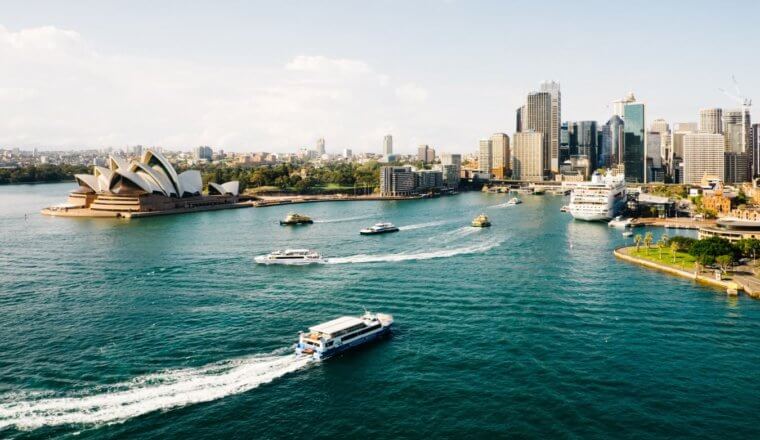
Get my best stuff sent straight to you!
Pin it on pinterest.
Travel Financially Savvy: Calculating Your Australia Trip Budget
You’ve been dreaming of exploring the land down under, and now it’s finally time to make that dream a reality. Australia is a vast and diverse country with so much to offer, from stunning beaches and rugged outback landscapes to vibrant cities and unique wildlife. But before you pack your bags and hop on a plane, you need to figure out how much money you’ll need for your trip.
Coincidentally, budgeting for a trip can be overwhelming, especially when you’re not familiar with the local costs or what expenses you need to consider. You don’t want to be caught off guard by unexpected expenses or run out of money halfway through your adventure.
That’s why we’ve put together this guide to help you determine how much should be in your travel fund for your Australian journey. So grab a cuppa and let’s get started!
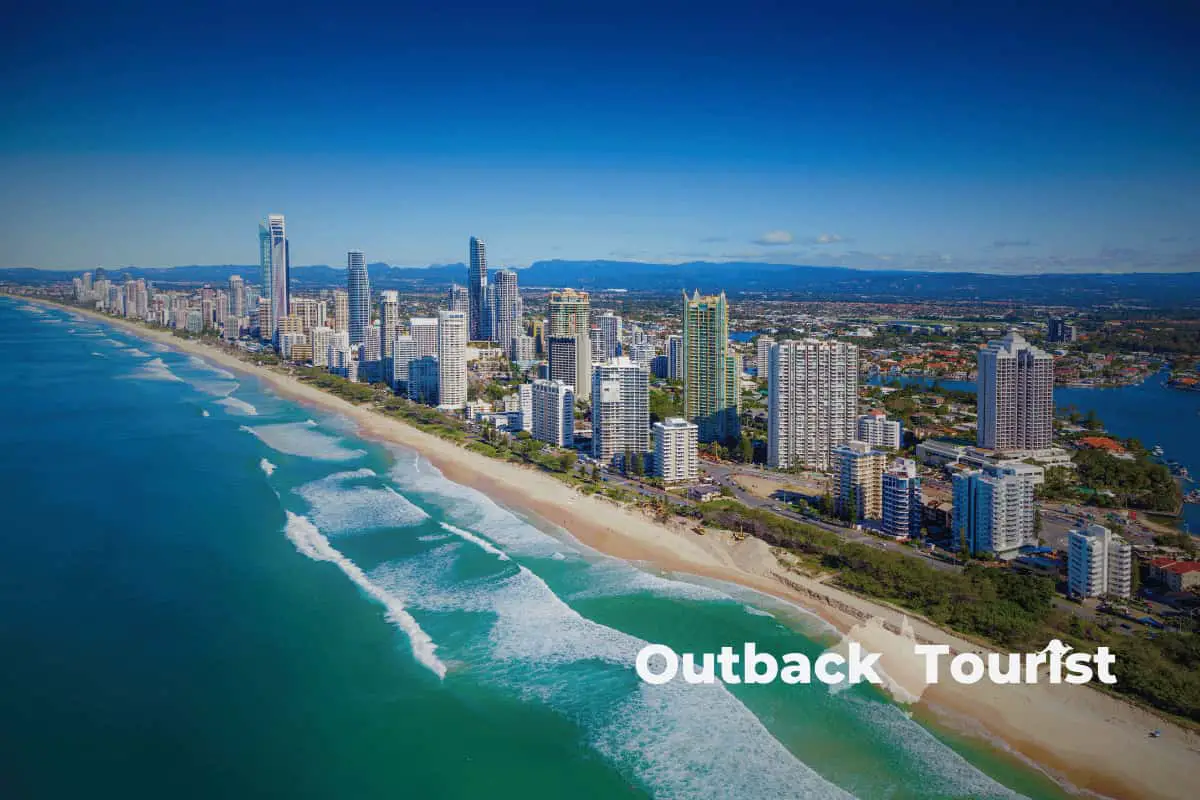
Determine Your Travel Style and Preferences
Determining your preferred travel style and personal preferences can greatly impact the amount of funds necessary for a successful Australian journey.
Are you someone who enjoys backpacking or do you prefer luxury travel? Backpackers typically spend less on accommodations, food, and transportation than those who opt for luxurious hotels and private tours. On the other hand, travelers who prioritize comfort and convenience may find themselves spending more money.
Another factor to consider is whether you prefer local experiences or tourist attractions. If you want to immerse yourself in Australian culture, visiting local markets and participating in community events will likely be more affordable than visiting popular tourist spots such as Sydney Opera House or Uluru-Kata Tjuta National Park. However, if these iconic landmarks are on your bucket list, expect to pay higher fees for entrance tickets and guided tours.
Ultimately, determining your preferred travel style and personal preferences is crucial when budgeting for a trip to Australia. By understanding your priorities, you can create a realistic budget that aligns with your goals and expectations.
Whether it’s backpacking through the outback or indulging in luxury retreats along the coast – there’s an option for every traveler within different price ranges.
Research Seasonal Pricing and Deals
Exploring the ebb and flow of seasonal pricing and deals can shed light on when to book your down-under adventure. Different destinations in Australia have different peak seasons, so it’s important to know where you want to go before researching prices.
For example, summer months (December – February) tend to be more expensive in popular destinations like Sydney and Melbourne, while winter months (June – August) are busier for ski resorts in Victoria and New South Wales.

Once you’ve compared destinations and decided when you want to travel, start looking for package deals. Many airlines offer discounts if you book a flight and hotel together, which can save you hundreds of dollars. Keep an eye out for sales during off-seasons or last-minute deals that may pop up closer to your travel dates.
Additionally, research any discounts available through student or military status, as well as loyalty programs with hotels or rental car companies. Remember that budgeting for a trip involves more than just flights and accommodations.
Make sure to consider the cost of activities, transportation within the country, food and drinks, visas (if necessary), travel insurance, souvenirs/gifts, and any other expenses that may arise during your trip.
By taking all of these factors into account while researching seasonal pricing and deals, you’ll be better equipped to create a realistic budget for experiencing all that Australia has to offer!
Plan Your Itinerary and Calculate Expenses
Now it’s time to plan out your itinerary and figure out the costs of all the fun activities you want to do while exploring Down Under!
First, consider your accommodation options. Do you want to stay in a hotel, hostel, or Airbnb? Each option has its own price range, so research and compare prices to find the best fit for your budget. Keep in mind that staying in a more central location may be more expensive but could save on transportation costs.
Next, think about transportation choices. Will you rent a car or use public transportation? Renting a car gives you more freedom but can also be costly with gas and parking fees. Public transportation is cheaper but may limit where you can go. Consider using a combination of both depending on your itinerary.
Once you have decided on accommodation and transportation, start planning out your activities. Make a list of must-see sights such as the Sydney Opera House or Great Barrier Reef. Research admission fees and any discounts available such as student or senior rates. Don’t forget to factor in food expenses as well.
Finally, add up all your estimated expenses and compare them to your budget. If necessary, adjust accordingly by cutting back on certain activities or choosing less expensive accommodation options. Remember that unexpected expenses can arise during travel so it’s always good to have some extra funds just in case.
With careful planning and budgeting, you can enjoy all that Australia has to offer without breaking the bank!
Consider Additional Costs and Expenses
Before you start packing your bags, keep in mind that there may be some unexpected costs down the road, so it’s important to have a little extra cash saved up for a rainy day.
One of these expenses is travel insurance. While it may seem unnecessary, it can save you thousands of dollars in medical bills or trip cancellations. Look into purchasing comprehensive travel insurance before your trip to Australia to ensure that you’re covered for any unforeseen circumstances.
Another potential cost to consider is souvenir shopping. It’s easy to get carried away with buying souvenirs and gifts for friends and family back home, but this can quickly add up. Set a budget for yourself before leaving on your trip and stick to it. You don’t want to end up overspending and not having enough money left over for other important expenses.
Lastly, don’t forget about transportation costs between cities or regions within Australia. While flights may initially seem expensive, they can actually be more cost-effective than taking multiple trains or renting a car. Do some research on different transportation options available and compare prices before making any final decisions.
By considering additional costs like travel insurance, souvenir shopping, and transportation expenses beforehand, you’ll be better prepared financially for your trip Down Under. Remember to set aside some extra cash just in case anything unexpected comes up during your travels – after all, it’s always better to be safe than sorry!
Create a Realistic Budget and Stick to It
Developing a practical financial plan and adhering to it is crucial for ensuring financial stability during your travels to Australia. Creating a budget that fits your needs and preferences can help you avoid overspending and make the most out of your trip without burning a hole in your pocket.
Here are some tips on how to create a realistic budget and stick to it:
- Determine Your Total Budget: Before you embark on your journey, decide how much money you’ll need for the entire trip. This includes airfare, accommodation, transportation, food, activities, and other miscellaneous expenses. Once you have a clear idea of what your total budget is, divide it into daily or weekly portions.
- Track Expenses: Keep track of all your expenses while traveling in Australia so that you know where every penny is going. You can use an app or spreadsheet to record all transactions easily.
- Adjust Budget: If you find yourself spending more than anticipated in one area (like accommodation), adjust your budget by reducing expenses elsewhere (like meals). Be flexible with your spending but ensure that it does not exceed what you have allocated.
- Stick To Your Plan: The key to making a travel budget work is sticking with it as closely as possible throughout the trip duration. Avoid impulse buys or unnecessary splurging by reminding yourself regularly of the plan set at the beginning of the journey.
By creating a practical financial plan and following these tips mentioned above, you can enjoy an incredible adventure across Australia within reasonable limits without worrying about running out of funds halfway through the trip!
So there you have it, mate! Planning a trip to Australia doesn’t have to break the bank.
By determining your travel style and preferences, researching seasonal pricing and deals, planning your itinerary and calculating expenses, considering additional costs and expenses, and creating a realistic budget (and sticking to it!), you can enjoy all that Australia has to offer without sacrificing your financial wellbeing.
Remember to keep an open mind when it comes to accommodations, transportation, and activities. With some creative thinking and flexibility, you might be able to save some extra cash while still having an unforgettable adventure down under.
So why wait? Start planning your dream trip today!
Download this cheat sheet to optimize underperforming posts on your website.

- Travel Planning Guide
Is Australia Expensive?

- Is Australia expensive?
How expensive is Australia?
How expensive is a one week trip to australia, how expensive is a two week trip to australia.
- How expensive is a one month trip to Australia?
Is it expensive to backpack in Australia?
Are hotels expensive in australia.
- How expensive are activities in Australia?
Is food expensive in Australia?
Is transportation expensive in australia, is australia expensive to visit.
Australia is a moderately priced travel destination. Compared to the rest of the Pacific, which is known to be an expensive region, it is a moderately priced country to visit. It's ranked in the top 50% of countries in the Pacific for its travel costs, and is comparable to places like New Zealand and French Polynesia.
As this is a very popular country for tourists, you'll find a number of great places in Australia to visit, all at a variety of price ranges. Some of the most expensive places to visit are Melbourne, Fraser Island, and Sydney. If you're looking for lower cost destinations, you can visit places like Torquay, Newcastle, and Alice Springs.

On average, visitors spend about $162 per day during their visit to Australia (U.S. Dollars). Prices vary dramatically by travel style and length of trip, but if you stay at moderately priced hotels, eat at affordable restaurants, and use public transportation when possible, you can expect to stay close to this budget. See more travel costs for Australia here .
A one week trip to Australia costs about $1,134 per person on average, based on the previous expenses of other travelers. This includes accommodation, sightseeting activities, transportation, food, and nightlife. For two people, a one week trip costs $2,267.
Based on the travel expenses of others, a two week trip to Australia costs around $2,267 on average, per person. This includes food, sightseeing, local transportation, accommodation, and nightlife. For two people, a two week trip costs $4,535.
How expensive is a month long trip to Australia?
Based on our calculations from previous travelers, a one month trip to Australia will cost around $4,859 per person. This amount includes sightseeing activities, hotels, restaurants, local transportation, and other travel expenses. For two people, a one month trip would cost $9,717.
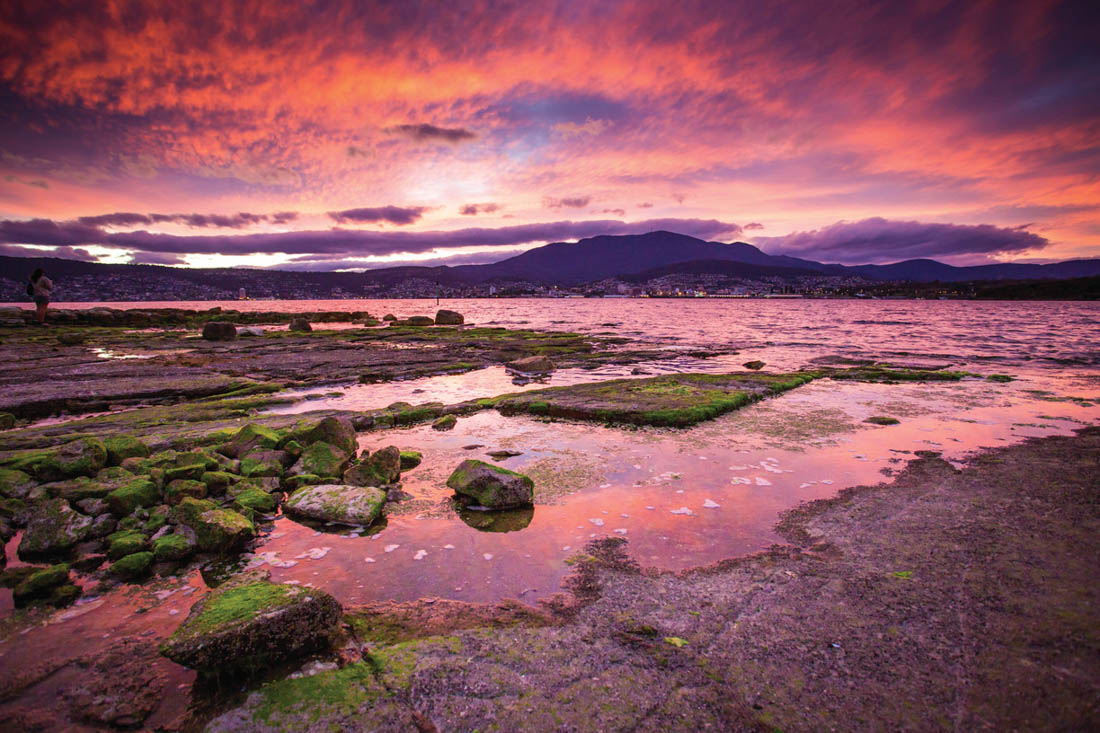
Australia is a popular backpacker destination with more than 210 hostels around the country. Hostels cost, on average, $24 per night for a dorm. (See hostel prices in Australia here .) In particular, many backpackers head to Sydney, Melbourne, and Cairns. You'll find the most expensive hostels in Brisbane and Byron Bay, which average $30 and $29 a night. The cheapest hostels are in Perth and Adelaide which average $22 and $21 per night.
Here are a few sample prices from popular hostels in Australia.
- $26 for a dorm bed at Wake Up! Sydney Central in Sydney more details
- $26 for a dorm bed at Flinders Backpackers Melbourne in Melbourne more details
- $27 for a dorm bed at Travellers Oasis in Cairns more details
From our analysis of hotel prices in Australia , we can see that they are moderate in cost and have somewhat average prices compared to other countries. The average rate for a room is approximately $123 per night. Keep in mind that pricing can vary across cities in the country, with places like Noosa Heads commanding a higher average of $394 per night. Conversely, there are more economical options like Brisbane, Perth, and Rockhampton, where hotel prices average around $95, $93, and $83 per night.
Cambridge Cottages
Valentine on george.
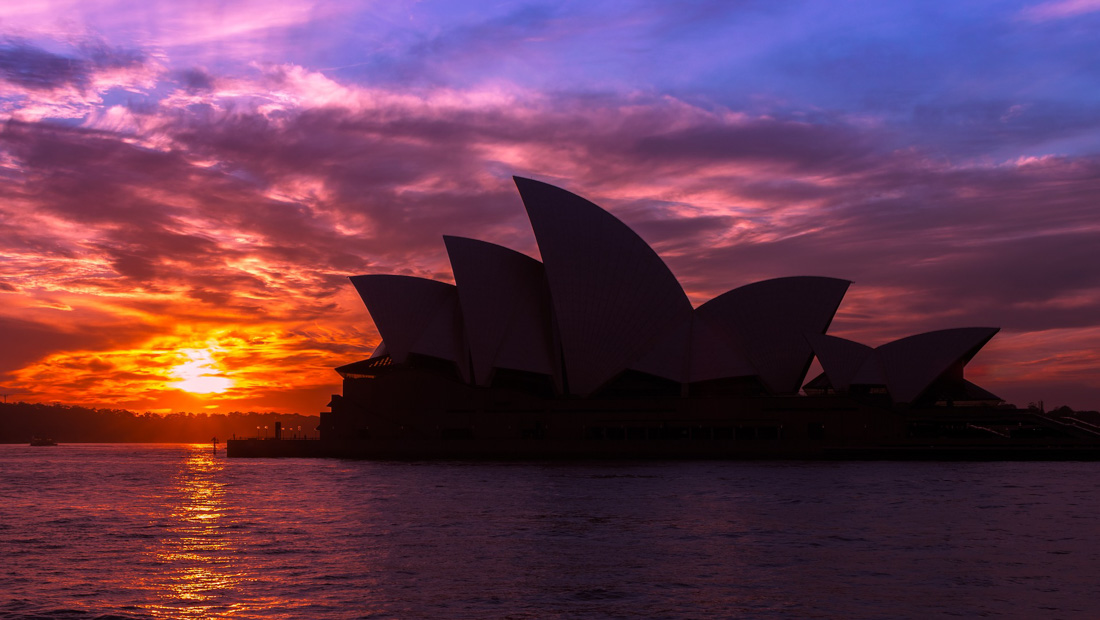
How expensive are sightseeing activities in Australia?
In Australia, the cost of activities and things to do can vary by the type of activity, its length, and the location. To provide an estimate of what to expect during your visit, below are several popular activities that are common in the country. On average, previous travelers have spent around $31 per day on sightseeing and entertainment.
- Yarra Valley grazing tour with Champagne Brunch at Chandon Viator $ 166
- Yarra Valley grazing tour with Champagne Brunch at Chandon: $166
- Half-Day Jervis Bay Sea Kayak Tour: $93
- Easy Bike Tour - Mt Wellington Summit Descent & Rainforest Ride: $99
- Ile Des Phoques and Maria Island Cruise and Walk Day Tour with Lunch: $179
- Private Tour: Sydney City Highlights & Hidden Gems: $297
- Sunset Sailing Cruise includes snacks & drinks: $79
- Phillip Island Helicopter Tour: $116
- Bushtucker Cruise: $50
In Australia, the cost of food can vary by the type of restaurant and food options available. To save money, eat at less expensive restaurants, try street food, or cook your own meals when possible. On average, previous travelers have spent around $34 per day on food, per person.
- Sydney's Little Italy Food Tour Viator $ 50
- Sydney's Little Italy Food Tour: $50
- Chef Jacqui's French Cooking Classes : $146
- Small Group Refugee Chef Dinner Banquet at Bohemian Cafe: $63
- Green Food Kitchen: Vegan/Vegetarian cooking classes : $85
- Indian Cooking Master Class: $130
- Street Food of Asia Cooking Class: $130
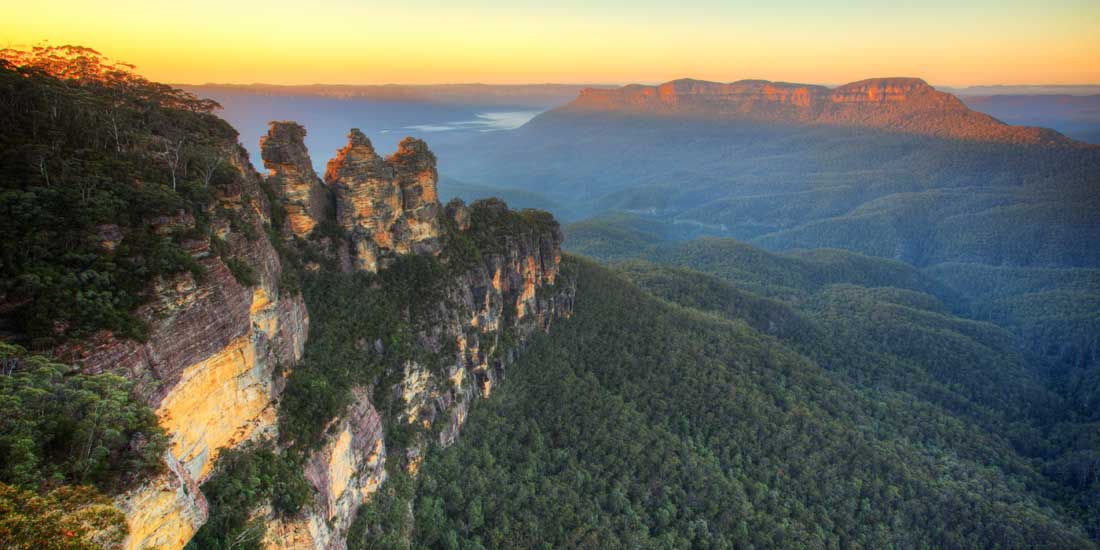
Local transportation in Australia can vary in price depending on the type of transit used. Generally, other travelers have spent $30 on local transportation per person per day. To save money, take public transit whenever possible, as it will almost always be cheaper than a taxi or private driver.
Expenses for intercity transportation within Australia can vary based on the type of transportation used and the distance traveled. On average, previous travelers have spent $128 per person per day for intercity transit. To save money, it's advisable to choose long-distance buses or trains over air travel. This is generally a more cost-effective choice despite the potential increase in travel time.
More for Australia
If you're planning a trip to Australia, check out these other informative travel guides.
We've been gathering travel costs from tens of thousands of actual travelers since 2010, and we use the data to calculate average daily travel costs for destinations around the world. We also systematically analyze the prices of hotels, hostels, and tours from travel providers such as Kayak, HostelWorld, TourRadar, Viator, and others. This combination of expenses from actual travelers, combined with pricing data from major travel companies, gives us a uniqe insight into the overall cost of travel for thousands of cities in countries around the world. You can see more here: How it Works .
- You are welcome to reference or display our travel costs on your website as long as you provide a link back to this page .
- For a basic link, you can copy and paste the HTML link code, or this page's address. Address Link HTML Australia Travel Costs " disabled />
Subscribe to our Newsletter
Coupons and discounts! Travel tips!

Some of the links on this website are sponsored or affiliate links which help to financially support this site. By clicking the link and making a purchase, we may receive a small commission, but this does not affect the price of your purchase.
- Privacy / Terms of Use
- Activities, Day Trips, Things To Do, and Excursions

How Much Does It Cost To Travel Australia? A FULL Budget Breakdown (2023)
Trying to figure out how much it costs to travel Australia? Well here’s a full Australia budget breakdown – inc accomodaiton, tours, transport and more!
Planning a trip to Australia ? Trying to figure out how much does it cost to travel Australia?

No worries – I’ve got you covered!
I’ve lived, worked and travelled in Australia more than any other country I’ve visited since hitting the road back in 2009 – in fact Byron Bay is my second home in terms of total time living there!
I know planning a trip to Oz can be daunting – it’s a long way away, it’s not the most budget friendly place, there’s a lot of ground to cover and sooooooo much to see an do!
So to help you figure out how much your trip to Australia will costs here’s a rundown of all the major things you’ll encounter – including food, drink, transport, tours, accommodation and more…
LAST UPDATED Jan 2023 – a lot of stuff has changed around and increased for travel from 2023 onwards, so I’m doing my best to keep this as updated as possible!
(Just FYI, all prices below are in $AUD)
How Much Does It Cost To Travel Australia In 2023?
Greyhound bus.

Easily the most popular way to travel around Australia the Greyhound Bus network covers the whole of the East Coast as well as the Red Centre, Northern Territory and parts of the West Coast too.
They’ve recently revamped the Greyhound Australia Bus pass range and there are now 2 main options; the WHIMit and the East Coast Passes .
The WHIMit covers the entire Greyhound Australia network, whilst the East Coast is the Melbourne to Cairns Route.
Both included unlimited travel and are only limited by time frame – up to 90 days for the National WHIMit and 30 days for the East Coast WhimiT
- 7 Day Greyhound East Coast Pass = $249
- 15 Day Greyhound East Coast Pass = $319
- 30 Day Greyhound East Coast Pass = $389
- 15 Day Greyhound WHIMIT Pass = $349
- 30 Day Greyhound WHIMIT Pass = $439
- 60 Day Greyhound WHIMIT Pass = $499
- 90 Day Greyhound WHIMIT Pass = $629
Premier Bus
Not as popular as the Greyhound but even more budget friendly, the Premier Bus Passes are a great alternative for those travelling the East Coast and who want to be more budget conscious. Again like Greyhound they’re 3 months, but extendable to 6 if you need longer, however they don’t cover the Sydney to Melbourne section.
- Sydney to Cairns Pass = $330
- Sydney to Cairns Pass (1 Month Pass) = $230
- Brisbane/Byron Bay to Cairns Pass = $242
Check out all the Premier Passes here
Campervan Hire

My favourite way to travel around Australia! Even though campervan hire in Australia isn’t the cheapest it’s certainly the most fun and flexible way to get around, especially if you’re travelling as a couple or small group of friends. The cost of campervanning Australia varies heaps depending on your route, time frame, campervan model and of course the season – so the further in advance you book it the better.
Expect to pay from $60AUD per day though, with rates much higher in the peak, summer season, around $110+ per day
For an epic Campervan deal in Australia click here
Accommodation

The most budget friendly and popular accommodation option for the East coast is shared hostels dorms – varying from super flash packer 4 bed A/C ensuite rooms (such as Byron Bay YHA) right through to super budget 12 bed dorms that are certainly less comfortable, but easier on the wallet!
They vary from $25-65 per night – however this can fluctuate quite a bit depending on the location, season, length of your stay and also any key events.
The best advice I can give you is go with a $40 night average as a ball park figure but also check out the latest rates if you’re aiming for peak season or stuff like xmas/NYE in Sydney as this will massive effect how much it cost to travel Australia.
Some of my favourite hostels include;
- WakeUp! (Sydney and Byron Bay)
- The Surf House (Byron Bay)
- Aquarius Backpackers (Byron Bay)
- Halse Lodge Noosa
- Nomads Airlie Beach
- Nomads Magnetic Island (Magnetic Island)
- Jackaroo Treehouse (Mission Beach)
- Gilligans (Cairns)
If you’re keen on a bit more privacy and comfort, but not wanting to splash out on full on hotels then I also highly recommend the private rooms at YHA hostels.
As you might expect hotels in Australia are definitely a step up budget wise, but there is a HUGE range of styles catering for most budgets. Honestly though I couldn’t put a price on them as you could spend $100 a night to $1,000s – so best to check out somewhere like Booking.com and smash in your personal preferences and budget!
Another popular option now is AirBnB and you can get some real unique and comfortable options all over the coast. It’s great for couples or families (but there’s no restriction) and the perfect way to go if you want to treat yourself during your trip too!
Click here for $37 off your first booking!
Food & Drink
As with pretty much everywhere in the world eating out in Australia will really impact your budget – but there is a huge variety of restaurants and bars you can grab food at, from low cost feeds to award winning dinning.

If you are going to eat out and don’t want to break the bank many bars, restaurants and hostels offer discount meal deals – including backpacker deals too. So if you want to eat on the cheap but don’t fancy cooking check out some of these options;
- Queen Victoria Market (Melbourne)
- Sidebar/WakeUp (Sydney
- Dominoes $5 Pizza
9/10 times cooking is going to be the best option for your budget in Australia and you can slap together everything from 50 cent noodles $4.50 veggie pasta right through to whatever dishes from home you’re missing. Coles , Woolworths and ALDI are dotted all the way across Australia so get your cooking skills on the go!
If there’s one easy way to make the cost of travelling Australia expensive it’s by partying! So how much will booze add to your daily budget?!
- Beer in a bar = $5-8
- Beer from a bottle shop = $5
- Glass of wine = $10+
- Wine from a bottle shop = from $5
- Cocktails = $15+
- Box of goon (cheap boxed wine) = $10-15

There is so much to see and do along the East Coast of Australia, so it would be almost impossible to list it all – however here are some of my top picks for the best trips and tours to do so you can figure out how much it cost to travel Australia with all your plans!
- Sydney Harbour Bridge Climb =from $368
- Spot X Surf Camp = from $279 (2 night package)
- Surf Lesson in Byron Bay = $80
- Dolphin kayaking = $89
- Noosa Everglades Canoe Tour = $150
- Fraser Island Overnight 4×4 Tour = $499
- Fraser Island Day Trip = $180
- Whitsunday Islands Overnight Sailing Adventure = around $499 – $599
- Whitsunday Islands Day Tour = $180
- Magnetic Island Package = $140
- 15,000 foot skydive = around $349
- Barrier Reef Snorkel Tour = $195
- Barrier Reef Intro Dive = $245
- Budget Open Water Dive Course = $799
- Overnight Dive Boat = $575 (2 day/1 night inc 7 dives)
- Melbourne Intro Tour = from $399 (4 day option)
Check out RTW Backpackers for everything you need tour wise in Australia by clicking here
Budget For A Month In Australia
Ok so now for the big reveal! How much does it cost to travel Australia and how much do you need to budget for a month in Australia ?
We based on my calculations and taking into account the main trips, tours and style people travel the East Coast….
A month travelling Australia will be around $4,150
Or $138 per day.
This then includes;
- 30 nights accommodation (shared dorm)
- 30 day Greyhound WHIMit Pass
- Surf lesson
- 3 day/2 night Fraser Island 4×4 Safari
- 2 night Whitsundays Sailing Adventure
- Magnetic Island Package
- Barrier Reef Snorkel Tour
- Around $30 per day for food and drink
Obviously this is just a rough guide – you can easily make it more expensive by staying in hotels, private rooms, partying heaps or adding in loads of extra tours and on the other hand you can also make it cheaper by staying at more budget friendly hostels, cooking budget food and skipping out on bigger trips and tours.
But that $4,150 is a good starting point on what you’ll be looking at spending on a month on the East Coast of Australia.
Have you travelled Australia before?
What was your budget, related posts.

Surf Lakes Yeppoon Wave Pool – What’s It Really Like?

Scuba Diving Byron Bay – Everything You Need To Know (+ Promo Code!)

URBNSURF Wave Pool – Which Wave Option Should You Choose?

URBNSURF Wave Pool Melbourne – Everything You Need To Know
Leave a reply cancel reply.
Your email address will not be published. Required fields are marked *
I am planning to travel to Australia, i will be visiting my friend who moved to live there two years ago and i also want to make it my vacation,i iwll reduce my cost since i will be staying at her house, but now i can estimate other costs. Thanks for sharing
No worries, stoked it’s helped you out and awesome news you’ll be crashing with friends – that will save you heaps!

Australia Recommends 2024

Come and Say G'day

G'day, the short film

Discover your Australia

Travel videos

Deals and offers

Australian Capital Territory

New South Wales

Northern Territory

South Australia

Western Australia

External Territories

The Whitsundays

Mornington Peninsula

Port Douglas

Ningaloo Reef

Airlie Beach

Kangaroo Island

Rottnest Island

Hamilton Island

Lord Howe Island

Tiwi Islands

Phillip Island

Bruny Island

Margaret River

Barossa Valley

The Grampians

Hunter Valley

Yarra Valley

McLaren Vale

Glass House Mountains

Alice Springs

Uluru and Kata Tjuta

The Kimberley

Flinders Ranges

Kakadu National Park

Eyre Peninsula

Karijini National Park

Great Barrier Reef

Blue Mountains

Daintree Rainforest

Great Ocean Road

Purnululu National Park

Cradle Mountain-Lake St Clair National Park

Litchfield National Park

Aboriginal experiences

Arts and culture

Festivals and events

Food and drink

Adventure and sports

Walks and hikes

Road trips and drives

Beaches and islands

Nature and national parks

Eco-friendly travel

Health and wellness

Family travel

Family destinations

Family road trips

Backpacking

Work and holiday

Beginner's guide

Accessible travel

Planning tips

Trip planner

Australian budget guide

Itinerary planner

Find a travel agent

Find accommodation

Find transport

Visitor information centres
Deals and travel packages

Visa and entry requirements FAQ

Customs and biosecurity

Working Holiday Maker visas

Facts about Australia

Experiences that will make you feel like an Aussie

People and culture

Health and safety FAQ

Cities, states & territories

Iconic places and attractions

When is the best time to visit Australia?

Seasonal travel

Events and festivals

School holidays

Public holidays
How to get to Australia's most iconic cities

How long do I need for my trip to Australia?

How to travel around Australia

Guide to driving in Australia

How to hire a car or campervan

How to plan a family road trip

How to plan an outback road trip

Cape Tribulation, Tropical North Queensland, Queensland © Tourism Australia
Australian Budget Guide
Manage your budget and get the most out of your trip to Australia with a bit of clever planning. Read on to learn how to calculate the cost of a trip Down Under.
Understanding how much money you need to holiday in Australia depends on a number of factors. While you can certainly live life to the luxe here, you can also enjoy a budget-friendly holiday. From finding bargain flights to making the most of free attractions, here’s everything you need to know about how much it costs to eat, sleep and stay here. And how to save a bit of money along the way!
When to book your flight

Aerial View of Sydney Harbour, New South Wales © Destination NSW
So, you’ve decided to visit Australia? Great choice! Your next decision will be picking the right time of year to book your flights. Keep in mind, Australia is on the opposite side of the world to the Northern Hemisphere, so our travel periods are the opposite as well.
Flights are going to be most expensive if you’re visiting in summer (December to February) – when the sun is shining and the summer school holidays are in full swing. If you’re travelling at this time, it’s best to book flights 10 to 12 months ahead – before planes fill up and prices climb.
If you’re planning to visit Australia outside peak periods, you’ll still want to book seven to 10 months in advance. You’ll still find plenty of sunny days in shoulder seasons and off-peak periods, and the flights can be a few hundred (Australian) dollars cheaper.
Generally, the best flight deals are offered well in advance, so the earlier the better. There are exceptions to the rule, of course, but if you’re risk-averse, then it pays to have plans in place so you’re not disappointed.
How to save money on your flights:
- Use a flight comparison site to find the best price – many have a ‘price alert’ function that will notify you when the price of flights drops.
- Visit a few different airfare search engines and input your itinerary to see which site finds the cheapest flight options.
- Speak to a travel agent who is an Aussie Specialist . They’re experts on travelling Australia and have the knowledge to help you plan and book the best options for you.
- If you’ve decided to book everything yourself, book directly through airlines. Comparison sites and search engines are great research tools, but often you get even better deals when you book through your airline of choice. Many also offer price-matching promises.
Booking accommodation

Pink Hotel, Coolangatta, Gold Coast, Queensland © Destination Gold Coast
Just like flights, booking your accommodation will partly depend on the time of year you’re visiting. There are a lot of different hotels and accommodation on offer in Australia, from free campsites to AUD$1,000+ per night luxury resorts, so availability will depend on where you’d like to stay.
If you’ve got your heart set on checking into a boutique hotel , you can expect to pay around AUD$250 per night. It’s best to book your stay well in advance – around six months for peak travel periods.
If you’re not fussed where you sleep, you can use last-minute hotel booking sites to lock in great deals just a day or two before you arrive – between around AUD$100 to AUD$200 per night. Accommodation providers don’t want empty rooms, and many offer unbeatable deals to fill them. Some sites let you set alerts, sending notifications when prices drop.
If you’re on a tight budget, there are affordable hostels all over Australia, starting from as low as AUD$20 for a dormitory bed and up to around AUD$85 per person for a private room. Most hostels have an incredible price to quality ratio – not to mention it’s a great way to make some new friends!
How to save money on your accommodation
- Avoid peak travel periods, such as summer and school holidays .
- If you have a favourite hotel chain, sign up for its newsletters to be alerted about deals and offers.
- Look for accommodation where kids stay and/or eat free. It's often a perk offered at big resorts and hotels.
- Consider sacrificing location for price. You can find great hotels with lower nightly rates just a bit further from the city centre or a few blocks back from the beach.
Explore accommodation in Australia
Activities in Australia

Jellurgal Aboriginal Walkabout tour, Queensland © Tourism and Events Queensland
Booking organised tours and travelling with guides is the perfect way to get a complete and immersive experience Down Under – you’ll be able to learn from locals, get up close to the wonders of nature and won’t need to worry about managing your own schedule. Popular day tours, like whale watching and guided walks, cost around AUD$100 to AUD$200. If you’re booking high-demand activities – such as the Field of Light or swimming with whale sharks – secure your spot at least a month in advance to avoid disappointment. However, most activities, such as surf lessons (about AUD$120) and some sporting events (from around AUD$65), can be booked closer to the day.
If you’re a frugal traveller, you needn’t miss out on anything. From internationally acclaimed museums and galleries to world-class hiking , there are free activities aplenty in Australia. With just a little bit of research, you can self-guide to exquisite beaches and secluded lookouts by taking public transport (less than AUD$10 for the day) or renting a vehicle (from around AUD$50 per day). There are even free historical walking tours in major cities (although a donation of at least a few dollars is expected).
How to save money on your activities
- Walk! With leafy streets, water views and colourful neighbourhoods to enjoy, walking is the best way to take the pulse of Australia.
- Make the most of Mother Nature. Many of Australia’s greatest wilderness areas are free to visit (though a vehicle entry fee is charged in selected national parks in most states). From trekking through the rainforest to cooling off in waterfalls, getting outdoors is the ultimate way to see the country – for next to nothing.
- Visit museums and galleries without spending a cent. Many galleries offer free entry on certain days or times. Most also have year-round free entry to permanent collections.
- Check out multi-attraction tickets and family deals . Search online or check with reception staff at your accommodation for bundle packages that offer lower rates on group and family activities .
Discover more things to do in Australia
More money saving tips

Rusty's Markets, Cairns, Queensland © Tourism and Events Queensland
- Take public transport. Australian public transport is used by practically all Aussies. It’s clean, convenient and safe to use, only costing around AUD$2 per trip compared to AUD$20–AUD$30 for a taxi or rideshare for a comparable journey. Daily caps on public transport fares apply in most major cities: you won’t spend more than around AUD$17 on a weekday in Sydney or around AUD$9 on a weekday in Melbourne . Weekend fare caps are lower still. Better yet, some public transport (such as the Melbourne city circle tram) is completely free.
- Save when eating out. Restaurant meals can cost from around AUD$20, but you can get discounts of up to 50% with sites and apps that offer deals at restaurants across the city. You can also keep an eye out for daily specials, happy hours and weeknight deals.
- Make your own meals. If you have access to a kitchen at your accommodation, try your hand at preparing some classic Aussie foods . You can shop at local markets for fresh, seasonal produce, including Australian native ingredients .
- Refuel at the cheapest petrol stations. If you’re driving around Australia, keep in mind that not all petrol stations offer the same price. The cost of filling a tank can vary from one outlet to another nearby outlet by more than AUD$10.
- Access the internet using free WiFi. You’ll find it in most restaurants, cafés, hotels, fast-food outlets, libraries and even shopping centres. There are also free public WiFi hotspots in major tourist precincts.
Disclaimer: Costs outlined in this article are a guide only. Please check with the provider for actual prices.
More articles like this

We use cookies on this site to enhance your user experience. Find out more . By clicking any link on this page you are giving your consent for us to set cookies.
Acknowledgement of Country

We acknowledge the Traditional Aboriginal and Torres Strait Islander Owners of the land, sea and waters of the Australian continent, and recognise their custodianship of culture and Country for over 60,000 years.
- International (English)
- New Zealand (English)
- Canada (English)
- United Kingdom (English)
- India (English)
- Malaysia (English)
- Singapore (English)
- Indonesia (Bahasa Indonesia)
- Deutschland (Deutsch)
- France (Français)
- Italia (Italiano)
- 中国大陆 (简体中文)
*Product Disclaimer: Tourism Australia is not the owner, operator, advertiser or promoter of the listed products and services. Information on listed products and services, including Covid-safe accreditations, are provided by the third-party operator on their website or as published on Australian Tourism Data Warehouse where applicable. Rates are indicative based on the minimum and maximum available prices of products and services. Please visit the operator’s website for further information. All prices quoted are in Australian dollars (AUD). Tourism Australia makes no representations whatsoever about any other websites which you may access through its websites such as australia.com. Some websites which are linked to the Tourism Australia website are independent from Tourism Australia and are not under the control of Tourism Australia. Tourism Australia does not endorse or accept any responsibility for the use of websites which are owned or operated by third parties and makes no representation or warranty in relation to the standard, class or fitness for purpose of any services, nor does it endorse or in any respect warrant any products or services by virtue of any information, material or content linked from or to this site.
- AustraliaDreamer
- What Does It Cost To Travel To Australia
Planning a trip to Australia? One of the first questions that comes to mind is, "How much will it cost?" Australia is a beautiful country with diverse landscapes and vibrant cities, but it's also known for its high cost of living. In this guide, we will break down the factors that affect the cost of travel to Australia and provide tips for saving money along the way.
Factors That Affect the Cost of Travel to Australia
Accommodation options and prices, transportation costs within australia, food and drink expenses, sightseeing and activities costs, tips for saving money while traveling in australia, 1. what is the average cost of a flight to australia, 2. how much does accommodation cost in australia, 3. how much should i budget for food and drinks in australia, 4. what are some affordable sightseeing and activity options in australia.
Several factors can influence the overall cost of your trip to Australia. These include:
- Time of year: Peak travel seasons tend to be more expensive.
- Duration of stay: Longer trips can be more costly.
- Choice of accommodation: Luxury hotels will cost more than budget options.
- Transportation: Flights, car rentals, and public transportation can vary in price.
- Food and drink: Eating out or cooking your own meals will impact your budget.
- Sightseeing and activities: Entrance fees and tour costs should be considered.
When it comes to accommodation in Australia, you have a range of options to choose from. Prices will vary depending on the type of accommodation and location.
Getting around Australia can also affect your travel expenses. Domestic flights, train journeys, and bus rides are common transportation options. It's important to research and compare prices to find the most cost-effective solution for your itinerary.
Australia offers a diverse culinary scene, but dining out can quickly add up. If you're on a budget, consider cooking your own meals or opting for budget-friendly eateries. Also, keep in mind that alcohol can be quite expensive in Australia, so drinking in moderation or opting for non-alcoholic beverages can help save money.
Exploring Australia's natural wonders and vibrant cities often involves paid activities and sightseeing. Researching affordable options such as free walking tours, public parks, and discounted attraction passes can help you save money while still experiencing the best of Australia.
Here are some valuable tips to help you save money during your trip to Australia:
- Book flights and accommodations well in advance to secure the best deals.
- Consider staying in budget accommodations like hostels or camping grounds.
- Utilize public transportation whenever possible.
- Shop at local markets for fresh produce and affordable souvenirs.
- Take advantage of free attractions and activities.
- Prepare your own meals or opt for budget-friendly dining options.
- Travel during the shoulder season to take advantage of lower prices.
Traveling to Australia can be an unforgettable experience, but it's essential to budget and plan accordingly. By considering the factors that affect the cost of travel, exploring various accommodation options, being mindful of transportation expenses, and making smart choices when it comes to food and activities, you can enjoy all that Australia has to offer without breaking the bank.
Frequently Asked Questions
The average cost of a flight to Australia varies depending on the departure location and time of year. On average, expect to pay between $1,000 and $2,000 for a roundtrip ticket.
The cost of accommodation in Australia can vary significantly. Budget options like hostels and camping grounds can range from $20 to $60 per night, while mid-range hotels typically start at $100 per night. Luxury hotels can exceed $200 per night.
On average, budgeting around $30 to $50 per day for food and drinks should be sufficient. However, this can vary depending on your dining preferences and whether you choose to cook your own meals or eat out.
Affordable sightseeing and activity options in Australia include visiting free attractions like national parks, exploring beaches, taking self-guided walking tours, and participating in free community events. Additionally, look out for discounted attraction passes and group discounts.

Australian Tourism Planning A Trip To The United States
Travel To Australia As A Student
Travel To Australia On A Uk Passport
To Travel To Australia From Nz
New Zealand Can Travel To Australia
Travel To Australia On Indian Passport
Deja una respuesta Cancelar la respuesta
Tu dirección de correo electrónico no será publicada. Los campos obligatorios están marcados con *
Guarda mi nombre, correo electrónico y web en este navegador para la próxima vez que comente.
- Car Rentals
- Airport Transfers
- Attractions & Tours
- Bundle & Save
- Destinations
- Trip.com Rewards
Australia Travel Cost: How Much to Budget for an Unforgettable Adventure - Trip.com

by Trip.com
February 28, 2023
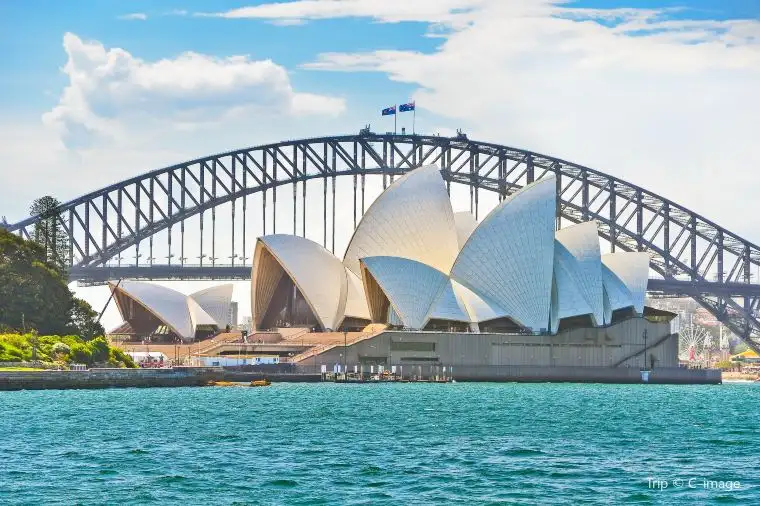
Sydney Attraction - Sydney Opera House / Source: Trip.com
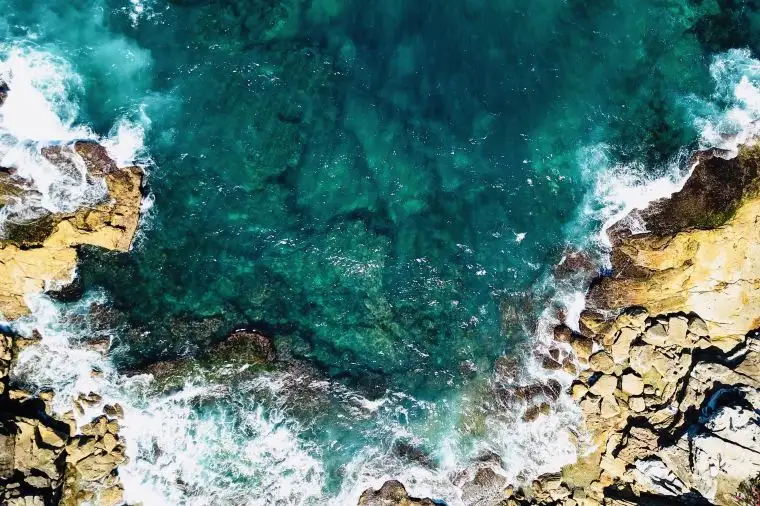
Sydney Attraction - Bondi Beach / Source: Trip.com
Australia Travel Cost Overview
Generally, you can expect to spend around AU$1,400 (USD $945) for a 7-day trip to Australia, including the cost of accommodation, transportation, food, sightseeing, and car rental.
** Note: Actual costs may vary depending on individual preferences and travel choices. **
- Flying from Nashville: tickets for around $2,383 one-way or $2,281 round-trip.
- Leaving from Boston: tickets for around $1,393 one-way or $2,497 round-trip.
- Flying out of Chicago: tickets for around $1,521 one-way or $2,629 round-trip.

Sydney Tower Eye / Source: Trip.com
👉 Of course, these prices are just estimates, so it's always a good idea to do your own research and shop around for the best deals. But hopefully, this gives you a rough idea of what to expect when it comes to the cost of flights to Australia.
Flights from New York to Sydney ✈️

- Sort by: Lowest Price
- Sort by: Earliest Flight

Crossed out prices are calculated based on the average price of the corresponding route on Trip.com.
Flights from Los Angeles to Sydney ✈️

Useful information about Flights to Australia ❗️❗️
- Los Angeles to Sydney takes 15 hours direct and just shy of 16 hours to Melbourne
- Dallas to Sydney takes 17 hours, while Houston to Melbourne is 20.5 hours
- Most international flights to Australia arrive at major airports in Sydney, Melbourne, or Brisbane.
- Australia's peak travel season is December to February, so expect higher ticket prices and more crowded airports during this time.
How to save money on flights?
- Compare flight times and airlines to find the cheapest overall option.
- Book your flight 12 weeks in advance to get the best deals.
- Join an airline loyalty program to earn rewards and discounts.
- Use airline miles or credit card points to travel at discounted prices .
- Take advantage of AARP membership to save up to $65 per person, per round-trip in economy
Accommodations
** Note: Prices may vary depending on location, season, and availability. **
Best Hotels in Sydney 🏨
Hilton sydney, meriton suites kent street, sydney, the fullerton hotel sydney, sofitel sydney darling harbour, radisson blu plaza hotel sydney, business travel, sofitel sydney wentworth, the tank stream sydney, an evt hotel, mercure sydney liverpool, the miller hotel north sydney an evt hotel, mantra parramatta, family friendly, yehs hotel sydney qvb, amora hotel jamison sydney, meriton suites sussex street, sydney, nomads sydney, yehs hotel sydney harbour suites, best hotels in melbourne 🏨, stamford plaza melbourne, grand hyatt melbourne, next hotel melbourne, curio collection by hilton, w melbourne, hyatt centric melbourne, atlantis hotel melbourne, crowne plaza melbourne, an ihg hotel, brady hotels central melbourne, intercontinental hotels melbourne, an ihg hotel, hotel grand chancellor melbourne, ibis melbourne central, ibis styles kingsgate hotel, novotel melbourne on collins, doubletree by hilton melbourne, jasper boutique hotel, transportation, how to save money on transportation.
- Another way to save money is to book hotel rooms for peak season in advance. This can help to get rooms for AU$150 to AU$250 in posh hotels.
- Alternatively, you can seek other options such as camping or hostels for accommodation. This can help to save money.
- You can also get an Opal Card which is free and can be purchased at the airport, train stations or any newsagent shop.
Sightseeing and Attraction Ticket
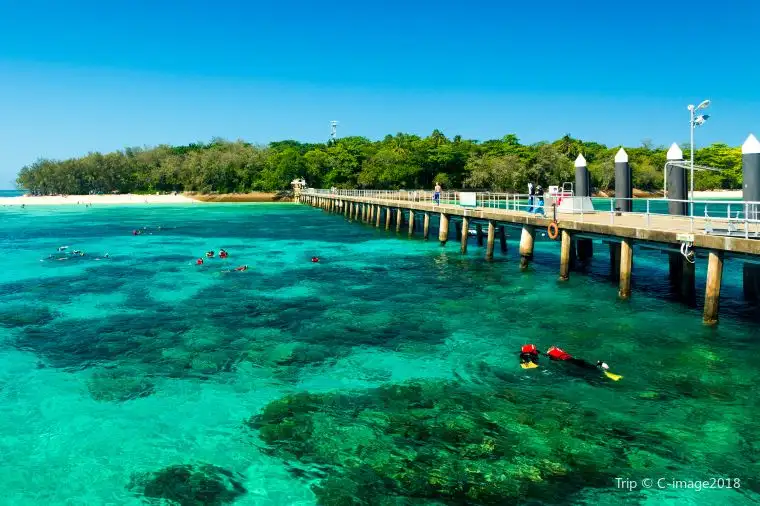
Cairns Attraction - Green Island / Source: Trip.com
Must-go Attractions in Australia 📍
>> SEA LIFE Sydney Aquarium Admission Ticket
>> Sydney Tower Eye Admission Ticket
>> 【Melbourne Attraction】Werribee Open Range Zoo Admission Ticket
How to save money on sightseeing in Australia 😳 ?

Sydney Attraction - Darling Harbour / Source: Trip.com
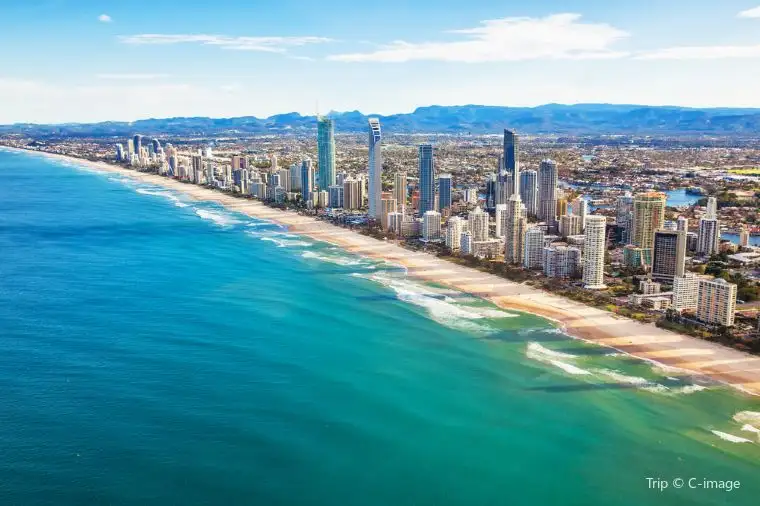
Gold Coast beach / Source: Trip.com
Wi-Fi and Communications
- Optus WiFi plans start as low as $45 per month
- Exetel's Everyday NBN Broadband Plan is $53.95 per month for the first 6 months and then $64.95 ongoing
- Aussie Broadband, Vodafone, iiNet, Kogan, iPrimus, and Telstra offer plans with higher speeds, such as NBN 250 or NBN 1000, for a higher cost
Trip.com SimCards

Prepaid Voice and Data simcards / Source: Trip.com
The best ways to buy cheaper souvenirs
- Australia's No. 1 Souvenirs & Gift Store
This store offers a variety of souvenirs at affordable prices, such as Kangaroo Clasp Pins for $12.99, Traditional Boomerangs for $24.99-$29.99, Cling Koalas With Vest 12 Pack for $9.99, Dot Kangaroo Black Folding Shopper Bag for $5.99, and Green & Gold Australia T-Shirt for $24.99.
- Shop at local markets
Local markets are a great place to find unique and affordable souvenirs. You can often find handmade items like jewelry, art, and crafts that are not available in tourist shops. Markets like the Queen Victoria Market in Melbourne and the Rocks Market in Sydney are great places to start.
- Buy from discount stores
Discount stores like Kmart, Target, and Big W offer a range of souvenirs at affordable prices. You can find items like t-shirts, keychains, and magnets with Australian designs at a fraction of the cost of souvenir shops. Look for stores near popular tourist areas.

Travel Insurance
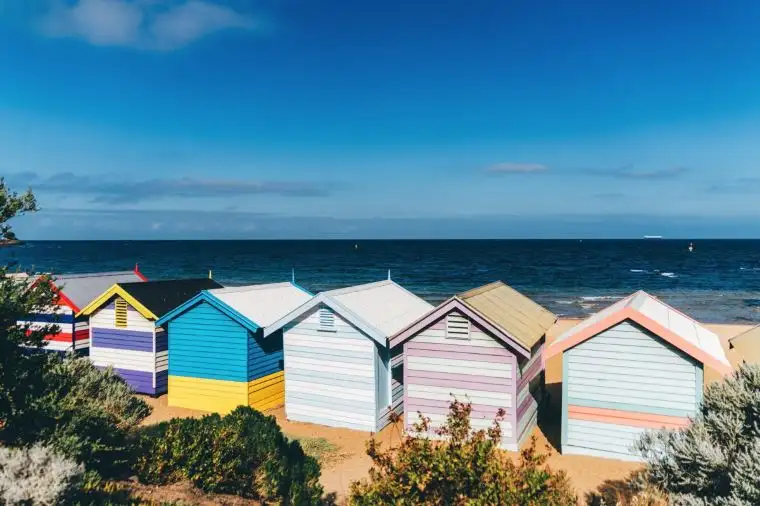
Brighton beach / Source: Trip.com
Why do you need travel insurance when traveling to Australia?
- Medical Emergencies
- Trip Cancellation
- Baggage Loss

Travel insurance / Source: Anete Lusina @ unsplash
How much does travel insurance cost when traveling to Australia?
- Factors that affect travel insurance cost
- Sample costs for travel insurance to Australia
Here are some sample costs for travel insurance to Australia:
- A 30-year-old traveler taking a two-week trip to Australia with basic coverage can expect to pay around $50-$80.
- A 50-year-old traveler taking a four-week trip to Australia with comprehensive coverage can expect to pay around $200-$300.
Travel Tips
Plan your itinerary
- Australia is a large country with many destinations to explore, so it's important to plan your itinerary in advance. Research the places you want to visit and the activities you want to do, and allow plenty of time to get around.
Prepare for the climate
- Australia has a diverse climate, with hot summers and mild winters in the north, and cooler temperatures in the south. Be sure to pack appropriate clothing for the climate, including a hat and sunscreen to protect yourself from the strong Australian sun.
Take out travel insurance
- As mentioned earlier, it's important to take out travel insurance to protect yourself from unexpected events such as medical emergencies, trip cancellations, and baggage loss. Compare policies and choose one that suits your needs and budget.
Respect the culture
- Australia has a rich and diverse Indigenous culture that should be respected. Learn about the local customs and traditions, and be mindful of cultural sensitivities.
Be aware of wildlife
- Australia is home to a range of unique and often dangerous wildlife, such as snakes, spiders, and crocodiles. Be aware of your surroundings and follow any warning signs or advice from locals.
Get a local SIM card
- If you plan on using your mobile phone while in Australia, consider getting a local SIM card. This can save you money on roaming charges and allow you to stay connected with friends and family back home.
Use public transport
- Australia has a good public transport system, including buses, trains, and trams. Using public transport can be a cost-effective way to get around, and it can also help you avoid the stress of driving in unfamiliar places.
Try the local cuisine
- Australia is known for its diverse cuisine, from fresh seafood to hearty pub grub. Be sure to try some of the local specialties, such as meat pies, fish and chips, and kangaroo meat.
Enjoy the great outdoors
- Australia has some of the most beautiful natural scenery in the world, including stunning beaches, rugged mountains, and ancient rainforests. Be sure to spend some time exploring the great outdoors and taking in the natural beauty.
Be prepared for emergencies
- Finally, it's important to be prepared for emergencies while traveling in Australia. Have a plan in place for what to do in case of an emergency, and make sure you have the necessary contact information for local authorities and emergency services.
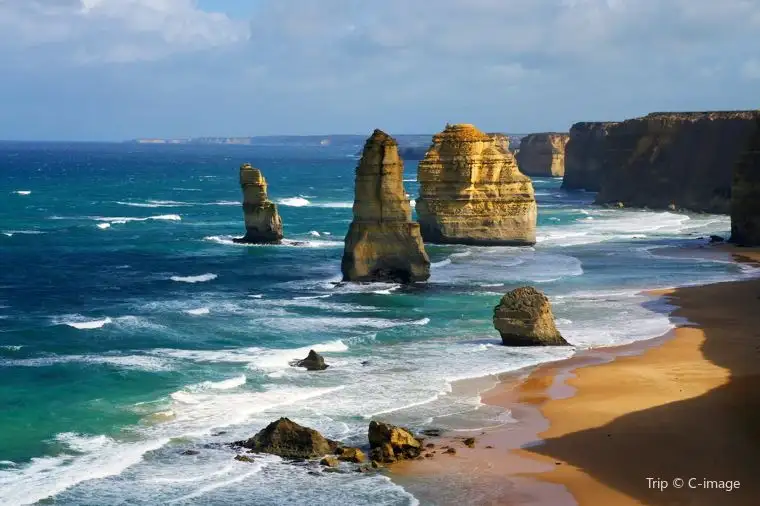
Twelve Apotles / Source: Trip.com
Looking to get the best deal on your next travel booking? Look no further than Trip . com ! With a wide range of flights, hotels, and vacation packages to choose from, you're sure to find the perfect option to suit your budget and preferences. Plus, with their user-friendly website and mobile app, booking your next adventure has never been easier. So what are you waiting for? Visit Trip.com today to start planning your next getaway!
How much does it cost to travel to Australia?
The cost of traveling to Australia varies depending on factors like the time of year, type of accommodation, and activities. Generally, a basic daily budget for backpackers is $70-$100 AUD, mid-range travelers should budget $150-$250 AUD per day, and luxury travelers should expect to spend over $400 AUD per day.
What is the cheapest time to travel to Australia?
The cheapest time to travel to Australia is typically during the low season, which runs from May to August. During this time, flights and accommodation tend to be cheaper, and crowds are smaller.
How much should I budget for flights to Australia?
The cost of flights to Australia varies depending on your departure location and the time of year you plan to travel. On average, travelers from the United States should expect to pay $800-$1,500 USD for a round-trip ticket.
How much does accommodation cost in Australia?
The cost of accommodation in Australia depends on the type of accommodation and its location. Budget hostels typically cost $20-$40 AUD per night, while mid-range hotels cost $100-$200 AUD per night. Luxury hotels can cost over $400 AUD per night.
What are some ways to save money while traveling in Australia?
To save money while traveling in Australia, consider using public transportation, cooking meals instead of eating out, and staying in budget-friendly accommodations like hostels or camping grounds.
Australia Travel Cost
- 2. Accommodations
- 3. Transportation
- 4. Sightseeing and Attraction Ticket
- 5. Wi-Fi and Communications
- 6. Souvenir
- 7. Travel Insurance
- 8. Travel Tips
- 9. Conclusion
<h3>Trending Searches</h3>
Popular Content
- Switzerland trip cost
- weekend getaways in alabama
- trip to greece cost
- Trip to Madagascar cost
- what to pack for china
- Trip to Puerto Rico cost
- weekend getaways from atlanta
- Trip to Panama cost
- Trip to Georgia cost
- Trip to Zambia cost
Popular Attractions
- tokyo disneyland tickets
- hong kong disneyland tickets
- Shanghai Disneyland Tickets
- hong kong ocean park tickets
- tokyo disneysea tickets
- blizzard beach water park
- universal studios singapore tickets
- walt disney studios park
- disney's hollywood studio
- animal kingdom
- Sanhuang Village
- Sinma Giant
- Shenzhen Civic Center
- Speed Karting (Fangcun Store)
- Qingdao Polar Ocean Park
Connectivity
- Switzerland eSIM
- eSIM Singapore
- Saudi Arabia esim
- Greece eSim
- China eSIM 1 Day
- eSIM Malaysia
- best china travel apps
- china payments app
- China Taxi App
Getting Around
- Narita Airport to Tokyo
- Eurail Pass Discount
- narita express
- Customer Support
- Service Guarantee
- More Service Info
- Website Feedback
- About Trip.com
- Terms & Conditions
- Privacy Statement
- About Trip.com Group
Other Services
- Investor Relations
- Affiliate Program
- List My Property
- Become a Supplier
- Meet the Team
- Work with Us
- Czech Republic
- Netherlands
- Switzerland
- Scandinavia
- Philippines
- South Korea
- New Zealand
- South Africa
- Budget Travel
- Work & Travel
- The Broke Backpacker Manifesto
- Travel Resources
- How to Travel on $10/day
Home » Oceania » Australia » Is Australia Expensive? (Insider’s Guide for 2024)
Is Australia Expensive? (Insider’s Guide for 2024)
Australia is a destination that everyone should make sure to visit in their lifetime. It’s where many backpackers decide to explore for a year, and then end up staying forever. There’s a reason for this; the country has it all .
With miles and miles of gorgeous beaches, an expansive outback, untamed national parks and wetlands, sprawling metropolis cities, good food, warm locals and amazing wildlife – what more could you want from a holiday destination?
But while we all know that Australia is a popular place to visit, the question remains: Is Australia expensive? The funny thing is, the answer often varies depending on who you ask.
The cost of a trip to Australia largely depends on your level of luxury and how much you want to do. Diving for example, is an expensive activity, while the beaches are free.
If you’re thinking of visiting Australia and need help putting together your travel budget, then I’m here to help. This guide has everything you need to know for how much it will cost to travel to Australia, as well as provide some tips on how to save money…

Do You Want to Travel FOREVER??
Pop your email in below to get a FREE copy of ‘How to Travel the World on $10 a Day!’.
So, How Much Does a Trip to Australia Cost on Average?
Cost of flights to australia , price of accommodation in australia , cost of transport in australia , cost of food in australia , price of alcohol in australia , cost of attractions in australia , additional costs of travel in australia , some final tips for saving money in australia , so is australia expensive, in fact.
The cost of a trip to Australia is going to vary from person to person. The first thing you need to do is to figure out how much you have to spend.
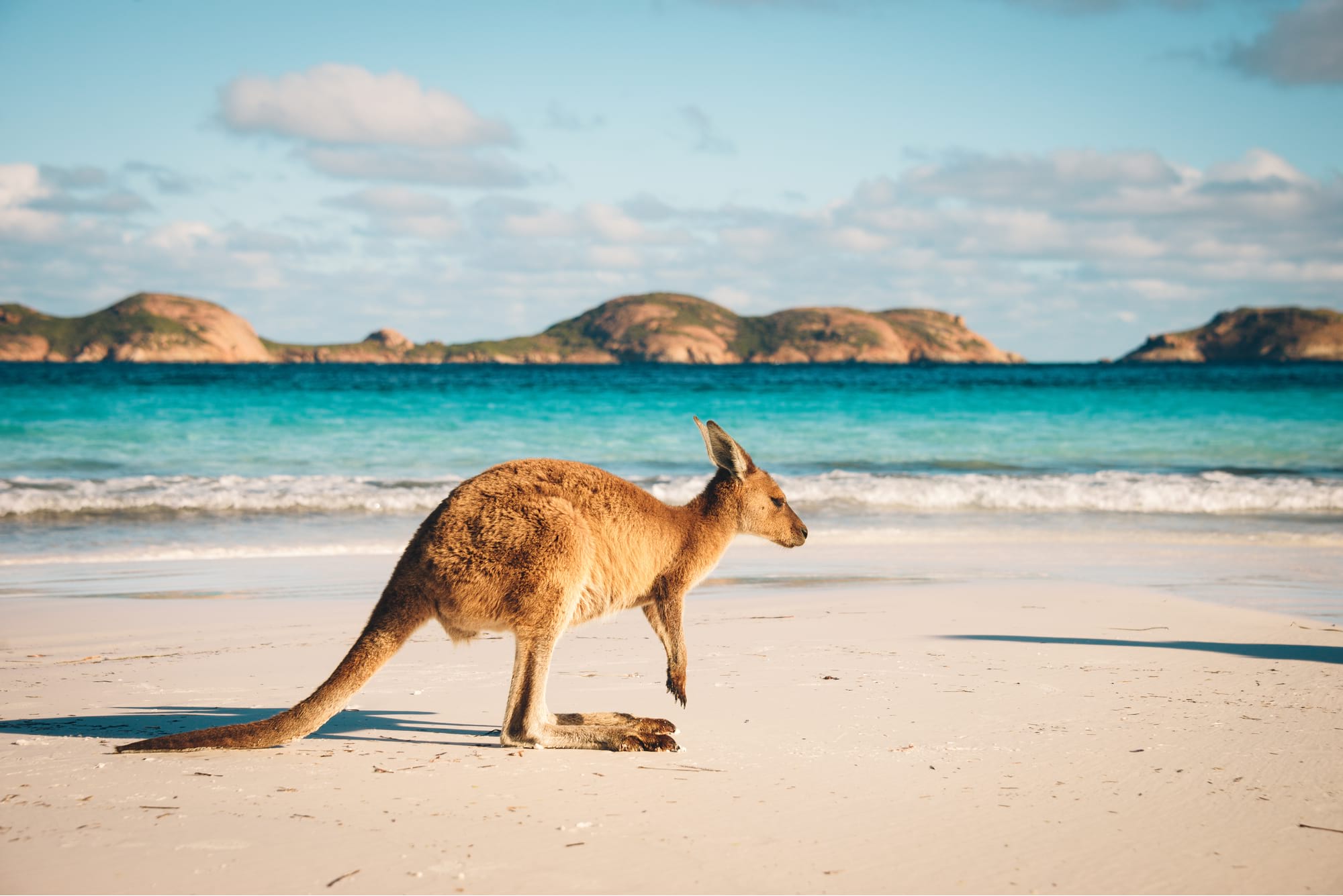
Getting a rough idea of your trip budget will help you work out what you can spend on essentials like accommodation and transport. You’ll also need to factor in the price of things such as food, activities and souvenirs, too.
All the travel costs listed in this guide are estimates and are subject to change. Prices are listed in US Dollars.
Australia uses the Australian Dollar (AUD). As of August 2022, the exchange rate is 1 USD = 1.45 AUD.
2 Weeks in Australia Travel Costs
To help you out with an outline of the prices, you’ll find a summary of the average costs of a two-week trip to Australia below.
ESTIMATED EXPENSE : $146 – $1,199 USD for a roundtrip ticket.
So is Australia expensive to fly to? Well, that really depends on where in the world you’re based. It’s true that airfares to Australia can be pricey, as the country is fairly far away from a lot of places. If you’re travelling from Europe or the U.S., you can expect to pay at least a few hundred dollars for your ticket.
But don’t let that put you off your trip. There are some ways you can get cheaper flights to Australia, it just takes a little time and being open-minded when it comes to times and dates. For example, tickets to Australia tend to be more expensive between the months of December to February when the nation is basking in warm summers.
Travelling to Australia in the shoulder seasons of autumn or spring can save you some serious cash when it comes to booking flights. Prices can creep up again in July and August when much of Europe takes its summer break.
If you’re heading to Aus, it’s likely that you’ll fly into Sydney Airport (SYD). The city’s main airport is located eight kilometres (around five miles) from the centre of town. It takes only around 30 minutes to drive into the city from the airport. The price of the transport from the airport should also be something you budget for, but more on that later.
Here are the average costs of a flight to Australia from a range of international air travel hubs:
- New York to Sydney Airport: $678 – $1,199 USD
- London to Sydney Airport: £685 – £986 GBP
- Dubai to Sydney Airport: 539 – 939 AED
- Vancouver to Sydney Airport: $601 – $1,119 CAD
Those of you flying from international travel hubs will see that the cost of flights isn’t particularly cheap. This is a long-haul flight, so you have to spend a lot for the privilege. Some good deals can be found, however, and you can make a trip to the land down under on a budget.
Make sure to put some time into searching on price comparison websites like Skyscanner. Be flexible with your dates and flight times and you’ll be shown a range of different flights at various costs. For the cheapest flight, you may have to break the trip up into different legs, but overall it can save you a good amount of money.
ESTIMATED EXPENSE: $18 – $200 per night
After you’ve sorted the flights, the next cost to consider is the price of accommodation in Australia. This is going to take up another chunk of your travel budget , but don’t worry too much.
Australia is a big country with a huge choice when it comes to budget-friendly places to stay, from its easy-going hostels to budget hotels and affordable Airbnbs. You won’t have to spend a stack of cash on expensive hotels.
The price you pay for a hotel room or hostel bed will fluctuate depending on the time of year you visit. Accommodation costs can skyrocket during the school holidays in the peak season. For example, a beach break in the Australian summer could cost more for the same beach-side Airbnb or hotel than in the winter. Accommodation prices also peak on weekends.
Another factor to consider is where you stay in Australia . Accommodation in the centre of the city tends to be more expensive, so look for neighborhoods further out and travel in. Likewise when visiting beach towns. You can find cheaper accommodation the further away from the ocean you are.
Let’s take a closer look at the range of accommodation that Australia has to offer…
Hostels in Australia
Australia has long had a culture of backpacking. Well-known as global travellers, Australians themselves love to get out and explore, as well as all the thousands of global backpackers who visit here. All of that adds up to a thriving hostel scene, one which is well-trusted, affordable, and a whole lot of fun.
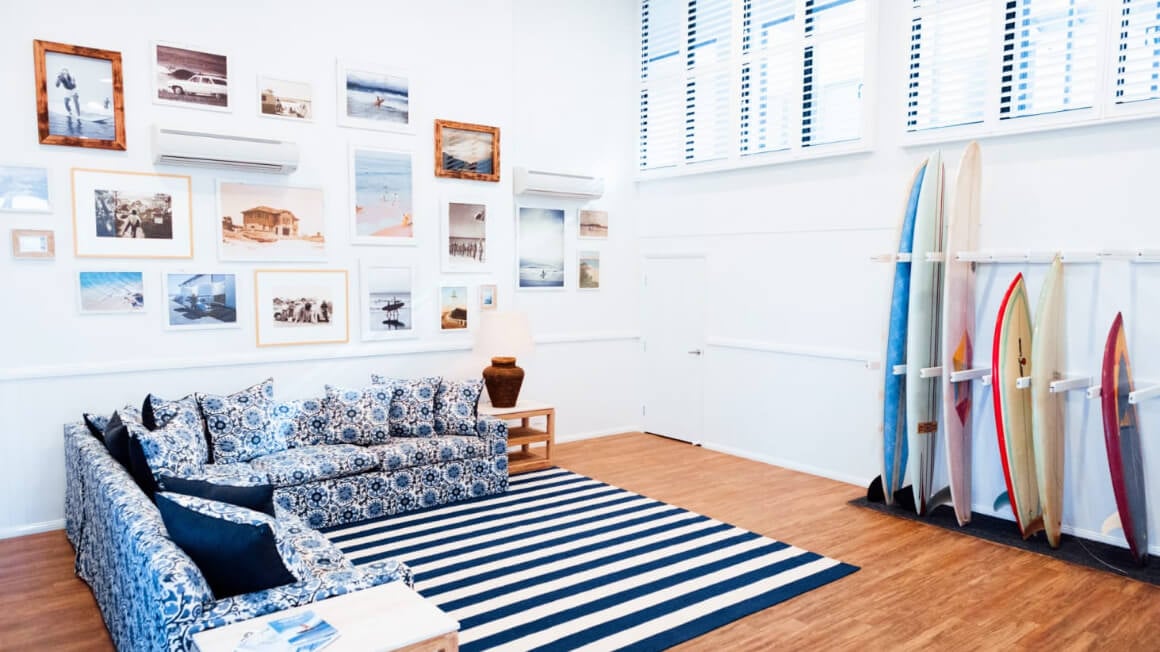
The cheapest hostels in Australia start at around $18 per night.
You won’t just find one type of hostel in Australia though. Head to a city and you can enjoy the shiny urban hostels complete with cafes and social lounges, while at the beach there are laid-back surfer vibes and BBQs, and then there are the happening party hostels.
Take a look at these top hostels the nation has to offer and get a better feel for the kind of affordable digs you could be staying in during your trip:
- Wake Up! Sydney Central – This award-winning Sydney hostel is conveniently located close to the city’s Central Station. A vibrant backpacker hub, it’s a great place to meet other travellers and get a good night’s sleep for a low price.
- The Mansion Melbourne – This chilled-out hostel inside a heritage building has recently had a facelift. Featuring new beds, a cafe, and a co-working space, it’s ideally located in Melbourne’s CBD.
- The Surf House – Get your surf on at this chilled-out hostel right near the Main Beach in Byron Town. There’s the option to book into a dorm or choose a private room complete with your very own balcony. Amenities at the hostel include a funky rooftop bar: the perfect spot for a few sundowners.
Airbnbs in Australia
Australia has tens of thousands of properties listed on Airbnb. From compact city condos all the way to palatial beach houses , all of these choices mean that the chances of you finding a reasonably priced place to stay are pretty high. Airbnb is a popular option for many as it means you can relax in a home away from home during a trip.
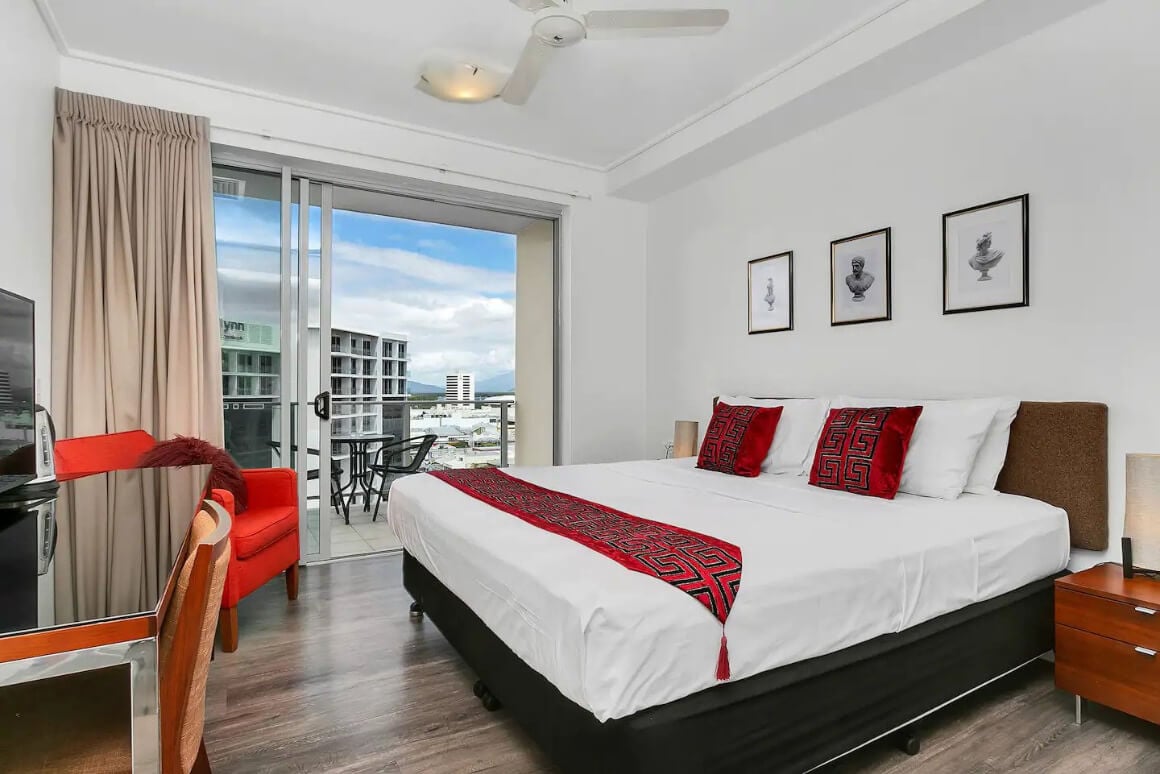
The price of an Airbnb in Australia does vary quite dramatically depending on the location. Sydney’s Airbnbs are usually a lot more expensive when compared to the country’s smaller cities. You should expect to pay upwards of $90 a night for an entire property. For a low-cost stay, a good option is to simply book just a room in a house on Airbnb.
But it’s not just about finding somewhere to grab a few hours of sleep. You want to stay somewhere that you can enjoy your trip, and that means cool apartments overlooking cityscapes, or tiny houses on the Gold Coast. Airbnbs offer the chance to see some amazing destinations and really helps to open up Australia to overseas visitors.
Opting for this style of self-catering accommodation can also help to ease the burden on your wallet. Whipping up a few meals and starting your day with a homemade breakfast will really take the edge off your travel budget (more on that later).
If you still think that Australia is expensive, take a quick peek at these affordable Airbnbs…
- Modern Design Suite Melbourne – This bright and modern apartment is located in Melbourne’s CBD. Boasting a queen-sized bed, pared-back interiors, and a fully equipped kitchen, it’s an ideal base for exploring what the city has to offer.
- Central Sydney Apartment – Offering up stunning views of Hyde Park and the cityscape, this affordable Sydney apartment is located close to all of the area’s cool cafes and green spaces in Darlinghurst and Surry Hills. It’s also within walking distance to iconic sights such as the Opera House and Sydney Harbor Bridge.
- Cairns City Apartment – Stay in style at this polished penthouse apartment in Cairns. Located on the 12th floor, you can soak up the amazing ocean views from a luxurious king-sized bed. There’s also a balcony and access to a pool, BBQ area, and gym.
Hotels in Australia
Hotels are usually the most expensive accommodation option and you can end up paying a whole lot of money for a simple room for the night. But Australia has a lot of different types of hotels to choose from, and you can find budget chain hotels and cool local hotels for low prices.
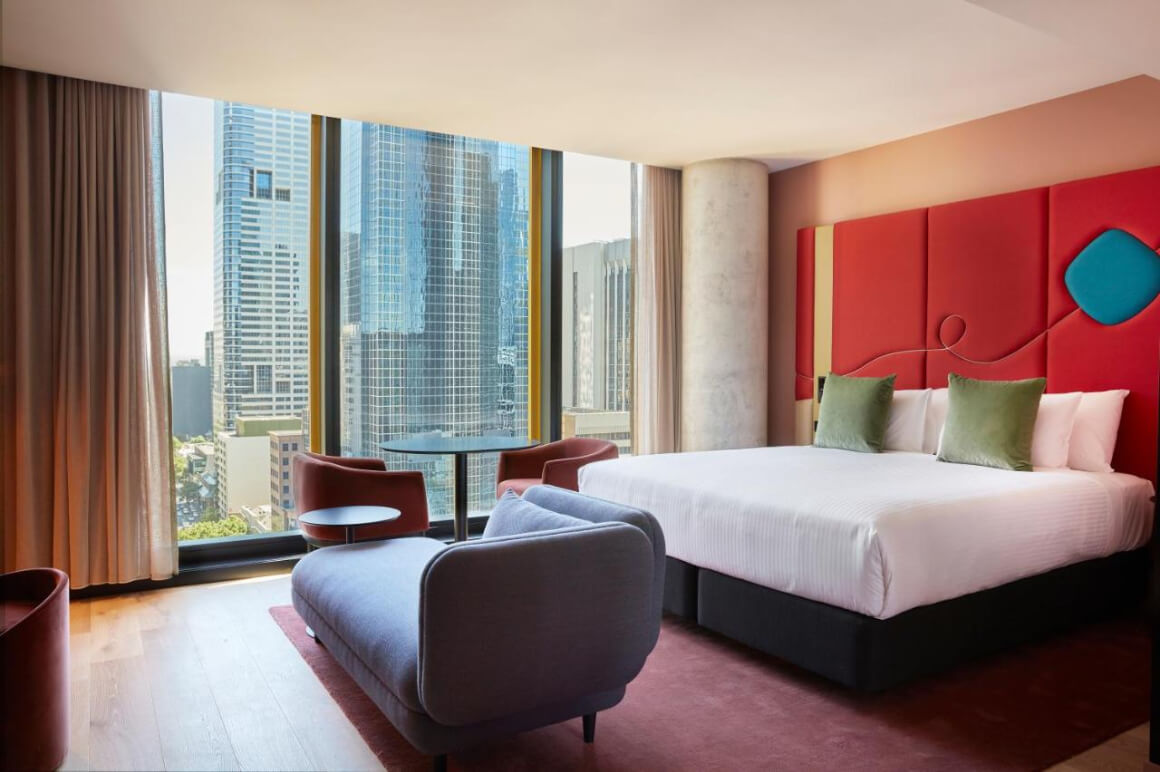
Most cities have budget-friendly hotels which cost around $70 a night. The room rates usually reflect the part of the city the hotel is located in. A good tip is to look for accommodation in student areas, or parts of the city that are backpacker hubs. Outside of peak tourist season, the price of hotels also drops.
They might be a little more expensive, but there’s no denying the perks of staying in a hotel. For one thing, you get a big comfy bed, room service, and other bonuses like on-site restaurants and gyms to use. Hotels are usually in easy-to-reach locations, close to public transport, which can also save you some cash.
Just to help you get started with your search for hotels in Australia, here’s a small sample of some affordable options:
- Quincy Hotel Melbourne – This modern hotel in Melbourne comes with a long list of amenities from the sunny outdoor terrace to the swimming pool and fitness centre. There’s also a restaurant and cafe to enjoy while polished rooms feature big comfy beds.
- Haven Glebe – This four-star Sydney hotel is perfectly located in cosmopolitan Glebe, close to public transport. Stylish rooms come with modern furnishings and a relaxing outdoor terrace.
- Cairns Colonial Club Resort – This family-friendly resort is set across 11 acres of tropical gardens. Located just a 10-minute drive from the city centre, it may be affordable but it comes with the use of facilities such as swimming pools and a restaurant and bar.

We’ve tested countless backpacks over the years, but there’s one that has always been the best and remains the best buy for adventurers: the broke backpacker-approved Osprey Aether and Ariel series.
Want more deetz on why these packs are so damn perfect? Then read our comprehensive review for the inside scoop!
ESTIMATED EXPENSE : $0 – $40 per day
Working out how to get around Australia can be pretty daunting at first. This is the sixth largest country in the world, after all. Taking up over 7,617,000 square kilometres and with a coastline that stretches for more than 34,000 kilometres, this is one big nation. Needless to say, planning where to go and how to get there could be a challenge.
Luckily, there’s a good selection of reliable ways to travel around Australia meaning getting from place to place isn’t too much of a headache. With over 300 airports and domestic airlines connecting all of the major cities and popular tourist sites, flying is a good option for those who are short on time.
For something a little more affordable, trains are a very popular way to travel in Australia. Most of the big cities have a railway network and there are some truly amazing railway journeys that travel through beautiful landscapes. Travelling by rail can be affordable, too, with a range of different train passes available for travellers.
But when it comes to budget travel in Australia, the bus reigns supreme. Getting from place to place in the country is made easy by the well-trodden backpacker routes that are plied by buses. There’s a choice of different bus companies to use and some low-cost bus tickets making it even more affordable.
For travellers who want to see a large portion of the country, one of the best and most popular ways to get around is by car. After all, Australia has the second-highest level of car ownership in the world. Most people choose to hire a car to do road trips during their down under adventures , but buying a car just for the trip can also be pretty cost-effective.
Let’s take a closer look at transport to work out if Australia is expensive to travel around.
Train Travel in Australia
There are some truly epic railway journeys across Australia’s stunning landscapes. That being said, taking the train isn’t always the cheapest or most convenient way to get around. Train journeys in Australia are more about the experience rather than practicality. Trains in Australia are run by a selection of government and private companies.
Some of the best railway journeys include The Ghan, the famous train that connects Adelaide through the Red Centre to Alice Springs and to Darwin. Then there’s the Indian Pacific route which takes three days to cross the great Nullarbor Plain between Sydney and Perth. The Great Southern links Brisbane and Adelaide, and the Overland runs to Melbourne from Adelaide.
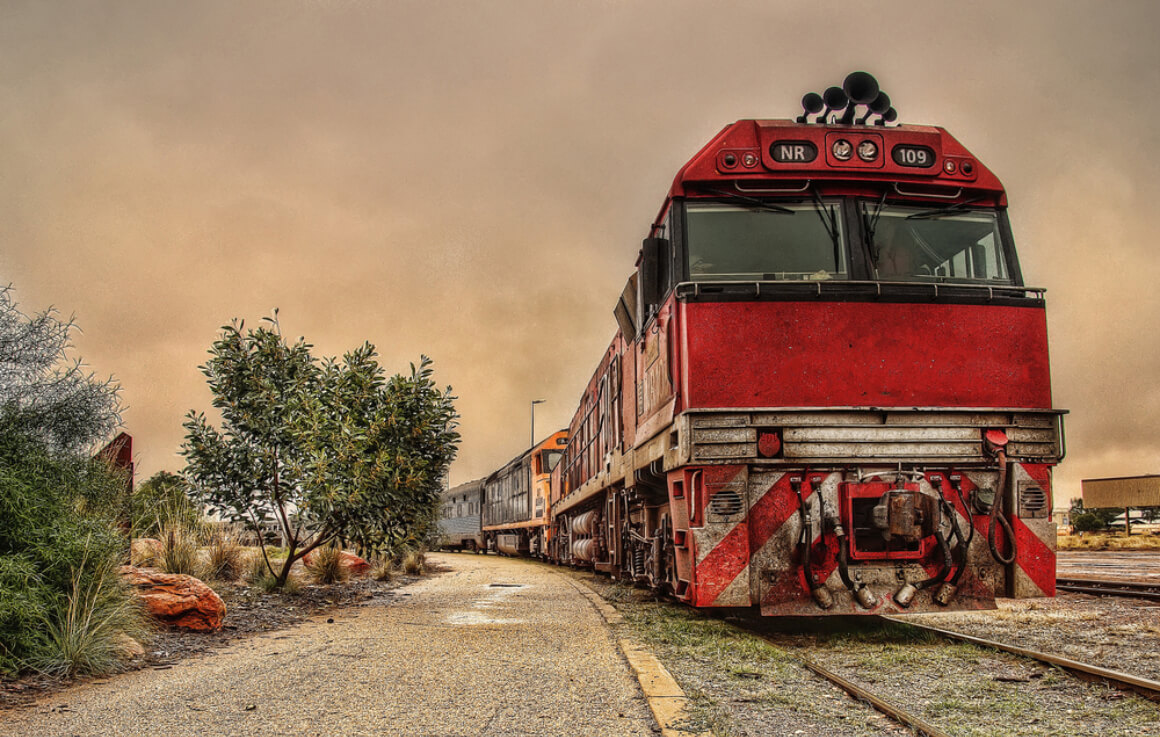
There are no high-speed trains in Australia, although plans to build high-speed routes have been in the works for some years. If you do want to take advantage of the sightseeing and the sense of adventure on offer from Australia’s railways then make sure to book in advance.
Booking at least six months in advance will give you over 10% discount on certain routes; sometimes you can save up to $25. Families will be pleased to learn that children under the age of four travel free. Rail passes can help to make the price of a train trip much cheaper with a variety of different routes and passes on sale.
Here’s a look at just some of the railway passes on offer in Australia.
- Discovery Pass – 14 days $160: unlimited travel in New South Wales, as well as on routes to Brisbane and Melbourne on NSW TrainLink.
- Queensland Explorer Pass – 1 month $206: unlimited travel on most train services in Queensland.
- Queensland Coastal Pass – 1 month $100 : allows travel one-way between Brisbane and Cairns with unlimited stops.
Hopping aboard air-conditioned trains that connect Sydney with Melbourne, Brisbane and Canberra cut out the need to pay for expensive airfares. The routes are run by NSW TrainLink, which runs daily XPT trains between Sydney to Melbourne. There’s also an overnight train so you can save time and on the cost of accommodation by bedding down on the train.
The choice of month-long passes is an ideal choice for those who are thinking about travelling long-term in Australia, or in a certain region. Most of the passes offer a choice of days, weeks, or months, so all you have to do is choose the option that suits you and get travelling.
Bus Travel in Australia
Australia has a sizable bus network which makes getting between destinations straightforward. The buses are well-used by travellers for getting around, as they ply the most popular destinations and big tourist spots. It might not be as exciting as a flight or even a train journey, but bus trips in Australia are a whole lot more affordable
The only downside of grabbing a seat on a bus is that the distances are long . You should know that routes often take multiple hours to drive and night buses are not uncommon. On the bright side, the buses are clean, and modern, and have that much-needed aircon. Overall the services are reliable and there are even toilets and wi-fi on board.
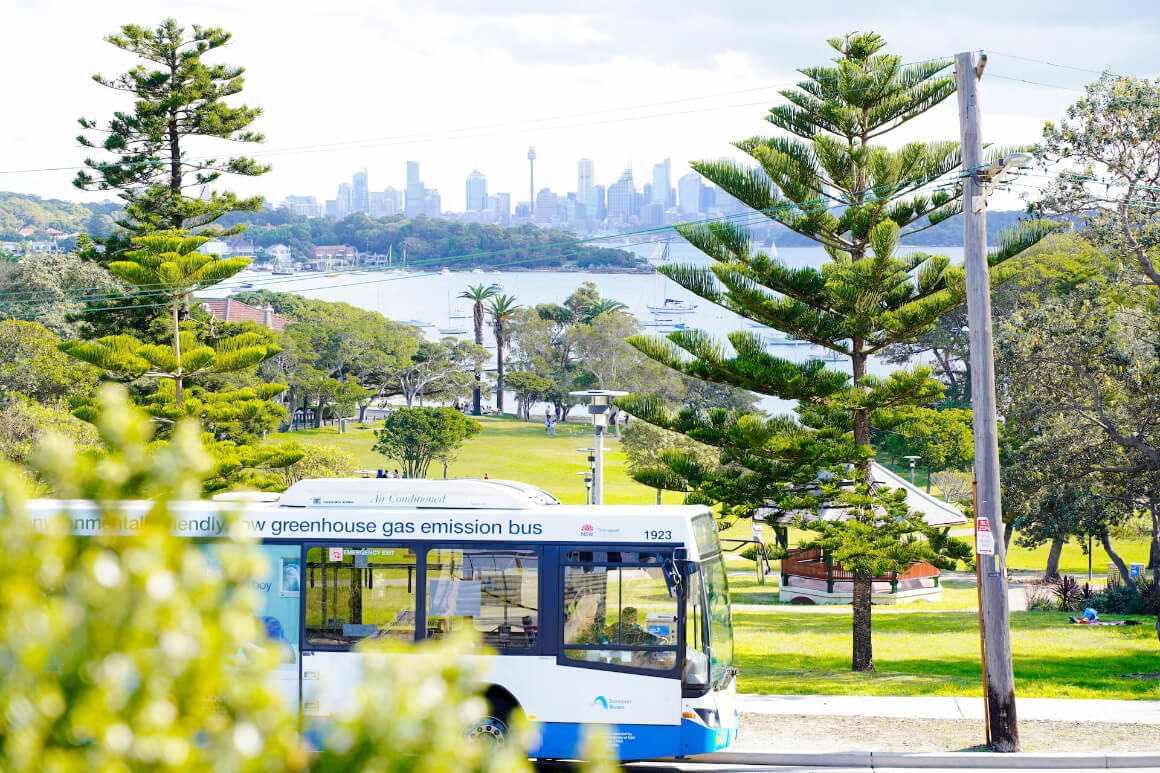
The main bus companies are Greyhound, Intercity Coach Lines, and Firefly Express. Tickets are easy to purchase online ahead of time and you can even buy hop-on and hop-off fares, which really adds a lot of flexibility to your trip.
Fares will vary depending on the length of the trip and the destination, but overall bus travel in Australia is really good value, especially if you use the Greyhouse Bus passes .
One example is the Greyhound East Coast Australia Bus Pass, which can be used on the route up the East Coast and costs $172.
Possibly one of the best options when it comes to affordable transport in Australia is the Greyhouse Whimit Bus Pass. The flexible pass gives you unlimited travel on the Greyhound network in a specific block of time – for example, costs are 30 days, $289; 90 days, $413; and 115 days $234.
Overnight buses in Australia also can help to save you some money on accommodation so you can turn up at your destination and get exploring.
Flying in Australia
Being such a huge country, one of the most popular ways to travel around is by catching a flight. If you don’t have much time and want to see some particular sites in Australia, the best way to get around is by flying. Driving and train travel can take days so the only option to get around quickly is to catch a plane.
In recent years, there have been more budget operators flying interstate routes in Australia, but prices can still be expensive. One-way flights from Perth to Darwin cost around $250; Sydney to Melbourne cost around $100.
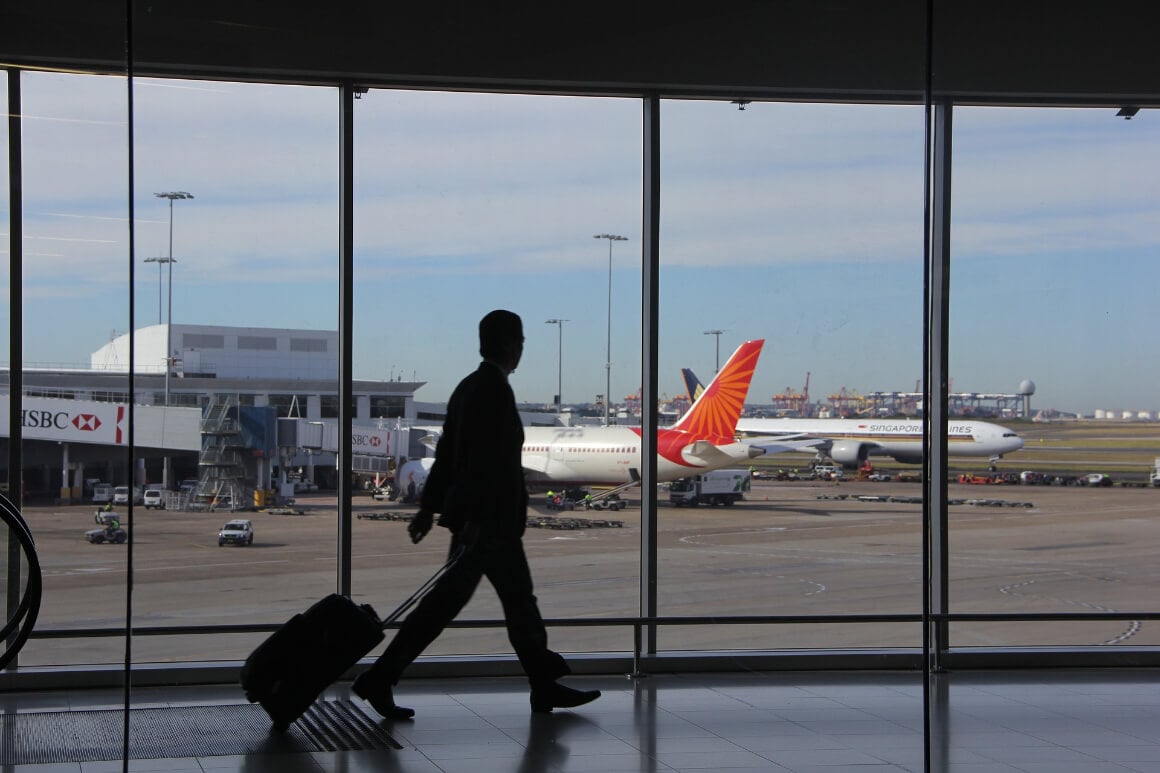
There are some discounted tickets sold by various airlines in Australia. One option is the Walkabout Air Pass which will give you three discounted flights within the country, but this must be booked when you book your international flight to Australia.
The best way to secure deals on flights in Australia is to book in advance and try to be flexible when it comes to times. Otherwise, if you really need to schedule a flight for your trip, you’ll just have to budget for it accordingly.
Getting Around Cities in Australia
Once you’re on the ground in Australia, you’re going to want to explore all of the sights and fun local neighbourhoods in its towns and cities. Luckily, Australia’s cities have some easy-to-use public transport networks so you can leave the car behind and take the train or bus instead.
The Australian cities of Sydney, Melbourne, Brisbane, Perth, and Adelaide all have extensive rail networks, but only Sydney has a metro network. However, Melbourne, Brisbane, and Perth all have city-centre commuter trains that work pretty much the same as a metro.
Sydney can be a bit daunting at first, but you’ll be able to rely on cheap public transport to get around. One of the best ways to see the city is by taking one of its ferries. That way you can see the sights and get around quickly and cheaply, too.
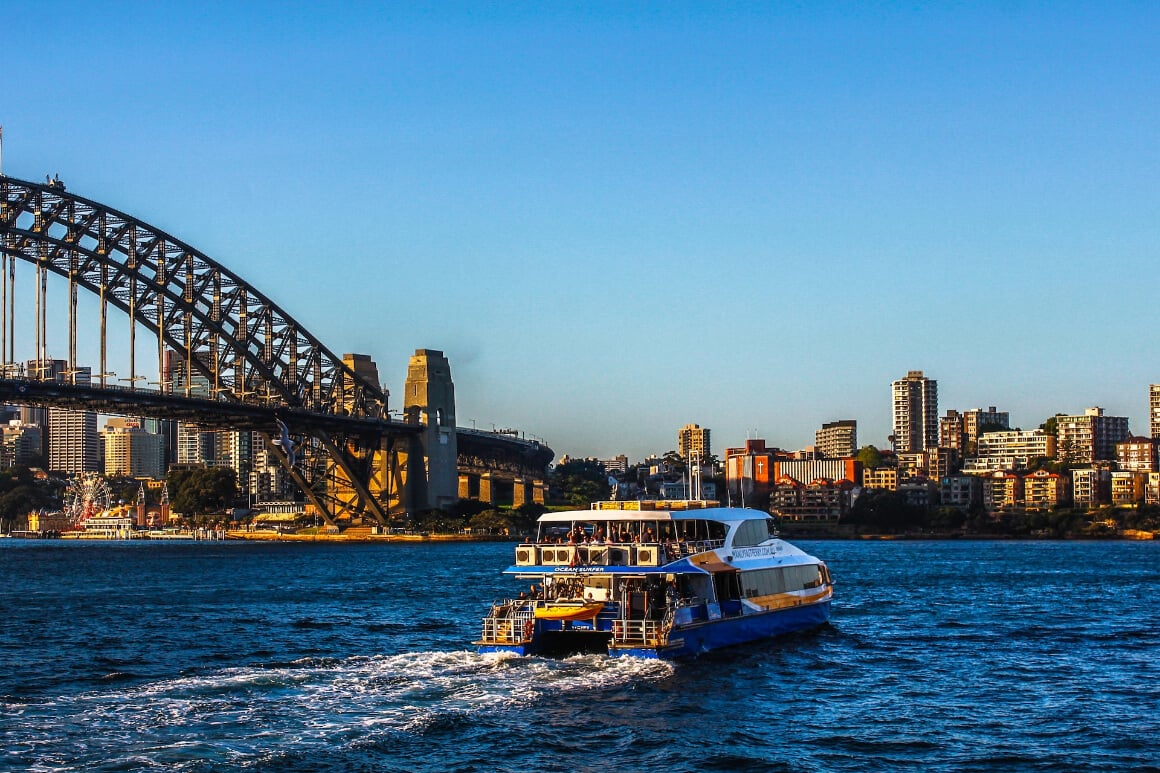
You can also get buses around the city. The network is run by Transport NSW which operates buses from 4:30am to 12.00pm as well as night buses. Big city bus hubs can be found at Circular Quay, Wynyard station, Central Station, and Town Hall Station.
Sydney has an electric ticket called the Opal card . You can order one online before your trip or simply pick one up at the newsagents and convenience stores in the city. The minimum credit is $10, but if you pick one up at the airport you will be charged $35 which is the fee to catch the train into the city centre.
For those of you who like to cycle in cities, it’s best to stick to the metro. Sydney isn’t well known when it comes to great cycle routes; there are a whole lot of hills to tackle and the infrastructure isn’t well-laid out for cyclists.
If you want to get around quickly and it’s not rush hour then you can always hop in a taxi. Reliable and affordable for short tips, just make sure to avoid them at busy times.
Renting a Car in Australia
Australia is an amazing place to take a road trip . Getting behind the wheel and hitting the road in Aus is what dreams are made of. This absolutely enormous country has some epic roads that make taking a trip by car always a good idea. You can breeze through the desert and stop off at far-flung towns to have the most memorable trip ever.
Choosing which route to take or how long you have to spare can be hard to work out though. There’s a selection of different vehicles to select from depending on the journey you’re going to be embarking on. For shorter trips, a normal car should be totally fine just as long as it’s a new and well-maintained vehicle.
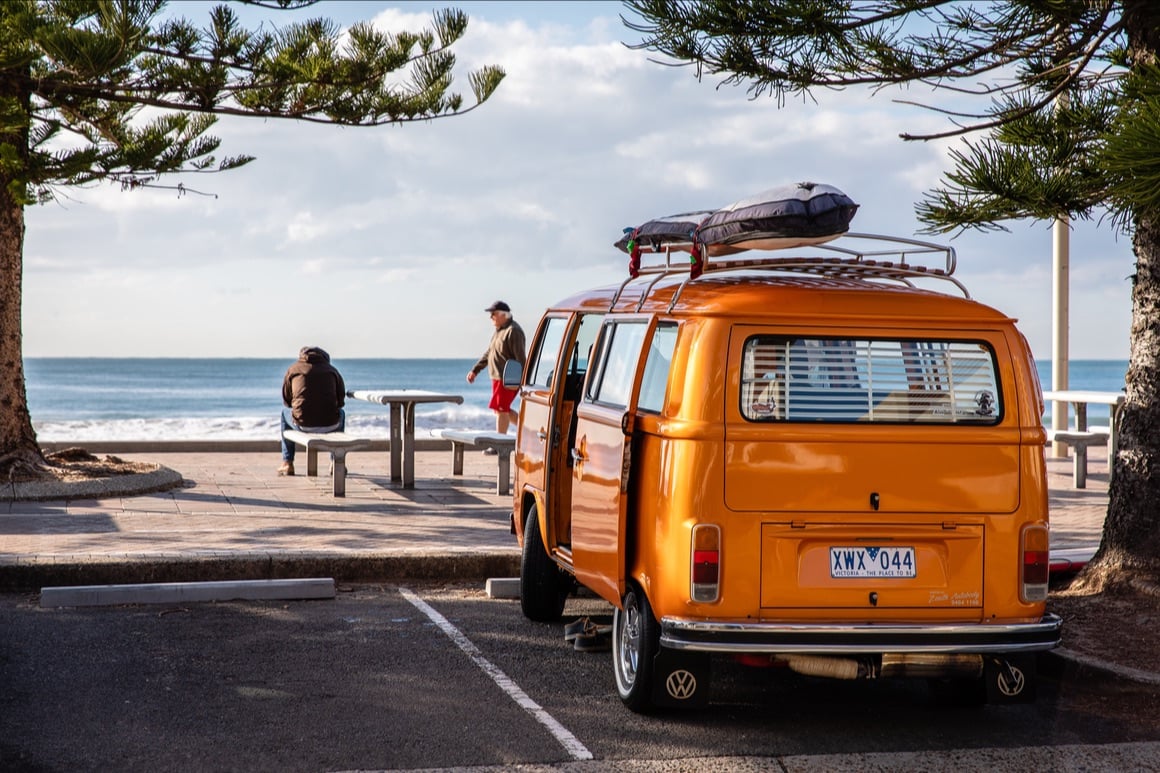
For a longer trip, you may want to consider hiring a larger car or even a campervan to travel around in. Campervans are a good idea if you’re travelling as a group or as a couple.
You can save a lot of money when it comes to accommodation costs but will need to pay to camp overnight at campsites, though there are places you can camp free of charge which can save you some cash.
The average cost of car rental in Australia is $1,903 per month, which is around $63 per day. This price will vary depending on the size of the car and the time of year. You can find a long list of international firms in big cities and at airports, as well as smaller local companies in local communities.
It’s a good idea to check that Collision Damage Waiver (CDW) is part of the rental price being quoted, and you should also take note of the additional insurance which can cost upwards of $9 per day. Parking can also cost $15 or more a day depending on the location.
One more cost that you will want to factor into road trips is the price of toll roads. Some of Australia’s roads are privately owned and the cost of tolls can quickly add up. Fuel in Australia is currently priced at around $1.16 per litre.
Want to save some cash and explore Australia by rental car? Use rentalcar.com to find the best deal possible. There are some great prices on the site and they aren’t difficult to find.
ESTIMATED EXPENSE: $10 – $50 USD per day
Australia is well known for one type of food: Barbecue. This is the nation’s famous al fresco cook-up which takes place in backyards, on beaches, and at campsites. The food culture of Australia has a lot of its roots in British dishes, but over the years has developed its own sense of identity and style
Australia is lucky to have a ton of fresh ingredients grown around the nation as well as enough coastline which means a supply of fresh seafood is never too far away. International influences and exciting flavours help to add unique twists to classic dishes.
Here’s some food you should look out for when in Aus.
- Fish and chips – Like the British, the Australians love their fish and chips. Think freshly caught fish fried in a golden batter and served up with some sizzling chips. Make sure to always eat where it is best, right by the sea when it’s wrapped in paper.
- BBQ – If you’re from the US, this isn’t the kind of barbeque you know and love. Australians use their grills to cook meaty feats of sausages, burgers, and seafood. The cooked food is then served up with bread, salads, and sauces. A few beers to wash it down is a must.
- Kangaroo – Yes, you might think these cute guys are the icon of the nation, but the truth is they taste pretty good, too. It’s not unusual to see ‘roo meat on sale in supermarkets and on restaurant menus in the form of burgers and steaks. It’s delicious and lean as well.
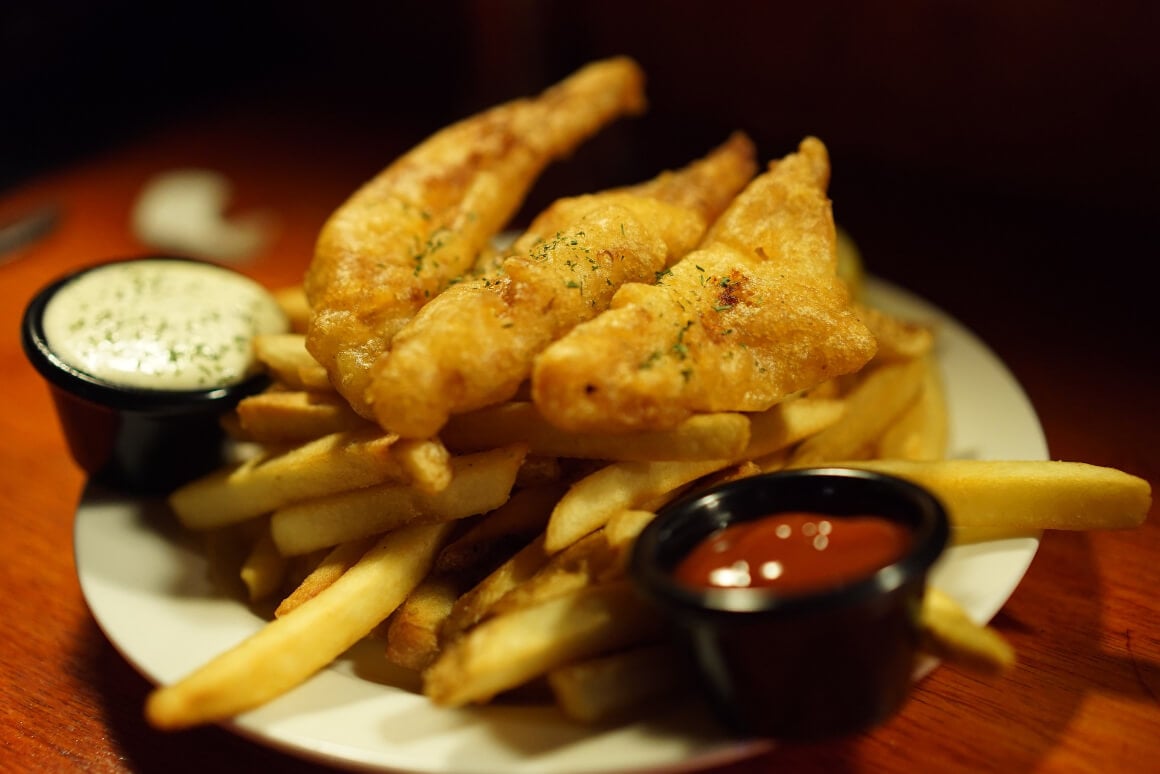
Is Australia expensive for food? Well, depending on where you eat, it really can be. Here are a couple of handy tips to help you enjoy some good food in Australia that doesn’t break the bank.
- Look for apps with deals – Download some of Australia’s apps that show you free tables at local restaurants and which will entice you in with cheap last-minute deals, too. Options to try to include EatClub, which can get you up to 50% off meals, and Liven.
- Look for lunchtime deals – Throughout the week you’ll find that lots of pubs and restaurants have great lunch meal deals. All you have to do is turn up and fill up on your lunch for a whole lot cheaper than the price of a normal meal at the same place.
- Get onboard with Cheap-arse Tuesdays – Yes, you guessed it. Tuesday is the day of the week when eateries, cinemas and bars slash their prices in order to get customers through the door. You can get some really cheap deals on Tuesdays so make sure you don’t miss out
Where to Eat Cheaply in Australia
Depending on what part of town or city you are staying in Australia can be expensive for food and drink. But there are some ways you can stick to your daily travel budget and still enjoy a whole lot of tasty food. Here are a couple of helpful tips…
- Return Servicemen Leagues (RSLs) – These long-established Australian institutes were set up to provide support to soldiers returning home after WWI. Now, these networks of clubs are pillars of the local communities and serve some pretty fantastic value meals; the Bondi iteration sells steaks for $10 on Wednesdays.
- Bakeries – Bakeries in Aus are in a league of their own. A community staple, stop by to pick up a warm sausage roll or meat pie for less than $5. The cakes are awesome, too. There are also Vietnamese bakeries that sell banh mi for between $5-7.
- Go for Thai – Thai food has made a big impact on Australian cuisine over the past few decades. You can find Thai eateries in all sorts of neighbourhoods and they’re a great place for a casual meal. Meals usually cost around $12 with lunch special around $10, you can even get cheap drinks, too.
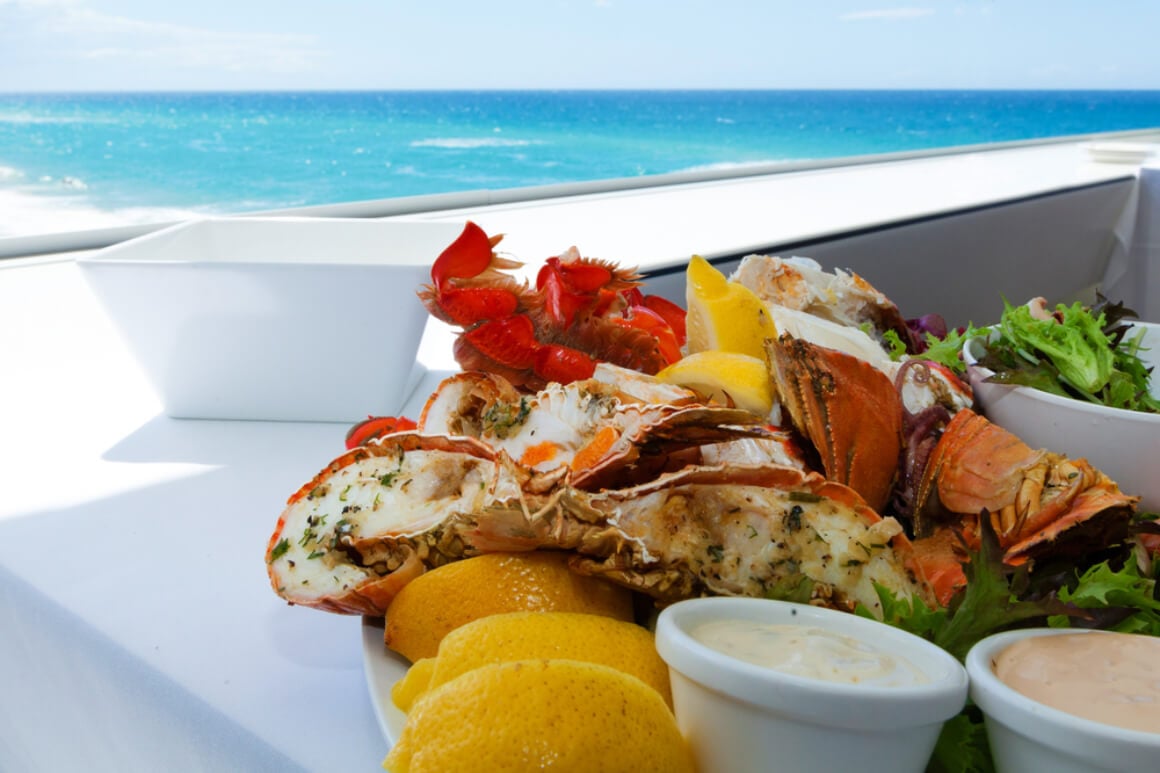
But when you’re on a big trip and trying to stick to a budget, you can’t eat out all the time. There will be meals where you have to cut back a bit on the cost and simply cook for yourself.
Thankfully, Australia has a good selection of cheap supermarket chains that are reliable places for buying low-cost ingredients.
- Aldi – With some of the lowest prices around, Aldi is a favourite of budget shoppers in Australia. Shoppers can purchase a range of global products as well as fresh fruit and vegetables. Some shops have their own bakeries.
- Woolworths – While it may not be the absolute cheapest, Woolworths can be found up and down the country and sells a selection of fresh produce and locally sourced ingredients. It’s reliable and you can find some pretty good deals.
ESTIMATED EXPENSE: $0 – $38 per day
Whether it’s having a few drinks, a few cold ones with mates, kicking back with a glass of wine after work, or a stubbie with a BBQ, Australians love a drink. The nation has a strong culture of drinking and you don’t have to go far to find a bar or shop that sells alcohol.
The culture around drinking is fairly relaxed, it’s often a part of social situations and it’s pretty normal to see people grabbing a few drinks after work or with their friends and families. But the price of alcohol in Australia can be surprisingly expensive. In 2018 the minimum price for alcohol was set at $1.30 per drink.
Pub culture is also a big part of drinking in Australia. Wherever you are in the country, chances are you’ll be able to find a local pub in the town. These social hubs are where you will find locals drinking but they can also be frequented by families and students in certain areas.

The cheapest places to drink in Australia can usually be found around areas that are popular with backpackers or students. Bars in these parts of town will advertise cheap drinks deals and happy hours to entice budget-minded party-goers through the doors.
Beer is available all over Australia and is typically sold in a 425ml glass called a schooner or a 570ml pint. Costs range from $6 for a schooner, or upwards of $10 for a pint.
Wine is also a very popular drink in Australia. After all, the nation produces some fantastic home-grown wine. Glasses of wine in a bar will cost around $6-$8, while a bottle of wine is usually priced anywhere between $14 and $20 (at the lower end).
Cocktails at a nice Melbourne restaurant or in a swanky bar in Sydney will usually cost you somewhere between $10 and $15.
Read on to find out what regional specialty drinks you should make sure to try on your trip:
- Lemon Lime and Bitters – This refreshing cocktail has become a national favourite. Made with a mix of lemonade, lime juice cordial, and Angostura bitters, the low alcohol content means that it’s sippable throughout the day.
- Shiraz – You can’t leave Aus without enjoying a delicious glass of home-grown shiraz. Prices vary but you can pick up a great bottle from a supermarket for around $20 and spend the evening savouring the flavour.
For when you really want to party, make sure not to miss out on the happy hours. If you want to have a few drinks and not break the bank, happy hours are for you. Just keep an eye out for adverts in bar windows and check out good happy hours near you online. The best part is that food is often included in the deal too!
ESTIMATED EXPENSE : $0 – $35 USD per day
Australia offers up a whole world of fantastic attractions that are bound to keep you busy during your trip. This might not be a visit to Rome with all of its history, or even a break in Paris, but what Australia does offer is modern cities, wonderful beaches, and a stunning selection of national parks.
This country is definitely one for those who love the great outdoors. Aus is awash with activities that will get your adrenaline racing or simply chill you out along the coast. You’ll be able to choose from epic water sports like surfing and diving or spend the day sunning yourself at the beach.
The costs of popular activities can be expensive. Taking a tour of a winery in the Yarra Valley costs approximately $50 per person, whereas if you want to spend the day diving you should put aside about $250 for the trip.
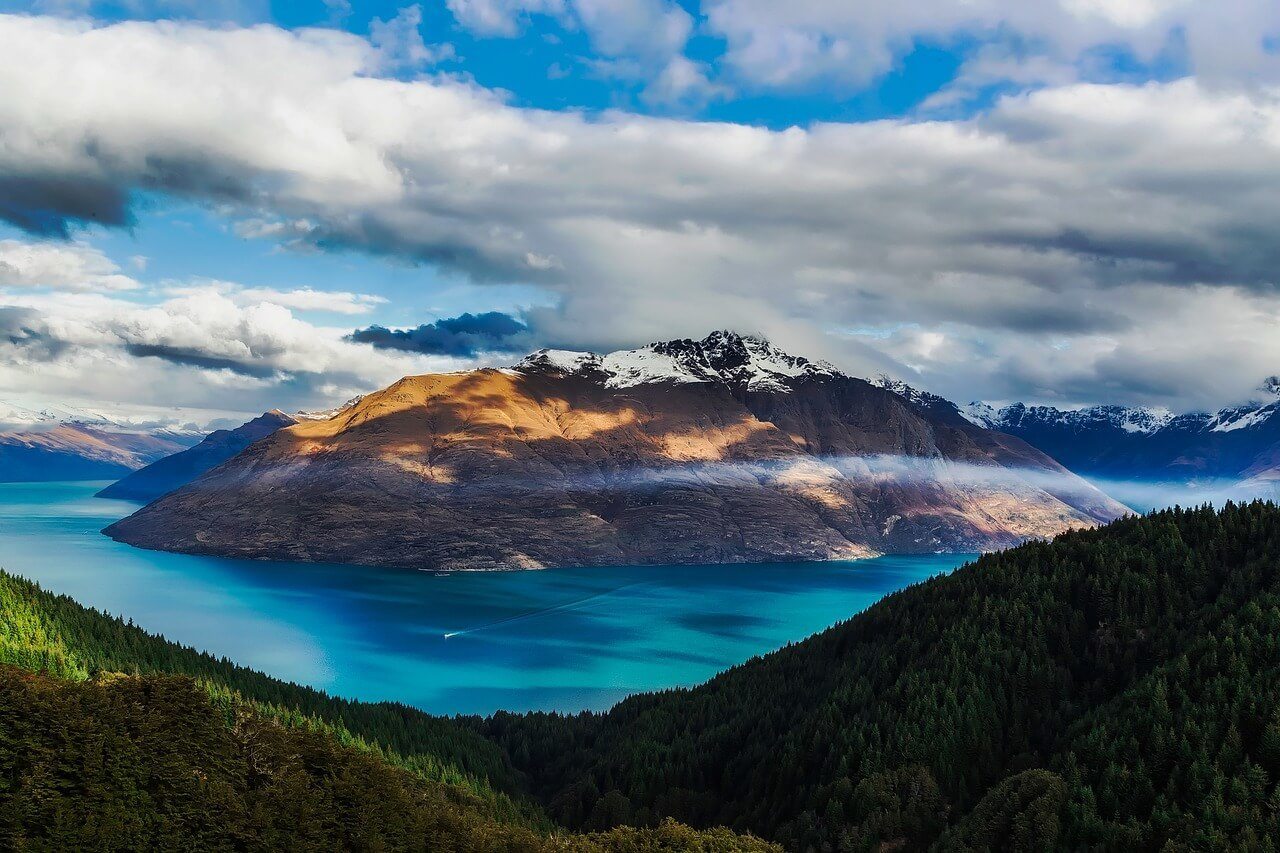
Australia’s national parks are great places to get stuck into the natural scenery for a small price. A lot of the parks don’t charge entrance fees, while some only charge a small amount. They often have camping facilities and other amenities for visitors to use.
If you want to make full use of the parks, it’s a good idea to purchase an affordable National Park Pass which can make longer visits much cheaper. You can spend days hiking in the wonderful scenery and spend hardly any money at all.
When you’re in a town or city and want to spend the day at a museum or gallery, make sure to budget around $10-$20 for the ticket. Some places do have free entry days or offer discount prices to students. Cities like Sydney have passes for tourists which include skip-the-line entrance.
To help you save money on attractions in Australia, here are some pointers to take into consideration:
- Take a walk – One of the best ways to get to grips with a new city is to hit the streets. Sydney is a fantastic place to have a stroll, especially around the harbour. Walk across the bridge, meander the parks and soak up the history – all for free. Better yet, take the Free City Walking Tour which departs daily from Sydney Town Hall.
- Hit up Darling Harbour on Saturday night – this vibrant hub for food and culture is the perfect place to catch the free Darling Harbour Fireworks. Simply kick back and enjoy and then wander around the neighbourhood soaking up the weekend ambience.

A new country, a new contract, a new piece of plastic – booooring. Instead, buy an eSIM!
An eSIM works just like an app: you buy it, you download it, and BOOM! You’re connected the minute you land. It’s that easy.
Is your phone eSIM ready? Read about how e-Sims work or click below to see one of the top eSIM providers on the market and ditch the plastic .
By now, you should hopefully have a pretty good idea of your Australia travel budget. I’ve outlined the cost of food, flights, accommodation, and activities. There are a few more things that you will need to factor into your daily budget, however.
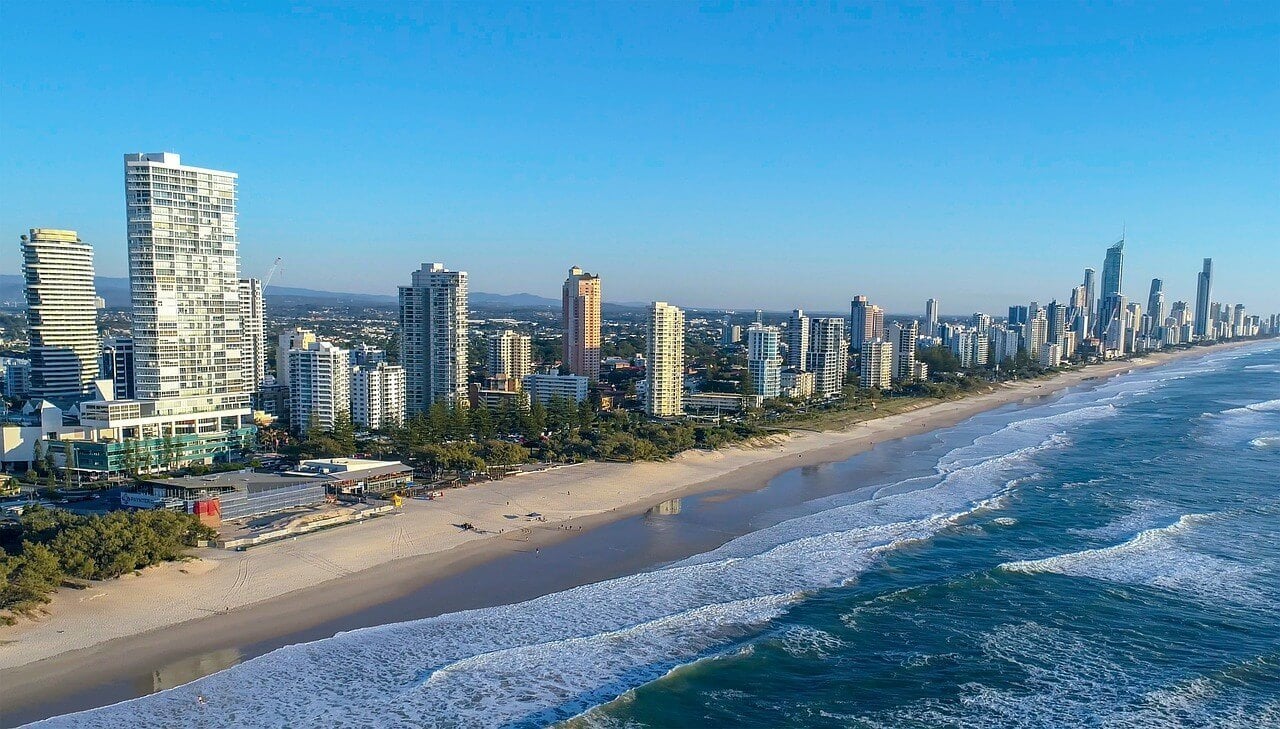
Hidden daily costs can be hard to plan for in advance, but can quickly add up when you’re out and about on a trip. You could see some nice gifts you want to pick up for your family and friends, or you might even want to buy yourself some souvenirs to remember your trip.
Other costs that you might not foresee include paying for laundry at hostels, storing your luggage at a station, or buying a coffee every morning. All of these small costs will add up and can really make a dent in the cost of your trip.
It’s a good plan to put aside around 10% of your trip budget for these one-off purchases so the costs don’t creep up on you.
Tipping in Australia
As with most places in the world, tipping is a voluntary action and not something you have to do in Australia. That being said, you should try to leave a token of your gratitude for the waitstaff after a good meal or if you have received particularly good service.
It’s normal to leave a tip in restaurants in Australia, around 10% is the normal amount that is left. Sometimes gratuity is already included on the bill at the end of the meal; if that’s the case, you don’t have to leave a tip. But you don’t actually have to pay the gratuity if you don’t think the service was up to scratch.
If you’re at a cafe and have enjoyed a nice coffee or lunch, then you could opt to leave a few dollars for the staff. In this case, around 5% or simply rounding up the bill is a good idea. Some people might just put a few dollars in the tip jar on the counter.
When you’re on a tour or are taking part in an activity like scuba diving and you have really enjoyed your experience, it’s a nice gesture to tip the tour leader a few dollars at the end of the day. This is also very much appreciated if you’re taking advantage of a free walking tour in a city like Sydney.
For services such as hairdressers and drivers, you don’t need to tip, but if you have been pleased with the level of service then a few dollars (or rounding up) is a nice amount to leave. The tip is not expected, however.
At high-end hotels sometimes tipping is par for the course. Usually, guests would leave a couple of dollars for the concierge or the bellhop. It’s also fairly common to leave a token of appreciation for the housekeeping team to show them your thanks.
Overall, Australians in the service industry are paid a good living wage and do not usually have to supplement their paycheck with tips. You don’t have to tip in Australia, but it’s always nice to tip for good service.
Get Travel Insurance for Australia
Before you jet off on your big Australia getaway, there’s one thing you should take a moment to consider. And no, it’s not if you should pack a few more pairs of pants.
Life can throw all sorts of things in the way of a good time, so you might want to check out travel insurance before your tip. Being covered by travel insurance can help if things go wrong or can simply cover you for delayed flights or lost luggage.
ALWAYS sort out your backpacker insurance before your trip. There’s plenty to choose from in that department, but a good place to start is Safety Wing .
They offer month-to-month payments, no lock-in contracts, and require absolutely no itineraries: that’s the exact kind of insurance long-term travellers and digital nomads need.

SafetyWing is cheap, easy, and admin-free: just sign up lickety-split so you can get back to it!
Click the button below to learn more about SafetyWing’s setup or read our insider review for the full tasty scoop.
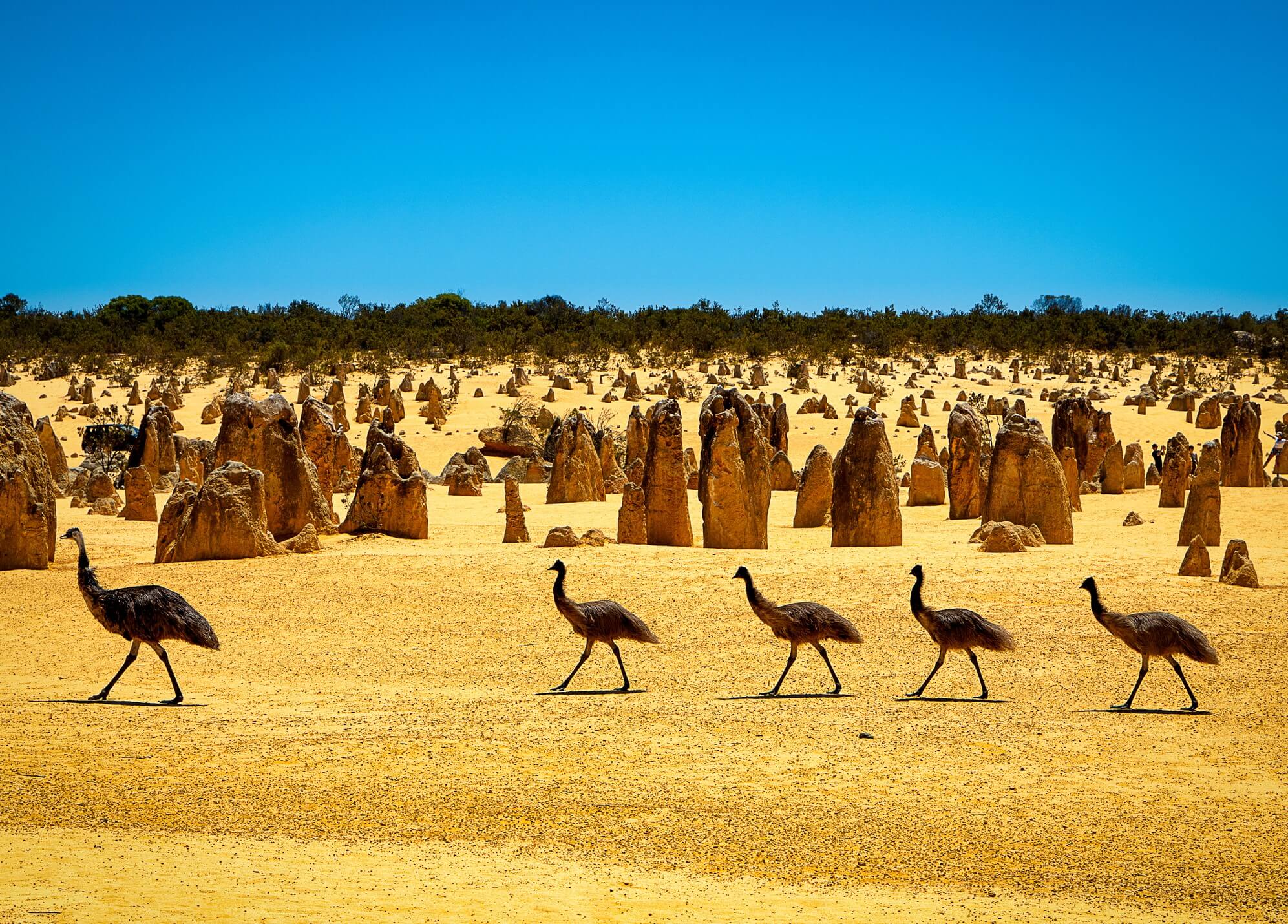
Ok, I’ve gone over pretty much all the big costs and hopefully helped to answer the question of ‘Is Australia expensive?’ So before we all head off into the sunshine, here are some final pieces of money-saving advice…
- Try not to rush it – Australia is one big country and it’s best seen at a slow pace. If you want to see everything in a short amount of time you are going to quickly burn through your budget by spending over the odds on accommodation and flights. Take it slowly and enjoy.
- Hit up the hostels – Hostels are where it’s at for budget travel in Aus. Not only are they good places for a cheap sleep, but they also have great social scenes and a list of free activities that guests can get involved with.
- Have a water bottle : Don’t waste money on plastic, bottled waters; carry your own and refill it in the fountains and the tap. If you’re worried about potable water, get a filtered bottle, like the GRAYL, which filters out 99% of viruses and bacteria
- Don’t be fixed to one date – If you really want to save money on your trip then you need to be flexible with when you fly. Costs of flights can fluctuate from week to week meaning you could save hundreds of dollars just by booking your trip for a week or two later.
- Book transport in advance – Trains and buses are the cheapest way to get around but to really secure good prices you need to book trains well in advance and buses are cheapest if you purchase a bus pass before you travel.
- Earn money while you travel: Teaching English while traveling is a great way to make ends meet! If you find a sweet gig, you may even end up living in Australia.
- Look for deals – There are so many deals to be had in Australia, from happy hours to bargain dinners in pubs. Just keep your eye out for cheap eats and activities. Join groups on social media, download apps, and sign up for mailers so you don’t miss out.
- Become a volunteer with Worldpackers : Give back to the local community and, in exchange, you’re room and board will often be covered. It’s not always free, but it’s still a cheap way to travel in Australia.
- Don’t try to do everything – Sometimes we simply try to fit too much into a trip. You might be better off just sticking to one portion of the country and seeing how it goes. In the long run, you could actually end up enjoying your trip a lot more and saving money on long-distance travel, too.

Our GREATEST Travel Secrets…
Pop your email here & get the original Broke Backpacker Bible for FREE.
I’ve said it before and I’ll say it again, Australia isn’t that expensive. This far-flung destination has a rich array of wild natural scenery, super friendly people, and an easy-going beach scene. It’s true that it can be expensive – if you stay in expensive hotels and eat out every night.
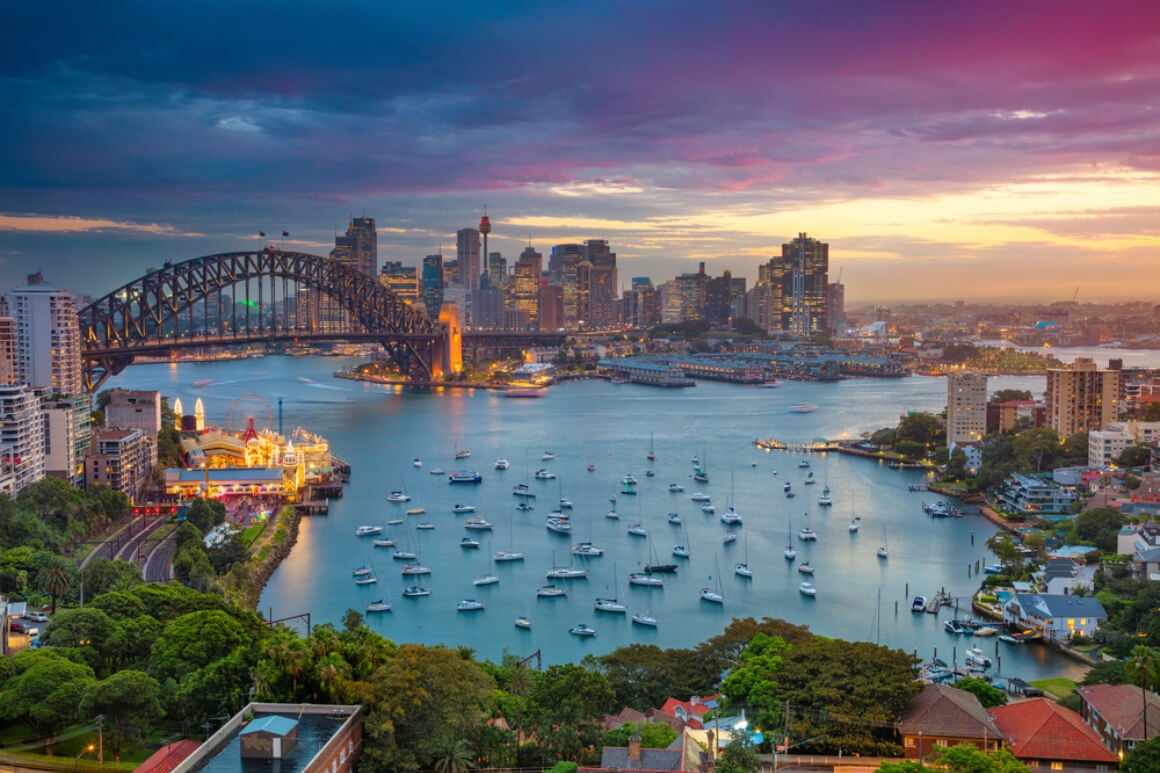
But your trip doesn’t need to break the bank. Australia is well used to budget travellers and has got a great choice of cheap accommodation, backpacker bars, and affordable transport for you to take full advantage of.
What we think the average daily budget for Australia should be:
So, as long as you don’t try to do everything, a reasonable budget per day for Australia is around $45.

And for transparency’s sake, please know that some of the links in our content are affiliate links . That means that if you book your accommodation, buy your gear, or sort your insurance through our link, we earn a small commission (at no extra cost to you). That said, we only link to the gear we trust and never recommend services we don’t believe are up to scratch. Again, thank you!
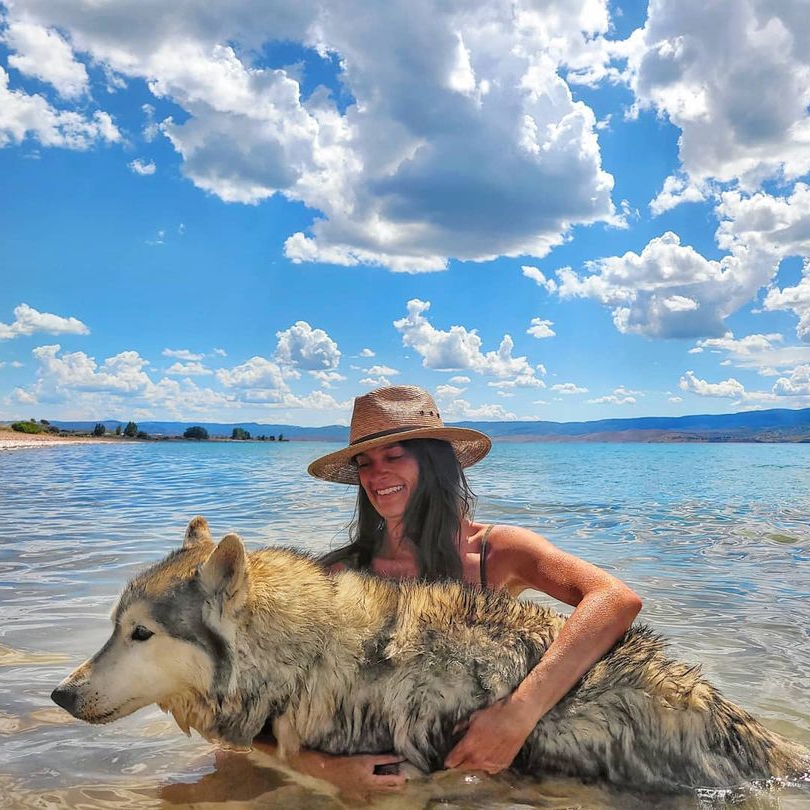
Alexandria Zboyovski
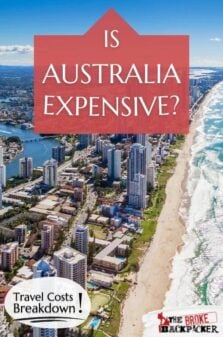
Share or save this post

Leave a Reply Cancel reply
Your email address will not be published. Required fields are marked *
Save my name, email, and website in this browser for the next time I comment.
Notify me of followup comments via e-mail.

Australia Road Trip Budget: A Detailed Cost Breakdown
By: Author Lotte
Posted on Last updated: December 16, 2022
Categories Australia

In this post you can read about our Australia road trip budget, I hope this will give you an idea about the cost to travel to Australia.
Australia is the 6th biggest country in the world, so big in fact that it counts as a continental landmass!
With more than 823,000 kilometers of road available to be explored, it is an amazing road trip destination ( read more Australia Trivia here ).
We love love love love road trips, in fact, it's our favorite way to travel. We've gone on lots of road trips in countries such as New Zealand , Japan , Portugal , Oman , Canada , and the U.S.A.
I can say from experience that road-tripping is one of the best and cheapest options to travel!
Australia road trip budget: how much does it cost to travel to Australia?

Disclosure: Some links in this post are affiliate links. If you make a purchase through one of these links, we may earn a small commission (at no extra cost to you!). We're very grateful when you use our links to make a purchase:-).
How much does it cost to go to Australia?
Have you always dreamed about a Working Holiday in Australia? Check out Global Work & Travel and get a €100 discount with the coupon code PHENOMENALGLOBE .

Australia is infamous for being a rather expensive destination, however, we managed to travel Australia on a very reasonable budget.
For everyone wondering: Is Australia expensive to visit? It doesn't have to be! We spent less than €100 a day (for us as a couple) during our 6-week road trip from Cairns to Melbourne.
Check the infographic below for our Australian budget breakdown and read along for tips to save money in Australia.

Australia travel budget: important facts and figures
- I traveled around Australia with my husband , and all expenses mentioned are for the two of us together.
- I quote prices in € and Australian Dollar (AUD) . The exchange rate usually is around €1 = 1,50 AUD. Of course, the exchange rate varies, check the most recent rates here .
- We spent 6 weeks in Australia, on an average day we spent €98 / 146 AUD .
- Our average daily travel budget includes all our travel costs in Australia, it does not include the costs for our tickets to Australia. Also, as a travel blogger, I was fortunate enough to work with Travellers Autobarn campervan rental and several tour companies which decreased our expenses.
- My trip started in Cairns and ended in Melbourne. You can find our East Coast road trip itinerary here .
Cost to travel Australia: our average daily expenses
- Campervan: 65% of daily costs
- Accommodation: 4% of daily costs
- Food and drinks: 19% of daily costs
- Activities and miscellaneous expenses: 12% of daily costs

1. Renting a campervan in Australia: how much does it cost?
I'm 100% convinced the cheapest way to travel to Australia is with a camper van (or a car and a tent).
We rented a Kuga campervan from Travellers Autobarn and drove from Cairns to Melbourne in a little less than 6 weeks.
The Kuga van was great and very comfortable! The kitchen had a sink, a m icrowave, and a small fridge. The 35-liter water tank usually lasted us around 3 days.
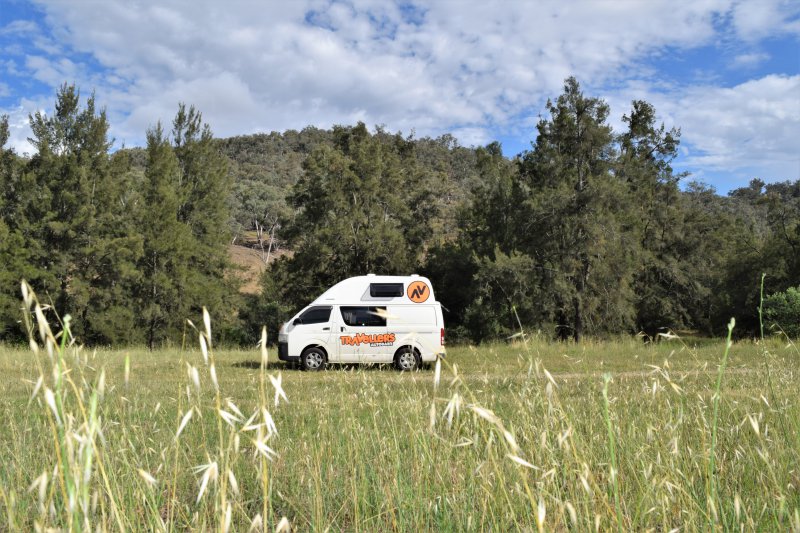
The large bed could easily be converted to a seating area, but since we traveled in November and December we spent most of our time outside.
The curtains let in very little light, which was nice because the sun came up quite early in the South. During our trip we never had any issues with the car, it was well-maintained and clean.
In the infographic, you can see that the daily rental costs for the campervan were €63 / 93 AUD . These costs are divided into 2 categories:
Rent of the campervan
Costs for petrol.

Daily rental costs
I was fortunate to work with Travellers Autobarn and received a discount on the daily rental price of our Kuga. With this discount, the costs per day for the camper van were €47 / 70 AUD .
The only insurance we added was a 75 AUD payment to insure any damage to the windshield.
We didn't take out any additional insurance to reduce our bond liability (in case of an accident we would have had to pay up to 2500 AUD).
It's always a gamble whether or not insurance will be worth it or not. During our New Zealand road trip I bumped into another car and I was very happy we had taken out additional insurance.
During our Portugal road trip we paid for extra insurance as well but didn't need it, so we kind of wasted that money.
In the end you won't know what's smart until you hand the vehicle back in, damaged or not. It's up to you if you want to risk it;-).
Check prices online
Depending on the season, the type of campervan you want to rent and the additional items you choose you can pay as little as 35 AUD per day .
You can see the different types of vans and get a quote on the Travellers Autobarn website .
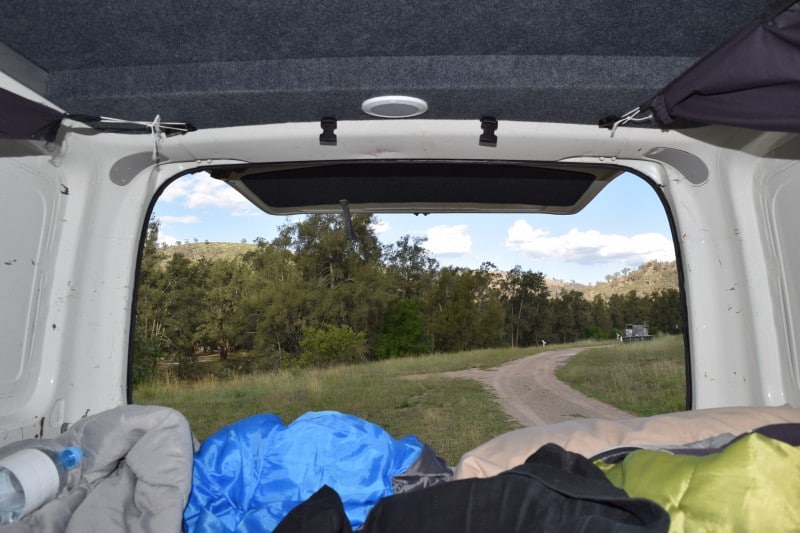
Fuel isn't cheap in Australia and distances are big, so fuel made up a significant portion of our daily expenses (17%) .
On average we paid €16 / 23 AUD per day. We fueled up on either Unleaded 91 or Unleaded 95. Not all gas stations sell 91, but at the ones that do this is usually the most economical option.
What really helped us to find the cheapest fuel option available was the Motormouth website (also available as an app).
The website shows the current price level of petrol stations all around Australia, there can be quite a big difference between them.
Checking the Motormouth website or app before fueling up can definitely help to save some money!

2. How to find budget accommodation and free campsites in Australia
In the infographic, you can see that the total daily costs for accommodation were €4 / 6 AUD . These costs are divided into 2 categories:
Paid campsites
- Airbnb accommodation
We slept in our campervan pretty much all the time and were pleasantly surprised by how many free campsites we found during our road trip.
We found these campsites via Campermate , a great free app where you can find information about the site and read comments from recent visitors.
Some of these free campsites even had free hot showers! During our six-week road trip we only paid for 2 campsites, the rest of the sites were free.
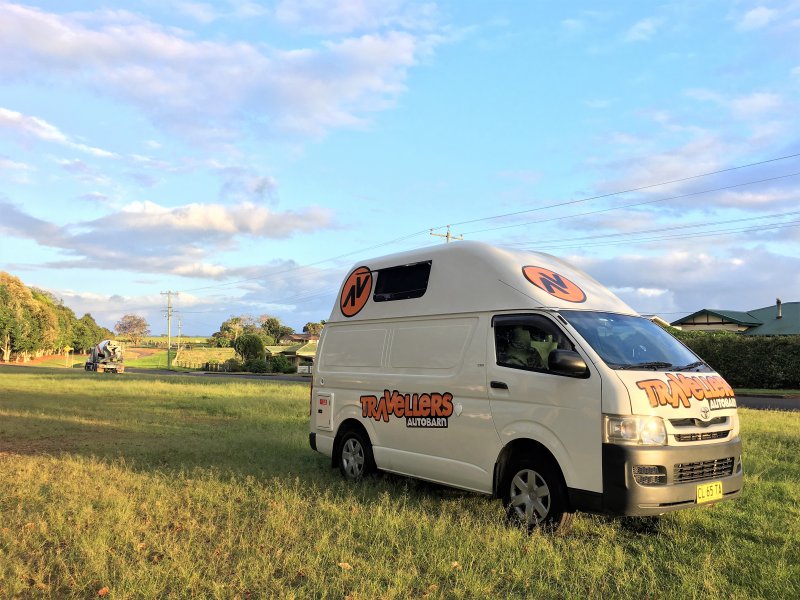
We stayed at an Airbnb in Brisbane (2 nights) and Melbourne (1 night). In Yamba and Sydney, we stayed with friends (3 nights), which was great and also saved us a lot of money.
3. Cost of food in Australia
The easiest and most effective way to save money in Australia is by cooking your own food. A cheap dinner will set you back at least €10/ 15 AUD per person.
Cooking your own meal will only cost about €10/ 15 AUD for a couple , so you'll already save 50% each day by making your own dinner!
We paid € 1 9 / 28 AUD for food and drinks on an average day. We made our own breakfast, coffee, lunch and dinner on 95% of the days. Every once in a while we bought a fresh fruit juice, pizza or steaming bowl of ramen.
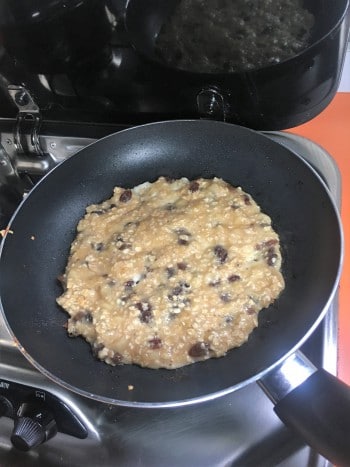
4. Activities and miscellaneous Australia vacation cost
The average daily costs in this category were €12/ 19 AUD . These costs can be split between:
Miscellaneous costs

Most days we went bush-walking, explored a beautiful beach or did some sightseeing in a village or city, these activities were free. However, we also did some pretty cool excursions in Australia.
We went scuba diving at the Great Barrier Reef, flew over the treetops with the Skyrail Rainforest Cableway and sailed around the marvelous Whitsunday Islands.
I worked with these companies and received a discount or complimentary trip, which saved us a lot of money.
This category is a little bit of everything, ranging from public transport in Brisbane, Sydney and Canberra to costs for laundry, a local SIM, postcards home, etc.
Plan your trip like a pro with these tools: ✈️ Find the best flight deals on Kiwi.com . ? Get the best car rental deal for your road trip on Rentalcars.com . ?️ Find your dream accommodation on Booking.com or Agoda . ? Book the best tours via Get Your Guide , Viator or Klook . ? Plan your journey with the Lonely Planet . ?️ Travel safely and get reliable travel insurance from Safety Wing .
Australia trip budget: in conclusion
That's all our Australia expenses! I hope this post has shown it's possible to travel to Australia on a budget and has inspired you to visit this beautiful continent!
Feel free to ask any questions you may have and enjoy planning your trip to Australia !
Also check this post about work and travel in Australia in case you're interested in getting an Australian work and holiday visa.
Also read about the best things to do in Sydney with kids and about places to visit in Daylesford .

This post was updated in October 2020.
Wednesday 4th of March 2020
Thanks a lot for this information. I wanted to know, we are doing a road trip from Cairns to Sydney on a campervan. The payment for the campervan has already been made so that’s counted. My question is, if we want to go diving on the Great Barrier Reef and to Whitsundays (basically that’s all we want to do as “paid” activities), do you think we, as a couple, can manage to spend an average of 60 eur per day? (This would be excluding the campervan as I mentioned above).
Do you have any details of your trips to Whitsunday and the great barrier?
Thanks so much!
Monday 16th of March 2020
Hi Beatriz,
That sounds like a wonderful trip! Regarding your question, well, it will be a bit of a tight budget as these two activities unfortunately don't come cheap... Sailing the Whitsundays is around 200AUD per person and diving is 300AUD for 2 dives and 320AUD for 3 dives. Without these activities, 60euro for a couple is definitely possible but if you really want to do these two activities I'd try and save another 1000AUD for your road trip (if possible).
You can find more information here: https://cruisewhitsundays.com/experiences/camira-sailing-adventure/ http://www.tusadive.com/prices/
Have a great trip! Lotte
Veronica Ricalde
Sunday 21st of October 2018
How safe is to stay in free Camping sites? we would like to go with two small Kids (6 months and 6 years) and my husband Freak out when i said that we can camp for free. do they have toiletts and showers? thank u and lovely regards
Thursday 25th of October 2018
Hi Veronica,
We never had any issues at the free campsites and I always felt safe. Free campsites usually do have toilets but no showers (though some do, but you may have to pay for the shower). In the Campermate app (https://www.campermate.com.au/welcome/index) you can find information about free (and paid) campsites. Keep in mind that some free sites are located along busy roads, which may not be ideal for you and your family. Enjoy your road trip!
Sunday 1st of April 2018
Hi Lotte! We are planning an East coast Australia road trip (4-5 weeks) in October and then on to New Zealand for 2 months. We will be using a campervan in both countries. How long in advance do we need to book the campervan to get the best deals? Can you still get a good deal a few weeks in advance or do they become really expensive by then? Thanks for your interesting blog!!
Monday 2nd of April 2018
Hi Charlotte,
Wow, your trip sounds awesome! Regarding your question, for Australia you'll be a bit ahead of the high season so I reckon you could get good deals there even if you don't book very early. For New Zealand however, you'll be traveling in peak season and I recommend to book as early as possible. While November may be easy to book, December is summer holiday for the Kiwis as well. Hope this helps! Have a wonderful time in Aussie and New Zealand!
Katie Farrant
Wednesday 17th of January 2018
Hey, I'm just wondering whether you will be uploading your Australia itinerary soon?! My partner and I are off there on the 31st Jan starting in Adelaide and going up to Cairns (by tours and greyhound) for 7 weeks. Would be great to read any recommendations you have for free/cheap activities. We have booked up a few tours- but the cost is adding up! We are off to NZ after Aus for 5 weeks and your blog made me decide to book a camper with car rental village! I can't wait!
Thanks for your comment and your trip(s) sounds great! Which tours will you be doing along the way? Yes, costs definitely add up but luckily many hikes and sightseeing in cities/villages is free. I'm working on the itinerary post, it's going to be very long (5000+ words;-). My goal is to publish the post this week because I start a new job on Monday. Perhaps you can subscribe via RSS feed so you'll receive an update when the article goes life?
So cool you'll be going to NZ as well, it's still my favorite country in the world... Have a great trip and let me know if you have questions about the itinerary once it's published.

How To Travel to Australia on a Budget
Michela Australia Travel Planning 8
Travelling in Australia travel doesn’t necessarily mean spending a fortune on your trip. Despite the high cost of living (Australia scores no. 6 of the most expensive countries globally), there are many ways to reduce expenses and travel on a budget is possible. If you follow a simple step-by-step plan, choose cost-effective ways of getting around and stay in budget-friendly accommodation, you can save a lot of money and travel to Australia for 100 dollars a day .
Table of Contents
I know it’s easy to make mistakes and choose the wrong things if you don’t research first. I have been travelling around Australia for +14 as a solo traveller. When you go alone, you are bound to spend more, so I’ve learned many things to cut down on travel’s overall cost over the years.
I wrote a list of dos and don’ts in Australia that will help you avoid many common pitfalls that first time-travellers experience. It will also help you create a realistic budget for travelling to Australia .
How much does it cost to travel to Australia?
I often hear, “ I cannot afford to travel to Australia because it’s too expensive”. It is commonplace and not real. That Australia is an expensive country to live and visit is a fact, but I can tell you that in some respects travel in Australia is as pricey as in Europe.
However, there are a few things that have an impact when budgeting for your Australia Trip. For instance, if you can choose when you travel and are flexible with dates, you can keep travel expenses low and grab the best travel deals. Visiting in the low season means saving money.
In +15 years of solo travels in Australia , I had experienced the country in many different ways, from the lowest budget travel in 2004 when I spent around 4 thousand Euro for 10 weeks to the highest cost of the trip in 2013 when the Australian dollar reached the highest exchange rate, that made my travel expenses 30-40% more expensive with over 7,5 thousand Euro for 10 weeks.
Despite the Australian dollar fluctuation, I have learnt what works and what doesn’t. I have realised that you cannot travel to Australia without a well-thought-out travel plan because if you do, it will quickly drain your budget over time.
Things to know when planning a Budget Trip to Australia
Here is a list of my best travel tips for travelling to Australia on a budget that will help you create the travel plan for Australia that works well for you.
How to save money on your Australia Trip
It all starts with proper travel planning. I cannot stop emphasising the importance of having a good plan, which is crucial for a successful trip. It is not only for” making the most of your time” , but first and foremost regarding saving money on all those things that suck.
With proper planning, you can save hundreds if not thousands of dollars on your Australian Holidays.
- Australia is a remote country not for last-minute decisions Basically, every trip to Australia means flying from another part of the world. Finding a cheap flight to Australia should be the primary goal of every savvy traveller. While Skyscanner and Google.com/flights/ are great planning tools for finding cheap flights, you can use the incognito version on your browser to avoid higher flight rates linked to a browser with a disclosed location. Check out this page with tips for finding a cheap flight to Australia .
- Make sure you know the best time of the year to travel to Australia I have been travelling throughout the year. March to May and Sept to November are the best months for visiting Australia. These months are in the off-season, which means there are no crowds with warm weather, and it’s cheaper than in another period of the year. Travel to Australia off-season will save at least 20-30% on the airfare and all main travelling expenses. Read this post on the best time to travel Australia
- Travel distances have an impact on your Australia Trip Often distances are underestimated for obvious reasons. It’s not easy to evaluate how much time it takes to get from A to B regarding times, effort and money. That’s why I have written a guidebook with a full section about it. You can read more about the importance of knowing driving distances and rules in Australia in this post.And why and how you should break down your trip into segments to best suit your needs. I prefer going on short road trips in Australia and consider flying for distances over 1000 km. Hire a car or a camper van for a longer time and travel in a loop back to your starting point. By doing so, you avoid paying an additional fee for dropping off your car at a different location. Tip: If you only have two weeks, stick to one area of Australia only. Build your itinerary around two main Australian cities and explore places in that area.
- Plan and Book early all your domestic flights. If you book early, you can fly for less than a hundred dollars from Sydney to Melbourne and most cities. If you miss out on the flight deals and wait till the very last minute, you may end up paying three to four times the regular flight price.Jetstar is one of the best Australian airlines that offers excellent value discounted flights every week. Sign up for the Friday Frenzy and get email alerts with the best deals. Domestic flight deals in Australia are available 3-4 months ahead, so plan your research accordingly.
Tips for saving money on accommodation in Austalia
After the initial cost of going to Australia and getting around, the significant expense is accommodation. But where do you stay on the cheap in Australia? Forget hotels. They are way too expensive, especially if you plan a more extended trip. The average hotel’s rates are between 160 to 250 per night for a double room in a three to four-star hotel. Bed and breakfast rooms cost around 120 to 150 AUD, and the cheapest way is to stay in Australian Hostels .
YHA hostels are, in my opinion, the best hostels I have ever stayed in. You can book private rooms from 60 to 70 AUD with shared bathroom to 80 to 100 AUD with private bath. Shared dorms are available from 20 to 30 dollars.
Private accommodation in Australia is reasonable and is the most valuable option I would consider if you travel alone and like to stay in a real home with the locals. The rates vary a lot depending on the location, the type of house or apartment and the facilities offered.
On average, the cost is close to a private room in a hostel, but you can find places for 200-250 dollars a night if these are beachfront locations and villas with pool and more amenities.
The best way to stay privately is to use Airbnb , which is good for short to long-term travel around Australia .
What type of budget Accommodation in Australia
To recap, here are some great tips on choosing budget-friendly accommodation in Australia:
- Save on lodging by staying in hostels The YHA hostels are what I recommend, good value with excellent facilities, offering double rooms for less than 100 AUD per night. Here are my picks for the best YHA hostels in Australia .
- Stay privately with Airbnb You can use this link and get 40 AUD off your first booking. In Australia, you will find heaps of great locations for 70-100 AUD per night, and the benefits of staying with the locals are unmatched.
- Travelling long-term in Australia If you plan to go to Australia and stay long-term, I will try house sitting as it is the cheapest accommodation. I have done this several times. In this post, you can get my tips for finding a good house sit in Australia .
How to save money on long-term travel in Australia
- Camping in Australia maybe not your thing, however being Australia a top destination for camping, you could try it out. You are better off hiring a car and staying in cabins or built-in tents for short road trips. I would recommend hiring a camper van for long-term travel only and using the Wikicamps app to locate the best-suited campsites.There are many basic campsites for a small fee, and some are free. An excellent chain for camping lovers is the BIG 4 campsites.
- Eating out in Australia doesn’t have to be expensive . In cities like Melbourne and Sydney, there are food halls and street markets where you can eat for 10-15 Dollars. I would recommend the RSL clubs or Bowling Clubs in rural areas, and they have good meals at reasonable prices. I have written a post about the best places where to eat in Australia on a budget .
- Internet and Mobile phone in Australia is costly ! For the Internet, I would recommend the 4G Wi-fi von Telstra. Plans start from 30 Dollars/3 GB for one month, and the 50 Dollars gives you 5 GB to use over unlimited time. Make use of the free wi-fi in cities. Melbourne State Library has the best wi-fi in Australia, but you can use free wi-fi everywhere in public places.Telstra offers the best coverage, but it is the most expensive for mobile plans too. Lebara is another excellent option if you want to use it for international calls also, for 2-3 cent/min, you can phone nearly everywhere in the world. Check out this page for more info on the best travel apps for Australia .
- Want help to create your own Australia Itinerary Without the hassle of wading through tons of information on the internet? I have created a compact guidebook that will help throughout the entire process. It gives you an in-depth knowledge of evaluating, choosing and balancing out a time frame with places to visit. You can also get a free chapter and get an overview of what you get with the guidebook.
Saving money tips for day-to-day expenses in Australia
Australian supermarkets.
There are three main Australian Supermarkets chains: Woolworths, Coles and IGA. They are all over the country; however, there are only local grocery stores in remote outback areas. I mostly shop at Woolworths because of their organic food label, Macro Wholefoods .
Discount supermarkets are becoming more popular in Australia, like the German discount supermarket Aldi; I was happy to discover it in Melbourne a few years ago when I picked up a rental car close to Franklin Street, the ideal place for shopping before setting off on a road trip to the Great Ocean Road. Aldi Stores are located mostly in cities, but more stores will open throughout the country.
On this page, you find the Aldi Store locator with new openings. Local fruits and vegetable markets are useful if you want to cook and buy fresh local produce. In cities like Melbourne, Sydney, Adelaide, there are daily fruit and veggie markets where you can shop at reasonable prices and get the best local produce.
The Cost of Food in Australia and how to spend less on meals
You will be stunned to see the prices of bottled water in Oz. The cost of a bottle of water in food stores or supermarkets is 3,5 dollars for 1,5 litre. If you consider that you will be drinking an average of 1-3 bottle/day, it comes to 150-200 dollars/month, which is insane. To save on bottled water, buy the home brands from Coles and Woolworths for less than 1 dollar per bottle. Aldi offers reasonable prices for bottled water too.
Plastic water tanks from 2-10 litres of water are also available from supermarkets, and it’s the best way to save money on water when you go on road trips. As soon as you travel out of cities, prices get higher, so get all your shopping done in the city. Tap water is okay if it’s filtered, and you can refill your bottles. In some hotels/hostels, they offer free filtered drinking water, which is the best way of keeping the cost of water low.
Dairy products in Australia
Cheese and all milk products are expensive in Australia. You will not find anything below 8-10 dollars for a small piece of cheese. A scoop of ice cream costs 5 dollars, which is ridiculously high.
How expensive is it to eat and drink in Australia eating?
While a meal in a restaurant will cost around 40-70 dollars, you can eat with 10-25 dollars in shopping food malls from various freshly cooked food stalls. Eating at local food markets is of good value. Coffee and cake, the average is 8-10 dollars, but I once paid 14 dollars in Perth! Drinks in Australia are costly. For a pint of beer, 6-8 dollars, the same for wine, 8-10 dollars if you consider that beer and wine are local produce, they are overpriced.
Electronics and non-food products
As most electronics brands are from Asia, Europe or the US, everything is exorbitantly expensive. So, as a rule, don’t buy electronics, and if you need a spare part of your camera, computer, or any electronic gear, buy an Australian brand that is less expensive. I once needed a memory card for my camera in the Outback. I spent 37 dollars on one memory card.
Where to shop for cheap Travel Gear in Australia
For toiletries and all you may need on your travels, try BIG W is an Australian chain of retail shops with a wide choice of non-food items at a lower price. Dollar Sense is another chain of discount stores where you can buy everything you need on the go for low prices. You can also check out websites for coupon codes and get free coupons which entitle you to discounts on products and services.
Conclusion on how to travel on a budget in Australia
Visiting Australia on a budget is possible. Once you know all the critical elements for researching, planning and choosing cost-effective ways of getting around the country, you are halfway on the right path. Then it’s up to you how and where you want to save money.
You may want to save money on transportation and accommodation and use those savings on tours and activities or the other way round. I hope this guide has shown you the best ways on how to travel to Australia cheaply.
Share the post on Pinterest!
Related Posts:
A Guide To Planning Your Australia Trip
Solo Travel Australia
When Is the Best Time To Travel To Australia
A Guide To Travelling Australia
Go Back To Rocky Travel
First published in 2016, last updated in March 2024
If you find this article helpful for your trip, I’d appreciate it if you could support Rocky Travel and book your tours, accommodation, rental car, or purchase my book using the links below. Thank you!
BOOK YOUR TRIP WITH THESE RESOURCES
Get Travel Insurance For Your Trip
Travel with peace of mind: 👉 Compare and Buy Travel Insurance .
Book Accommodation WorldWide
Find the best deals for hotel, homes, villas with 👉 booking.com .
Join Small Group Tours Of Italy For Over 50
Explore Italy with our 👉 Small Group Tours Of Italy .
Find The Best Tours Deals For Australia
Scout for the best guided trips and tours with our 👉 Australian Tours Guide .
Plan & Book Your Australian Adventure
Create the perfect Australia Trip Itinerary with 👉 Your Australia Itinerary eBook and/or Book A Trip Planning Call .
Plan Any Trip With These Resources
Check out our 👉 Travel Planning Bible .
Michela Fantinel
→ Michela Fantinel
Related Posts
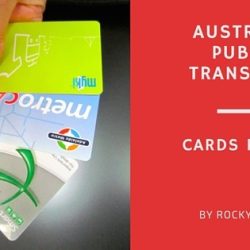
Australia Travel Planning
A Review of Australia Public Transport Cards

A Guide to Long Term Travel in Australia

Best Places To Stay When Travelling Around Australia With Pets
Suzanne February 1, 2016 @ 2:33 am
Love this tips! I’ve traveled to Australia from the U.S. a few times now and it does take a bit of planning. Unfortunately many travel agents prefer to stick folks on a “tour” which makes it so much more expensive. I prefer to go independently and like you said be aware of distances and focus on close areas (my last visit was Melbourne-Sydney-Hobart). The wifi is key also as even with a Starbucks purchases it was limited to twenty minutes! Cheers!
Rocky Travel February 1, 2016 @ 3:41 pm
Hello Suzanne, great to hear these tips on how to travel on a budget in Australia were useful. Tours in Australia can be good when it’s challenging to see a destination on your own, like remote Outback areas or places where you need special driving skills to get around. Otherwise I believe you can tour Australia on your own everywhere, it does require a bit of work beforehand, like accurate travelling planning help! For free unlimited wi-fi check out Mc Cafe from McDonalds which is great and also most public libraries in Australia offer free wifi. 🙂
Charles McCool March 10, 2016 @ 2:11 pm
Lovely article. I hope to spend an extended amount of time in Australia this year or next and love articles like this. Thank you.
Jade April 14, 2016 @ 3:02 am
We’re planning on moving to Australia next year to work – we have been concerned about the cost though! It’s great to known that there are some cheaper ways to live!
Rocky Travel April 14, 2016 @ 11:08 am
Hi Jade, great to hear about your travel and work plans. While Australia is an expensive country there are truly many ways to lower the cost of living in Oz. Best of luck with your move to Ausralia! 🙂
David Fendavis December 13, 2018 @ 1:05 pm
This is really eye opening for people traveling to Australia. Thanks to the author for sharing this. It is a very informative blog indeed. When I stayed in UK for several years; blogs like these really helped in knowing the reality of a place. It helped me in making my budget and planning for travel. Similarly; this content will also help people in making plans before traveling to Australia. I now help people with their immigration needs such as Visas, PR etc. Tropical Immigration is my business based in Sydney and I would be glad in helping. Thanks again to the author for sharing this.
Jan Stone August 29, 2019 @ 11:56 pm
Why pay for drinking water? If you are travelling in a vehicle, buy a 5 litre and a 10 litre container and fill it up at caravan parks. You can also fill your small drinking bottle in most places in Australia. In some remote areas the water is not drinkable and there will be a sign to warn you. Recently in remote Western Australia we stayed at a national park which clearly stated do not drink the water without boiling first. We still used it for washing our dishes and even cleaning our teeth without a problem. Most major cities and country towns in Australia have safe drinking water,unless otherwise stated. Don’t pay for iit!
Greg January 8, 2022 @ 11:38 am
Through many ways, such things can be explained, and it is one of them. People find it difficult to get in touch with an agent in this location. Here are some ways which can help in this matter. This does require a long thought process
Leave a Reply Cancel reply
Your email address will not be published. Required fields are marked *
Privacy Overview
- All Solutions
- Audience measurement
- Media planning
- Marketing optimization
- Content metadata
- Nielsen One
- All Insights
- Case Studies
- Perspectives
- Data Center
- The Gauge TM – U.S.
- Top 10 – U.S.
- Top Trends – Denmark
- Top Trends – Germany
- Women’s World Cup
- Men’s World Cup
- News Center
Client Login
News Center > Thought Leadership
Nielsen data reveals australia’s top travel trends and the brands spending big to attract aussie tourists, 4 minute read | april 2024.
- Industry’s biggest ad spenders revealed as travel marketing budgets jump 8% quarter-on-quarter
- Top local and overseas destinations revealed
- Most popular Aussie travel websites
- The winners and losers of the frequent flyer war
Sydney – April 30 , 2024 – As many Australians return from a much-needed retreat over the recent school holiday break, millions are already planning their next getaway, embracing travel rewards schemes, while being wooed by travel brands spending millions to get their business.
Nielsen Consumer & Media View (CMV) data shows that 76% of Aussies plan on travelling domestically in the next 12 months, while more than half (52%) have their eye on an overseas destination.
Top domestic destinations
Younger Aussies (25 to 39) are the most likely to be bitten by the domestic travel bug, with 78% planning to holiday locally in the next 12 months. Sydney narrowly beats Melbourne as the preferred place to visit, followed by The Gold Coast, Regional NSW, then Brisbane.
Top overseas destinations
The even younger 18 to 24 age group are the most likely to travel overseas, with 58% planning to travel abroad in the coming year. The UK tops the list of desired OS destinations, followed by New Zealand, Japan, The USA and Indonesia.
While most Aussies are looking for a beach getaway when it comes to staying close to home, they prefer a trip involving plenty of sightseeing, followed by some rest and relaxation, once they leave the country.
Top travel websites
Data from Nielsen Digital Content Ratings (DCR) saw Qantas claim top spot when it comes to travel websites, followed by Trip Advisor with 5.82 million and 5.02 million users respectively in Q1 of this year. Booking Holdings Network was the third-largest platform in terms of users with 2.5 million.
Average user engagement time on most travel platforms was also consistent from Q4 2023 to Q1 2024, although Royal Caribbean Cruises and Anytrip.com.au led the pack. On average, Royal Caribbean users spent roughly 29 minutes interacting with the platform, while Anytrip users spent almost 27 minutes on the platform.
Top frequent flyer programs
The number of Australians who are members of a frequent flyer program also increased, with 57% of all Australian consumers now part of some sort of travel rewards scheme. Qantas remains the market leader with a 45% share of the market, followed by Virgin (31%), and other smaller players making up the remaining 24%.
Top travel advertisers
In addition, Nielsen Ad Intel data also shows that the travel and tourism industry spent more than $153 million on advertising in Australia in Q1, 2024 – an increase of 8% from the previous quarter, with TripADeal the biggest spender, followed by Virgin Australia, then the Flight Centre-owned Ignite Travel.
Nielsen Ad Intel’s Australia Commercial Lead, Rose Lopreiato, said: “Australians’ love of travel continues to defy cost of living pressures, as shown by an 8% jump in travel ad spend this quarter. You can’t get a stronger indicator than that when it comes to how marketers and advertisers are spending in order to maximise ROI, forge lasting connections with brands and consumers, and do so in the most economical way possible. From competitive ad spend analysis, to knowing what your competitors are saying in market and the deals and offers you’re up against, Ad Intel helps you understand which ads are driving your competitors spend and where”.
Glenn Channel, Nielsen’s Pacific Head of Advanced Analytics added: “More than ever, brands need data that gives them the edge on their competition. That means going above standard demographic information, and understanding consumers, in this case travellers, as unique groups, who are motivated by more than just the urge to get away. Nielsen CMV enables brands to see consumers through an advanced audience lens, delivering a more holistic picture of behaviours and preferences with surprising linkages and purchase triggers that other consumer insight providers can’t match.”
About Nielsen
Nielsen shapes the world’s media and content as a global leader in audience measurement, data and analytics. Through our understanding of people and their behaviours across all channels and platforms, we empower our clients with independent and actionable intelligence so they can connect and engage with their audiences – now and into the future. Nielsen operates around the world in more than 55 countries.
Learn more at www.nielsen.com and connect with us on social media (Twitter, LinkedIn, Facebook and Instagram).
Media Contact
Dan Chapman Assoc. Director, Communications, Nielsen APAC [email protected] +61 404 088 462

Find the right solution for your business
In an ever-changing world, we’re here to help you stay ahead of what’s to come with the tools to measure, connect with, and engage your audiences.
How can we help?
- Sustainability
- Small Business
- Mastercard launches mobile virtual card app to simplify travel and business expenses
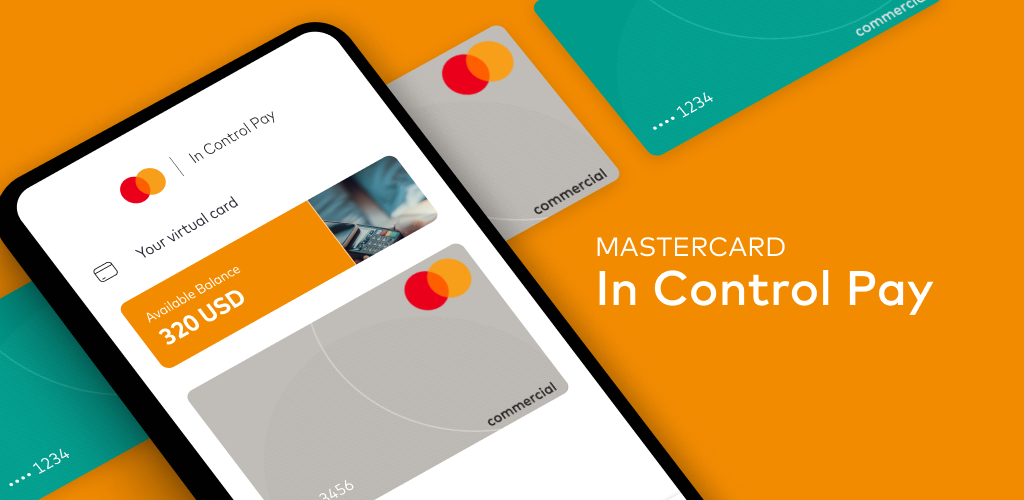
HSBC and Westpac to unlock the convenience, security and efficiency of tap to pay transactions
Mastercard announced a new mobile virtual card app that enables virtual commercial cards to be seamlessly added to digital wallets. The innovative app is designed to offer financial institutions more choice in how they deliver the secure and sustainable contactless payment solutions that companies increasingly expect.
For over a decade, Mastercard has pioneered virtual card solutions to simplify tedious expense report and reconciliation processes for employees, contractors, recruits, and consultants who often use personal cards or cash for reimbursable business expenses. As companies navigate changing payment preferences particularly from the entry-level workforce – with over two-thirds of millennials having adopted digital wallets 1 – mobile technology is unlocking the next frontier of convenient contactless payments.
“Businesses worldwide are seeking fast and secure payment experiences, where payments can be made with just a click or tap, and finance teams can experience automatic reconciliation,” said Chad Wallace, global head of Commercial Solutions, Mastercard. “With today’s launch, we’re providing innovative tech that digitizes business and travel expenses, while also empowering businesses with more control of and visibility into their finances.”
The app leverages Mastercard’s innovative virtual card and tokenization platforms, enhanced data, and robust spend controls all within one easy-to-use interface. Accessing Mastercard mobile virtual cards is made seamless through the app so users can quickly experience the benefits of tap to pay. Mastercard mobile virtual cards can be used by organizations spanning a range of sizes and industries – including healthcare, insurance, fleet, higher education, and corporate travel.
Key capabilities and benefits of Mastercard’s mobile virtual card app include:
- Increased security : The app offers the ability to set up a biometric authentication and an added security measure using a PIN to view card details. Each virtual card is also tokenized, enabling the cardholder’s sensitive data to be replaced by a unique card number so sensitive account details are not exposed.
- Robust spend controls: Organizations can confidently stay compliant with expense policies using Mastercard’s transaction-level controls, which limit how, where, and when a mobile virtual card can be used.
- Flexible integrations: Financial institutions can quickly get to market through Mastercard’s user interface or flexible API-based integrations, and offer unique features such as customized card art.
- Holistic and seamless payment experience: The app provides a single interface to check the status of card balances and view pending and completed transactions, and is bank-agnostic, enabling users to access and manage virtual commercial cards issued by multiple participating financial institutions.
- Real-time and enhanced data: For each mobile virtual card created, custom data elements are automatically captured and matched to the transaction, providing organizations with increased insights into spending and automatic reconciliation to optimize back-office processes.
HSBC Australia and Westpac will be the first financial institutions to offer organizations and corporate customers mobile wallet functionality through the Mastercard app.
“We’re pleased to partner with Mastercard to bring mobile wallet virtual cards to our Australian corporate clients, providing them with a smarter, safer, and faster way to pay,” said John Scott, Head of Global Payments, HSBC Australia. “Mobile wallet usage is growing, with the Asia-Pacific region accounting for over half of the digital payment transactions globally 2 . As contactless payments continue to surge, it’s important that corporate clients have access to best-in-class payment solutions to keep their business secure and take advantage of the increased efficiency offered by the latest technologies. HSBC has a history of delivering innovative digital solutions to our corporate clients, and we’re proud to add to that legacy with the launch of mobile wallet virtual cards in Australia. We plan to launch in other markets later this year.”
“Westpac is pleased to be one of the first domestic banks in Australia to offer the new Mastercard mobile virtual card app to our corporate and commercial customers in addition to our existing virtual card capabilities. The global payments market is at an inflection point and the mobile wallet solution, combining digital innovation, real time processing and security through robust controls is another way we’re helping our customers,” said Jeff Byrne, Managing Director of Global Transaction Services at Westpac Institutional Bank.
The app will be available in other key markets for users with a commercial virtual card issued through an organization by a participating financial institution. Once registered for the app with an invitation code, users will find their commercial virtual cards automatically linked and ready to be added to select digital wallets for use across Mastercard’s trusted global network.
For more information on other ways Mastercard is simplifying commercial payments, click here .
1 PYMNTS Research: “Mobile Wallet Challenge: Replacing Physical With Digital,” (April 2023)
2 “Global Mobile Payment Methods 2024 Report” (January 2024)
Disclaimers:
Mastercard In Control Pay app and features are available only for eligible virtual card accounts issued by the financial institution. Prepaid Cards and Consumer Cards are not eligible. The virtual card(s) are not issued by Mastercard and is (are) subject to the terms and conditions of the relevant issuer.
Media Contacts
About Mastercard (NYSE: MA)
Mastercard is a global technology company in the payments industry. Our mission is to connect and power an inclusive, digital economy that benefits everyone, everywhere by making transactions safe, simple, smart and accessible. Using secure data and networks, partnerships and passion, our innovations and solutions help individuals, financial institutions, governments and businesses realize their greatest potential. With connections across more than 210 countries and territories, we are building a sustainable world that unlocks priceless possibilities for all.
www.mastercard.com
- Investor Relations
Mastercard Sites
- Mastercard.com
- Mastercard Brand Center
- Mastercard Data & Services
- Priceless.com
- Travel Insurance
The journalists on the editorial team at Forbes Advisor Australia base their research and opinions on objective, independent information-gathering.
When covering investment and personal finance stories, we aim to inform our readers rather than recommend specific financial product or asset classes. While we may highlight certain positives of a financial product or asset class, there is no guarantee that readers will benefit from the product or investment approach and may, in fact, make a loss if they acquire the product or adopt the approach.
To the extent any recommendations or statements of opinion or fact made in a story may constitute financial advice, they constitute general information and not personal financial advice in any form. As such, any recommendations or statements do not take into account the financial circumstances, investment objectives, tax implications, or any specific requirements of readers.
Readers of our stories should not act on any recommendation without first taking appropriate steps to verify the information in the stories consulting their independent financial adviser in order to ascertain whether the recommendation (if any) is appropriate, having regard to their investment objectives, financial situation and particular needs. Providing access to our stories should not be construed as investment advice or a solicitation to buy or sell any security or product, or to engage in or refrain from engaging in any transaction by Forbes Advisor Australia. In comparing various financial products and services, we are unable to compare every provider in the market so our rankings do not constitute a comprehensive review of a particular sector. While we do go to great lengths to ensure our ranking criteria matches the concerns of consumers, we cannot guarantee that every relevant feature of a financial product will be reviewed. We make every effort to provide accurate and up-to-date information. However, Forbes Advisor Australia cannot guarantee the accuracy, completeness or timeliness of this website. Forbes Advisor Australia accepts no responsibility to update any person regarding any inaccuracy, omission or change in information in our stories or any other information made available to a person, nor any obligation to furnish the person with any further information.
Travel Insurance For Canada: What You Need To Know Before You Go
Updated: Apr 30, 2024, 1:13pm
Table of Contents
Do you need travel insurance for canada, what type of travel insurance do you need, what does travel insurance for canada cover, what does travel insurance exclude, best travel insurance for canada, frequently asked questions (faqs).
From hiking trails in Ontario to traversing the slopes of the famous ski resort town of Whistler, there is no shortage of places to visit in Canada.
The vast North American country is a popular destination for travel-loving Aussies. In addition to a growing share of business travelers, more than 350,000 Australian tourists typically visit Canada each year.
While visitor numbers faded during the Covid-19 pandemic, the multitude of Australians heading to the Great White North has picked up in the last two years, particularly to experience the country’s stunning landscape.
Fast Cover Travel Insurance
On Fast Cover’s Secure Website
Medical cover
Unlimited, 24/7 Emergency Assistance
Cancellations
Unlimited, (Trip Disruption $50,000)
Key Features
25-Day Cooling Off Period, Australian Based Call Centre, 4.6 Star Product Review Rating
Cover-More Travel Insurance

On Cover-more’s secure website
Unlimited, with a $2000 limit to dental
Yes, amount chosen by customer
Southern Cross Travel Insurance

Medical Cover
Including medical treatment, doctors’ visits, prescribed medication, specialist treatment & medical transport costs
$2,500 with option to increase to unlimited
Travel insurance for Canada isn’t compulsory, but it’s highly recommended to cover for any lost or stolen baggage, the possibility of your trip getting cancelled due to an emergency, illness such as Covid-19 or bereavement, and to cover medical expenses.
The Australian Government’s Smartraveller website recommends that travellers purchase travel insurance before any overseas trip.
As in any foreign country, medical care in Canada can be expensive for visitors, with a visit to a doctor potentially setting you back by hundreds of dollars.
The Australian government won’t cover these costs, and there is no reciprocal healthcare agreement between Australia and Canada, so you aren’t covered by Australian Medicare either.
In addition, given the large geography of the country covering a variety of destinations from beaches to mountains to national parks, it is wise to hold insurance cover for a multitude of events and a variety of potential risks including natural disasters, crime or other types of emergencies.
International travel cover for Canada is generally available in the following ways:
Basic travel insurance
This type of policy is broadly focused on cover for unlimited overseas emergency medical expenses, but also includes insurance for luggage, personal liability and other essential benefits. It is usually the cheapest option available and is suitable for those traveling on a budget or for single trips.
Comprehensive travel insurance
This type of insurance typically includes higher amounts of cover for the essentials benefits such as medical expenses, luggage, personal liability, and so on. In addition, it includes cover for travel delays, rental vehicle excess, loss of passports and credit cards, hijacking, disability, accidental death, and more, depending on your policy.
Some insurers offer variations of the comprehensive policy that are suitable for multiple trips within a 12-month period.
Optional add-on policies
Given the growing number of Australians heading to Canada for cruises, road trips or to the ski slopes, some insurers have come up with add-on policies specifically tailored for a variety of adventure sports and transport options available. These include cruise packs, winter sports packs and even higher cover for rental vehicles.
Related: How Much Does Travel Insurance Cost?
Most international travel insurance policies will cover medical and hospital expenses, ambulance transportation, repatriation flights, as well as personal liability if you injure someone, or damage property while you’re in the country.
Policies will also cover, within limits, lost or delayed luggage and possessions, the costs of trip delays, interruptions or cancellations, and lost or stolen travel documents.
Comprehensive policies usually offer a broader cover to include personal accident cover in case of an injury during your trip that leads to permanent disability or death, and insurance excess payment if your rental car meets with an accident.
If you are planning to take advantage of Canada’s vast offering of adventure sports and activities, make sure these are covered by your policy—or that there is an option to add it on.
Most comprehensive policies will include popular sporting and leisure activities such as hiking, surfing, kayaking, and so on. However, more extreme activities such as skydiving, scuba diving, snow skiing or snowboarding will generally require an additional adventure sports cover at extra cost.
Most travel insurance policies to Canada will not provide cover in the following cases:
- Illegal activities: Insurers will reject any claims arising if you knowingly act illegally or dangerously.
- If you are under the influence: Insurance cover is specifically void if you cause a disturbance through drunken behaviour or under the influence of drugs.
- Unattended luggage: Insurers will ignore any claim for loss if your luggage is stolen while it was left unattended in public.
- Pre-existing medical conditions: Insurers can avoid claims for any major medical conditions, if they have not been made aware of these before taking out a policy.
- Extreme sports: International travel insurance policies generally don’t provide automatic coverage for things like extreme sports, snowboarding or surfing. An optional add-on cover is required for these activities.
Most travel insurers in Australia offer insurance policies for travel to Canada. What policy suits you best will depend on your requirements including duration, age, and the type of cover.
It will also be determined by your specific needs, such as whether you are taking part in snow sports or other adventure activities.
An easy way to compare travel insurance policies is to use an online comparison tool, or read through our leading picks of travel insurance policies for Australians . However, always consider whether or not they include the extras you will require for your trip, and any pre-existing medical conditions you would require cover for.
Featured Partners
Do I need travel insurance to travel to Canada?
Travel insurance for Canada isn’t mandatory, but is highly recommended.
The Australian Government urges travellers to purchase travel insurance before any overseas trip, especially for medical cover.
Medical costs can be extremely expensive in a foreign country, especially if you have to visit a doctor, dentist or hospital in an emergency, so travel insurance is very handy.
Does my visa card have travel insurance?
Not every credit card comes with travel insurance. Complimentary travel insurance is typically offered on premium credit or rewards cards that have higher annual fees. In addition, this may not cover all circumstances or emergencies. By comparison, a travel insurance policy will offer more comprehensive coverage that includes emergency medical expenses.
- Best Comprehensive Travel Insurance
- Best Seniors Travel Insurance
- Best Domestic Travel Insurance
- Best Cruise Travel Insurance
- Best Family Travel Insurance
- Travel Insurance Cost
- Pregnancy Travel Insurance Guide
- Travel Insurance Cancellation Cover
- Travel Insurance For Bali
- Travel Insurance For Fiji
- Travel Insurance For The USA
- Travel Insurance For Thailand
- Travel Insurance For New Zealand
- Travel Insurance For Japan
- Travel Insurance For Europe
- Travel Insurance For Singapore
- Travel Insurance For Indonesia
- Travel Insurance For Vietnam
- Travel Insurance For South Africa
- Cover-More Travel Insurance Review
- Fast Cover Travel Insurance Review
- Travel Insurance Saver Review
- Allianz Comprehensive Travel Insurance Review
- 1Cover Comprehensive Travel Insurance Review
- Australia Post Comprehensive Travel Insurance Review
- Tick Travel Insurance Review
More from
Do frequent flyer points expire, travel insurance for south africa: everything you need to know, travel insurance for vietnam: everything you need to know, tick travel insurance top cover review: features, pros and cons, was discovery travel insurance review: features, pros and cons, fast cover comprehensive travel insurance review: pros and cons.
Prashant Mehra is a freelance journalist based in Sydney. He has more than 20 years of international experience covering financial news, including with Reuters and the Australian Associated Press (AAP). He writes about business, markets, the economy and investing.
- ATO Community
- Legal Database
- What's New
Log in to ATO online services
Access secure services, view your details and lodge online.
Travel expenses
Last updated 29 June 2023
This information will help you if you are a small business owner claiming a deduction for expenses you incur when travelling for your business.
For a summary of this content in poster format, see Travel expenses (PDF, 352KB) This link will download a file .
- You must keep your business travel expenses separate from your private expenses. You can only claim the business portion.
- You must keep records for 5 years that prove your expenses.
- If you travel for 6 or more consecutive nights, you may need to keep a travel diary.
- There is a separate factsheet about business motor vehicle expenses and travelling to and from your places of business. For more information about these expenses, see Motor vehicle expenses .
Types of expenses
As the owner of a small business, you can claim a deduction for expenses that you incur when you travel for your business. Common expenses include:
- fuel, tolls and car parking
- airline, bus, train, tram and taxi or ride-sourcing fares
- car-hire fees and the costs you incur when using a hire car for business purposes
- accommodation and meals if you are away overnight.
You can't claim a deduction for any travel undertaken before you started running your business.
Claiming travel expenses
You can claim a deduction for travel expenses related to your business, whether the travel is taken within a day, overnight, or longer. You must have records to prove that the expenses were for business.
You cannot claim any private costs of the travel, for example, leisure activities, a holiday that you add onto your business travel, or the costs of a family member who travels with you.
To claim expenses for overnight travel, you must have a permanent home elsewhere and your business must require you to stay away from home overnight. You can't claim travel expenses that arise because you are relocating or living away from home.
If you operate your business as a company and it pays for private portions of your travel, there may be tax implications for you (as an individual) and your company for providing benefits to you. For more information, see Division 7A and Fringe benefits tax (FBT) .
Employee travel expenses
Whatever your business structure, if you have employees who travel for your business, the business must actually incur the travel expense (by paying for it directly or reimbursing the employee) to be able to claim it as a deduction.
Your business may be subject to FBT if it pays or reimburses your employees for their travel expenses or private activities. Certain exemptions and concessions may apply to reduce your FBT liability. To access the exemptions and concessions, you may need to obtain records from your employee. For more information, see Exemptions and concessions .
If you pay your employees a travel allowance or a living-away-from-home allowance, there are different considerations.
For more information, see Fringe benefits tax (FBT) and Travel allowances .
If you are entitled to goods and services tax (GST) input tax credits, you must claim your deduction in your income tax return at the GST exclusive amount.
Records you need to keep
You need to keep records that prove all your business travel expenses for 5 years. These records can include:
- tax invoices
- boarding passes
- travel diary
- details of how you worked out the private portion of expenses.
If you are a sole trader or partner in a partnership, you need to keep a travel diary if you are away for 6 or more consecutive nights. A travel diary is also highly recommended if you run your business as a company or trust, as it will help you to determine the portion of the travel that was for private purposes.
If you’re a sole trader, you can use the myDeductions tool in the ATO app to record your business expenses. For more information, see myDeductions .
Travel diary
In your travel diary, record the details of each business activity as you go, including:
- the nature of each business activity
- the date and approximate time the business activity began
- how long the business activity lasted
- the name of the place where you engaged in the business activity.
The travel diary can be in any format that records this information.
Example: Rebecca's travel diary
Rebecca owns a business as a sole trader landscape gardener. She is invited to exhibit at the Chelsea flower show in England. This involves 6 days of work representing her business at the show. After the show is finished, Rebecca spends some time sightseeing.
Rebecca’s son James joins her on her trip. James is not involved in the business and spends the days exploring London while Rebecca is at the Chelsea flower show.
As Rebecca is travelling for more than 6 nights, she keeps the below travel diary.
Travel diary for May:
- Saturday 9 May – 10.00am flight Q13 to London (via Dubai)
- Sunday 10 May – Arrive London 1.00pm local time. Bus to hotel in Chelsea 3.00pm
- Monday 11 May – Rest day
- Tuesday 12 May – Chelsea flower show set-up day from 9.00am
- Wednesday 13 May – Chelsea flower show day 1
- Thursday 14 May – Chelsea flower show day 2
- Friday 15 May – Chelsea flower show day 3
- Saturday 16 May – Chelsea flower show day 4
- Sunday 17 May – Chelsea flower show day 5, ends 5.00pm
- Monday 18 May – Sightseeing in London
- Tuesday 19 May – Sightseeing day trip to Oxford
- Wednesday 20 May – Bus to airport. Flight home Q23 6.00pm from London, arrive 10.00pm local time.
This shows that Rebecca travelled for 12 days. She spent the majority of the time on business-related activities and took the opportunity to do some sightseeing while in London for 2 extra days. Rebecca can only claim deductions for the business-related portion of her travel.
Rebecca can claim:
- the return airfare to London (which does not have to be separated out as the primary purpose of her travel is for business, the sightseeing was incidental)
- her bus fares to and from the airport
- the costs associated with working at the Chelsea flower show, including the exhibitor's fee and transport to and from the location from her hotel
- Rebecca’s accommodation in Chelsea up to and including 17 May
- meals and incidental costs on the days she attended the Chelsea flower show.
Rebecca can't claim:
- accommodation, meals or transport expenses on the days noted for sightseeing
- additional private costs from the whole of her time away (such as souvenirs)
- costs of visas, passports or travel insurance
- any of James’s expenses (such as his airfares, the cost of his meals or the cost of an extra hotel room for James).
Example: Noah's travel diary
Noah owns a business as a sole trader interior designer and decorator. He lives and works in Perth. A new customer has asked him to design and decorate her home in Broome. This will take 2 weeks to complete.
Noah flies to Broome on Sunday evening and returns to Perth 2 weeks later. On the weekend in Broome, he does some sightseeing and catches up with friends. He keeps the following diary:
- Sunday 1 September: Fly to Broome (depart 4.00pm, arrive 6.30pm)
- Monday 2 September: Purchase decorating supplies 9.00am–10.30am. Working at client’s house 10.45am – 4.00pm
- Tuesday 3 – Friday 6 September: Working at client’s house 7.30am to 4.00pm
- Saturday 7 September: Day trip to Horizontal Falls. Dinner with Pam and Geoff
- Sunday 8 September: Sightseeing around Broome
- Monday 9 – Friday 13 September: Working 7.30am to 4.00pm at client’s house
- Saturday 14 September: Return flight to Perth (depart 10.00am, arrive 12.30pm).
Noah can claim:
- his return airfare to Broome and taxi to his hotel and from hotel to airport
- accommodation in Broome for all nights (as the weekend in between was incidental and the primary purpose of travel was for business)
- costs of undertaking his work in Broome (such as hire of tools)
- meals and incidental costs of his work.
Noah can't claim his private expenses, including:
- the cost of the sightseeing he does on the weekend
- the dinner he has with friends.
This is a general summary only. For more information, go to Claiming a tax deduction for business travel expenses or speak to a registered tax professional.

IMAGES
VIDEO
COMMENTS
You can visit Australia on any budget, from a $40 a night hostel in Cairns that's highly-rated on Booking to the spectacular $500 a night Four Seasons Sydney, which offers up the best views of the Sydney Opera House in the city. (Those prices are in AUD, by the way. 1 AUD is equal to 0.60 USD/EUR, or 0.53 GBP.)
How much does it cost to travel to Australia? You should plan to spend around $162 (AU$250) per day on your vacation in Australia. This is the average daily price based on the expenses of other visitors. Past travelers have spent, on average for one day: $34 (AU$53) on meals; $30 (AU$46) on local transportation ...
The average cost for 4 people to visit Australia for a week is $4,483-$10,863 ($640-$1,552 per day) Food, Travel, and Sightseeing: $168 to $345 per day for four people's daily expenses. Flights: $2,485 to $7,266 for economy. Lodging: $137 to $175 per night for two 2 or 3-star hotel rooms. or $162 to $197 per night for a 2-bed vacation rental.
Typical Costs in Australia. When you travel to Australia, your typical costs tend to look like this: Hostels: Hostels cost 25-30 AUD in smaller cities and 25-70 AUD per night in places like Sydney or Melbourne. As always, the smaller the dorm, the higher the cost. Private rooms are 80-150 AUD per night.
By determining your travel style and preferences, researching seasonal pricing and deals, planning your itinerary and calculating expenses, considering additional costs and expenses, and creating a realistic budget (and sticking to it!), you can enjoy all that Australia has to offer without sacrificing your financial wellbeing.
Pacific / Australia /. Visitors to Australia usually spend between $62 and $438 per day on average for one person and $125 to $875 for two people. While this is a wide range, the average daily cost averages $163 (AU$250) per person. This average includes sightseeing, hotel, food, and local transportation expenses from other travelers.
For two people, a one week trip costs $2,277. Based on the travel expenses of others, a two week trip to Australia costs around $2,277 on average, per person. This includes food, sightseeing, local transportation, accommodation, and nightlife. For two people, a two week trip costs $4,554.
The cost of campervanning Australia varies heaps depending on your route, time frame, campervan model and of course the season - so the further in advance you book it the better. Expect to pay from $60AUD per day though, with rates much higher in the peak, summer season, around $110+ per day. For an epic Campervan deal in Australia click here.
Popular day tours, like whale watching and guided walks, cost around AUD$100 to AUD$200. If you're booking high-demand activities - such as the Field of Light or swimming with whale sharks - secure your spot at least a month in advance to avoid disappointment.
Getting around Australia can also affect your travel expenses. Domestic flights, train journeys, and bus rides are common transportation options. It's important to research and compare prices to find the most cost-effective solution for your itinerary. Hey! This content may interest you Cheapest Way To Travel To Australia From India
The cost of traveling to Australia varies depending on factors like the time of year, type of accommodation, and activities. Generally, a basic daily budget for backpackers is $70-$100 AUD, mid-range travelers should budget $150-$250 AUD per day, and luxury travelers should expect to spend over $400 AUD per day.
ESTIMATED EXPENSE: $18 - $200 per night After you've sorted the flights, the next cost to consider is the price of accommodation in Australia. This is going to take up another chunk of your travel budget, but don't worry too much.. Australia is a big country with a huge choice when it comes to budget-friendly places to stay, from its easy-going hostels to budget hotels and affordable ...
Australia travel budget: important facts and figures. I traveled around Australia with my husband, and all expenses mentioned are for the two of us together.; I quote prices in € and Australian Dollar (AUD).The exchange rate usually is around €1 = 1,50 AUD.Of course, the exchange rate varies, check the most recent rates here.; We spent 6 weeks in Australia, on an average day we spent €98 ...
Travelling in Australia travel doesn't necessarily mean spending a fortune on your trip. Despite the high cost of living (Australia scores no. 6 of the most expensive countries globally), there are many ways to reduce expenses and travel on a budget is possible. If you follow a simple step-by-step plan, choose cost-effective ways of getting around and stay in budget-friendly accommodation ...
Quarantine and testing expenses when travelling for work. Deductions for expenses you incur if you're travelling for work during COVID-19 and must quarantine. QC 72129. Work-related travel expenses, records you need to keep, travel allowances and record keeping exceptions.
The Australia Skyscanner budget calculator is a tool that can help you make the most of your trip. This tool is designed to help you quickly and easily calculate key travel expenses for your next trip from Australia to popular holiday spots. Whether planning a cultural trip to Sydney or a rugged backpacking trip through Thailand, this ...
Expenses you can claim. Your business can claim a deduction for travel expenses related to your business, whether the travel is taken within a day, overnight, or for many nights. Expenses you can claim include: airfares. train, tram, bus, taxi, or ride-sourcing fares. car hire fees and the costs you incur (such as fuel, tolls and car parking ...
A travel allowance expense is a deductible travel expense: for accommodation, meals (food or drink), or incidentals. You incur a travel allowance expense when you either: have an obligation to pay an amount for the expense. You can't claim a deduction if your employer either pays for or reimburses you for the expense.
Australia: Updated guidance on costs of travelling . 19 February 2021 . In brief . On 17 February 2021, the Australian Taxation Office (ATO) released the following new guidance in relation to whether an employee is "travelling on work" or otherwise, and the income tax and fringe benefits tax (FBT) treatment of associated travel expenses:
Before making a claim for this type of accommodation, check the rules in TR 2021/4 Income tax and fringe benefits tax: employees: accommodation and food and drink expenses travel allowances, and living-away-from-home allowances. Travel expenses you can't claim. You can't claim travel expenses if: you don't incur the expenses - for example,
On 17 February 2021, the Australian Taxation Office (ATO) released the following new guidance in relation to whether an employee is "travelling on work" or otherwise, and the income tax and fringe benefits tax (FBT) treatment of associated travel expenses: Draft Taxation Ruling TR 2021/D1: Income tax and fringe benefit tax: employees ...
In addition, Nielsen Ad Intel data also shows that the travel and tourism industry spent more than $153 million on advertising in Australia in Q1, 2024 - an increase of 8% from the previous quarter, with TripADeal the biggest spender, followed by Virgin Australia, then the Flight Centre-owned Ignite Travel. Nielsen Ad Intel's Australia ...
"With today's launch, we're providing innovative tech that digitizes business and travel expenses, while also empowering businesses with more control of and visibility into their finances." ... "Westpac is pleased to be one of the first domestic banks in Australia to offer the new Mastercard mobile virtual card app to our corporate ...
If the expense was for both work and private purposes, you can only claim a deduction for the work-related portion. If your total claim for work-related expenses is more than $300, you must have written evidence to prove your claims. Work-related travel expenses include: public transport, air travel and taxi fares. short-term car hire.
Most international travel insurance policies will cover medical and hospital expenses, ambulance transportation, repatriation flights, as well as personal liability if you injure someone, or ...
Types of expenses. As the owner of a small business, you can claim a deduction for expenses that you incur when you travel for your business. Common expenses include: fuel, tolls and car parking. airline, bus, train, tram and taxi or ride-sourcing fares. car-hire fees and the costs you incur when using a hire car for business purposes.